 |
|
HOME
|
US Navy -
ships
|
US Navy - air
units
|
USMC - air
units
|
International
Navies
|
Weapon Systems
|
Special Reports |
|
|
|
|
|
Royal Navy / Fleet Air Arm Sea King Naval + Commando Helicopter HAS.1 / HAS.2 / HAS.5 / HAS.6 / HAR.5 / AEW.2 / AEW.5 / ASaC.7 / HC.4 |
|
|
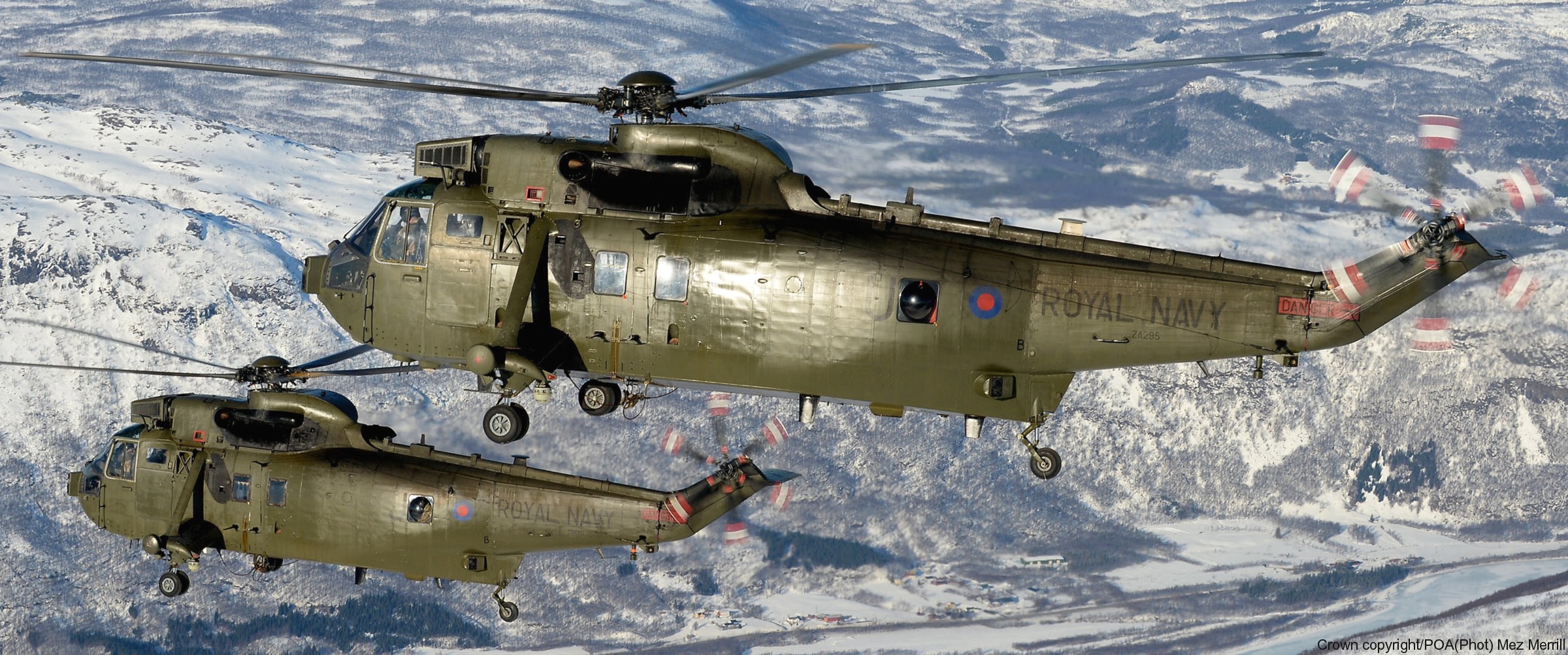 |
|
|
|
The Westland WS-61 Sea King is a British
licence-built version of the American Sikorsky S-61 helicopter of
the same name, built by Westland Helicopters. The aircraft differs
considerably from the American version, with Rolls-Royce Gnome
engines (derived from the US General Electric T58), British-made
anti-submarine warfare systems and a fully computerised flight
control system. The Sea King was primarily designed for performing
anti-submarine warfare (ASW) missions. A Sea King variant was
adapted by Westland as troop transport known as the Commando. In British service, the Westland Sea King provided a wide range of services in both the Royal Navy and the Royal Air Force. As well as wartime roles in the Falklands War, the Gulf War, the Balkans conflict, the Iraq War and the Afghanistan War, the Sea King is perhaps most well known in its capacity as a Royal Navy Search and Rescue (red and grey livery) and RAF Search and Rescue Force (yellow livery) helicopter. The Sea King was also adapted to meet the Royal Navy's requirement for a ship-based airborne early warning platform. On 26 September 2018, the last remaining Sea King variant in Royal Navy service was retired. Most operators have replaced, or are planning to replace, the Sea King with more modern helicopters, such as the NHIndustries NH90 and the AgustaWestland AW101. HeliOperations continue to operate two Mk 5 Sea Kings, based at RNAS Portland, training Federal German Navy pilots. Design and development: Origins: Westland Helicopters, which had a long-standing licence agreement with Sikorsky Aircraft to allow it to build Sikorsky's helicopters, extended the agreement to cover the Sikorsky SH-3 Sea King soon after the Sea King's first flight in 1959. Westland proceeded to independently develop the Sea King, integrating a significant proportion of components from British suppliers; key changes include the use of a pair of Rolls-Royce Gnome turboshaft engines and the implementation of an automatic flight control system. On this matter, authors Jim Thorn and Gerald Frawley stated that: "Despite appearances, Westland's Sea King [is a] very different aircraft from Sikorsky's". Many of the differences between the Westland-built Sea King and the original helicopter were as a result of differing operational doctrine. While the U.S. Navy Sea Kings were intended to be under tactical control of the carrier from which they operated, the Royal Navy intended its helicopters to be much more autonomous, capable of operating alone, or co-ordinating with other aircraft or surface vessels. This resulted in a different crew arrangement, with operations being controlled by an observer rather than the pilot, as well as fitting a search radar. The Royal Navy selected the Sea King to meet a requirement for an anti-submarine warfare (ASW) helicopter to replace the Westland Wessex, placing an order with Westland for 60 SH-3D Sea Kings in June 1966. The prototype and three pre-production aircraft were built by Sikorsky at Stratford, Connecticut and shipped to the United Kingdom to act as trials and pattern aircraft. The first of the SH-3Ds was initially fitted with General Electric T58s and, after being shipped from the United States, was flown in October 1966 from the dockside at Avonmouth to Yeovil airfield. The other three were delivered from the docks, by road to Yeovil, for completion with British systems and Rolls-Royce Gnome engines. The first Westland-built helicopter, designated Sea King HAS1, flew on 7 May 1969 at Yeovil. The first two helicopters were used for trials and evaluation by Westland and the Aeroplane and Armament Experimental Establishment; subsequent production Sea Kings were delivered to the Royal Navy's 700 Naval Air Squadron from August 1969 onwards. By 1979, the Royal Navy had ordered 56 HAS1s and 21 HAS2s to meet the anti-submarine requirements, these were also configured for the secondary anti-ship role. The Westland Sea King was updated and adapted for numerous roles, subsequent variants include the HAS2, HAS5 and HAS6. Changes from initial production aircraft included an expansion of the cabin and upgraded engines. Commando and further developments: One of the most extensively modified variants was the Westland Commando, operated by the Royal Navy as the HC4. The Commando had capacity for up to 28 fully equipped troops and had originally been developed to meet an Egyptian Air Force requirement. Due to the deletion of the amphibious capability, not required in the Egyptian desert, the most noticeable change from the Sea King was the deletion of the side floats, the main undercarriage being carried on stub sponsons. An improved variant of the Egyptian Commando, with changes including the fitting of folding blades common to the ASW variants, was designated as the Sea King HC4 by the Royal Navy and all the aircraft were new build. First flying on 26 September 1979, due to its operational range of up to 600 nautical miles without refuelling, the HC4 'Commando' became an important asset for amphibious warfare and troop transport duties, in particular. Several Royal Naval Air Squadrons have operated the Commando variant, such as 845 Naval Air Squadron, 846 Naval Air Squadron and 848 Naval Air Squadron. In British service, the Sea King HC4 was deployed on operations in the Falklands, the Balkans, both Gulf Wars, Sierra Leone, Lebanon and Afghanistan. Towards the end of the Sea King's operational life, several HAS6s were repurposed by the removal of the ASW equipment, as troop transports. In 2010, the last of the UK's converted ASW Sea Kings to troop transports were retired. In the 1970s, Westland's experience with the Sea King led the company to conduct the British Experimental Rotor Program (BERP), in coordination with the Royal Aircraft Establishment, which applied innovations in composite materials and new design principles to the helicopter rotor. Initial trials carried out with active Sea Kings found several advantages to the BERP rotor, including a longer fatigue life and improved aerodynamic characteristics. Subsequent Westland helicopters, such as the record-breaking Lynx and the AgustaWestland AW101 Merlin, took advantage of BERP rotors for greater performance. Westland equipped later-built Sea Kings with the new composite rotors as well. Westland has produced a total of 330 Sea Kings; export customers include the Indian Naval Air Arm, the German Navy, the Royal Australian Navy, and the Royal Norwegian Air Force. The last of the Royal Navy's Sea Kings in the ASW role was retired in 2003, being replaced by the AgustaWestland Merlin HM1. The Sea King Airborne Surveillance and Control (ASaC) variant is expected to be replaced around the introduction of the two Queen Elizabeth-class aircraft carriers. The UK has also planned to retire the HC4 and search and rescue variants in March 2016. Airborne early warning (AEW): The Royal Navy's airborne early warning (AEW) capability had been lost when the Fairey Gannet aeroplane was withdrawn after the last of the RN's fleet carriers was decommissioned in 1978. During the Falklands War, a number of warships were lost and casualties suffered due to the lack of an AEW platform. The proposed fleet cover by the RAF Shackleton AEW.2 was too unresponsive and at too great a distance to be practical. Consequently, two Sea King HAS2s were modified in 1982 with the addition of the Thorn-EMI ARI 5980/3 Searchwater LAST radar attached to the fuselage on a swivel arm and protected by an inflatable dome. This allowed the radar to be lowered below the fuselage during flight and for it to be raised for landing. These prototypes, designated HAS2(AEW), were both flying within 11 weeks and deployed with 824 "D" Flight on HMS Illustrious, serving in the Falklands after the cessation of hostilities. A further eight HAS2s were modified to a production standard, known as the AEW2. Two remained "fitted for but not with". These entered operational service in 1985, being deployed by 849 Naval Air Squadron. Three Sea King HAS5/6s were later converted as part of the ASaC Mk7 programme, bringing the Mk7 fleet to 13; still 3 below the requirement. The upgrade programme resulted in the Sea King AEW fleet being upgraded with a new mission system, Comms, NavAids, JTIDS, Active Noise Reduction and Videographic recording. The Mission System Upgrade (MSU) component (Radar and partial JTIDS integration) was based around the improved Searchwater 2000AEW radar, with an all-new Man-Machine Interface. This MSU component was later termed "Project Cerberus" by Thales, after successful integration was conducted by Westland and GEC-Marconi. This variant was initially referred to as the Sea King AEW7, but renamed ASaC7 just before In Service Date. (Airborne Surveillance and Control Mk.7). The main role of the Sea King ASaC7 is detection of low-flying attack aircraft; it also provides interception/attack control and over-the-horizon targeting for surface-launched weapon systems. In comparison to older versions, the new radar enables the ASaC7 to simultaneously track up to 400 targets, instead of an earlier limit of 250 targets. The effectiveness of the AEW7 was greatly increased via the addition of a Link 16 data link, allowing gathered radar information to be analysed and rapidly put to use by multiple allied platforms in range. The ASaC7s will remain in service until they are replaced under the "Crowsnest" programme; intended as a podded capability onboard Merlins. Previous proposed replacement programmes, Future Organic Airborne Early Warning (FOAEW) and MASC (Maritime Airborne Surveillance and Control) were initiated and then cancelled, due largely to the erroneous assumption that the entire ASaC Mk7 system could simply be lifted and plugged into another aircraft type. However, as a result of the time gap between the planned out of service date of the Sea King in 2016, and the introduction of "Crowsnest" seven Sea King ASaC.7 helicopters will remain in service with the RN through to the second half of 2018. Operational history (UK): Falklands War: A number of Sea Kings were deployed during the Falklands War. They were transported to the combat zone and operated from the decks of various ships of the Royal Navy, such as the landing platform dock HMS Fearless. In the theatre, they performed a wide range of missions, from anti-submarine patrols and reconnaissance flights to replenishment operations and the insertion of special forces. Support provided by the Sea Kings in the form of transport for men and supplies has been viewed as vital to the success of the British operation. Sea Kings also protected the fleet by acting as decoys against incoming Exocet missiles, with some missions being flown by Prince Andrew, Duke of York. Anti-Submarine Sea Kings of 820 Naval Air Squadron were embarked in HMS Invincible. With 11 HAS.5s, the squadron operated anti-submarine and search and rescue sorties with one helicopter always airborne on surface search duties. On 14 June, an 820 NAS Sea King HAS.5 was used to transport Major General Jeremy Moore to Port Stanley to accept the surrender of Argentine troops on the island. The squadron flew 1,650 sorties during the war. A Flight of 824 Naval Air Squadron embarked two Sea King HAS.2As aboard RFA Olmeda and were used to move supplies to other ships on the way south and later anti-submarine patrols. C Flight had three Sea King HAS.2As on board RFA Fort Grange which were used for replenishment duties, supplying over 2,000 tons of stores. 825 Naval Air Squadron was formed for the war with 10 Sea King HAS.2s modified as utility variants to support ground forces. The anti-submarine equipment was removed and the helicopters fitted with troop seats. Two aircraft embarked in Queen Elizabeth 2 and were later used for moving troops from QE2 to other ships, the remainder embarked in Atlantic Causeway and were used for troop movements around the islands. Embarked in HMS Hermes was 826 Naval Air Squadron with nine HAS.5s, which carried out continuous anti-submarine sorties. From the departure of Hermes from Ascension in April until the Argentine surrender, the squadron operated at least three helicopters airborne continuously for fleet protection. On 23 April 1982, a Sea King HC4 was ditched while performing a risky transfer of supplies to a ship at night, operating from the flagship HMS Hermes. On 12 May, a Sea King operating from Hermes crashed into the sea due to an altimeter problem; all crew were rescued. On 19 May 1982 a Sea King, in the process of transporting SAS troops to HMS Intrepid from Hermes, crashed into the sea while attempting to land on Intrepid. Twenty-two men were killed and nine survived. Bird feathers were found in the debris, suggesting a bird strike, although the accident's cause is inconclusive. The SAS lost 18 men in the crash, their highest number of casualties on one day since the Second World War. The Royal Signals lost one man and the RAF one man. Gulf War: During the 1991 Gulf War Sea Kings from several nations, including Canada, Britain, and the U.S., were present in the coalition forces against Saddam Hussein's Iraq regime. Due to the threat of potential use of any Iraqi weapons of mass destruction, it was standard practice for Sea King crews to wear fully enclosed NBC (nuclear, biological, chemical) protective suits. Britain's Sea Kings primarily engaged in inter-ship transport duties, including ferrying troops between the fleet and land. Six Sea King Mk4 helicopters from 845 Naval Air Squadron and six of 848 Squadron, which had been reformed to meet this operational demand, worked in support of the ground advance. There was thorough radar coverage by U.S. airborne early warning and control (AWACS) aircraft; British AEW Sea Kings were not deployed. Following the end of hostilities, the available Sea Kings remained on deployment in the region to conduct transport missions to relocate people displaced by the conflict to refugee camps and repatriate citizens to their home countries. Balkans: The Sea King participated in the UN's intervention in Bosnia. 845 Naval Air Squadron and their Sea Kings had been dispatched to the region in late 1992 in response to escalating tensions in the region. They performed various logistical and transport missions, such as the repositioning of Royal Artillery L118 Light Guns in the region and in the evacuation of casualties. In one incident on 24 March 1993, during an attempt to establish an air evacuation route to a UN-declared safe zone, a flight of French Aérospatiale Pumas and Sea King HC4 helicopters were shelled while taking off from an improvised landing zone. Two further Sea Kings arrived to evacuate several UN casualties, managing to fly the wounded to the Bosnian city of Tuzla, where they came under further enemy fire while unloading. During NATO's intervention in Kosovo, Sea Kings of 814 Naval Air Squadron, operating from numerous Royal Navy vessels in the Adriatic, including the aircraft carrier HMS Invincible, maintained a patrol of the Balkans' coast. The Sea Kings were also heavily used in the transport role during the preparations for a ground invasion of Kosovo. 2000s: In 2000, Sea King HC.4s of 846 NAS participated in Operation Palliser in Sierra Leone. During the 2003 invasion of Iraq, multiple Sea King ASaC7 from 849 NAS were operated from HMS Ark Royal. On 22 March 2003, two AEW Sea Kings from 849 NAS operating from Ark Royal collided over the Persian Gulf, resulting in the death of seven personnel. A report into the collision called for Sea Kings to be outfitted with night vision goggles, as well as better onboard safety equipment, and recommended changes to procedure regarding the use of radar at night. In July 2006, Sea King HC.4 helicopters based at RNAS Yeovilton were temporarily deployed to Cyprus to assist in Operation Highbrow, the evacuation of British citizens from Lebanon. In October 2011, following several years of service in Afghanistan as troop transports for the International Security Assistance Force (ISAF) forces stationed there, the Sea King HC.4s returned to the UK; their replacement is the AgustaWestland AW101 Merlin. Between April 2009 and July 2011, the Royal Navy's Sea Kings stationed at Camp Bastion conducted over 1000 operational missions. The initial Afghan deployment had been criticised as the Sea Kings had not been fitted with protective Kevlar armour. Variants: Sea King HAS.1 The first anti-submarine version for the Royal Navy, with Gnome H.1400 engines, a five-bladed tail rotor, a Plessey Type 195 dipping sonar and MEL ARI 5995 search radar in a dorsal radome. The Westland Sea King HAS.1 first flew on 7 May 1969. 56 built, many of which were converted to HAS.2. Sea King HAS.2 Upgraded anti-submarine version for the Royal Navy, based on Australian Mk 50. More powerful Gnome H.1400-1 engines, six bladed tail rotor and upgraded avionics (including new Type 2069 dipping sonar), and improved navigation and communications equipment; 21 new build aircraft plus conversions from HAS.1s. Some were later converted for AEW (Airborne Early Warning) duties. Sea King AEW.2 Conversion of Sea King HAS.1 or HAS.2s into AEW aircraft after lack of AEW cover was revealed during the Falklands War. Fitted with Thorn EMI Searchwater radar in inflatable radome, with sonar removed. Normally flown with three person (pilot and two observers) crew compared with four-person crew for ASW Sea Kings. Nine converted. Sea King HC.4 Commando Commando assault and utility transport version for the Royal Navy, with simplified undercarriage, and lengthened cabin. Capable of transporting 28 fully equipped troops; 42 built. Sea King HAS.5 Upgraded anti-submarine warfare version for the Royal Navy, with longer range MEL Super Searcher radar in enlarged dorsal radome, new AQS902 acoustic processing system with provision to use sonobuoys. Entered service in June 1981; 30 new build aircraft plus about 55 converted from earlier versions. Some later converted into the HAR.5 for Search and Rescue. Sea King HAR.5 Conversion of HAS.5 to search and rescue role for the Royal Navy, with ASW equipment removed but retaining Sea Searcher radar. Sea King AEW.5 Four Sea King HAS.5s were converted into AEW helicopters for the Royal Navy. Sea King HU.5 Surplus HAS.5 ASW helicopters converted into utility role for the Royal Navy. Sea King HAS.6 Upgraded anti-submarine warfare version for the Royal Navy. fitted with improved avionics, with new sonar processor, improved tactical displays and better communications equipment; five new build aircraft plus conversions. Sea King HAS.6(CR) Five surplus HAS.6 ASW helicopters converted into the utility role for the Royal Navy. The last of the Royal Navy's HAS.6(CR) helicopters was retired from service with 846 NAS on 31 March 2010. Sea King ASaC7 Upgraded AEW2/5 for the Royal Navy with Searchwater 2000AEW replacing original Searchwater radar. Specifications (Sea King HAS.5): Crew: 2-4 Length: 55 ft 10 in (17.02 m) Height: 16 ft 10 in (5.13 m) Empty weight: 14,051 lb (6,373 kg) Gross weight: 21,000 lb (9,525 kg) Max takeoff weight: 21,400 lb (9,707 kg) Powerplant: 2 x Rolls-Royce H.1400-2 Gnome turboshaft engines, 1,660 shp (1,240 kW) each Main rotor diameter: 62 ft 0 in (18.90 m) Main rotor area: 3,020 sq ft (281 m2) Cruise speed: 112 kn (129 mph, 207 km/h) (max cruise at sea level) Range: 664 nmi (764 mi, 1,230 km) Rate of climb: 2,020 ft/min (10.3 m/s) Armament: 4 x Mark 44, Mark 46 or Sting Ray torpedoes, or 4 x Depth charges Provision for a door mounted machine gun of various calibers source: wikipedia |
| images |
|
Commando Assault and Utility Transport - Sea King HC.4 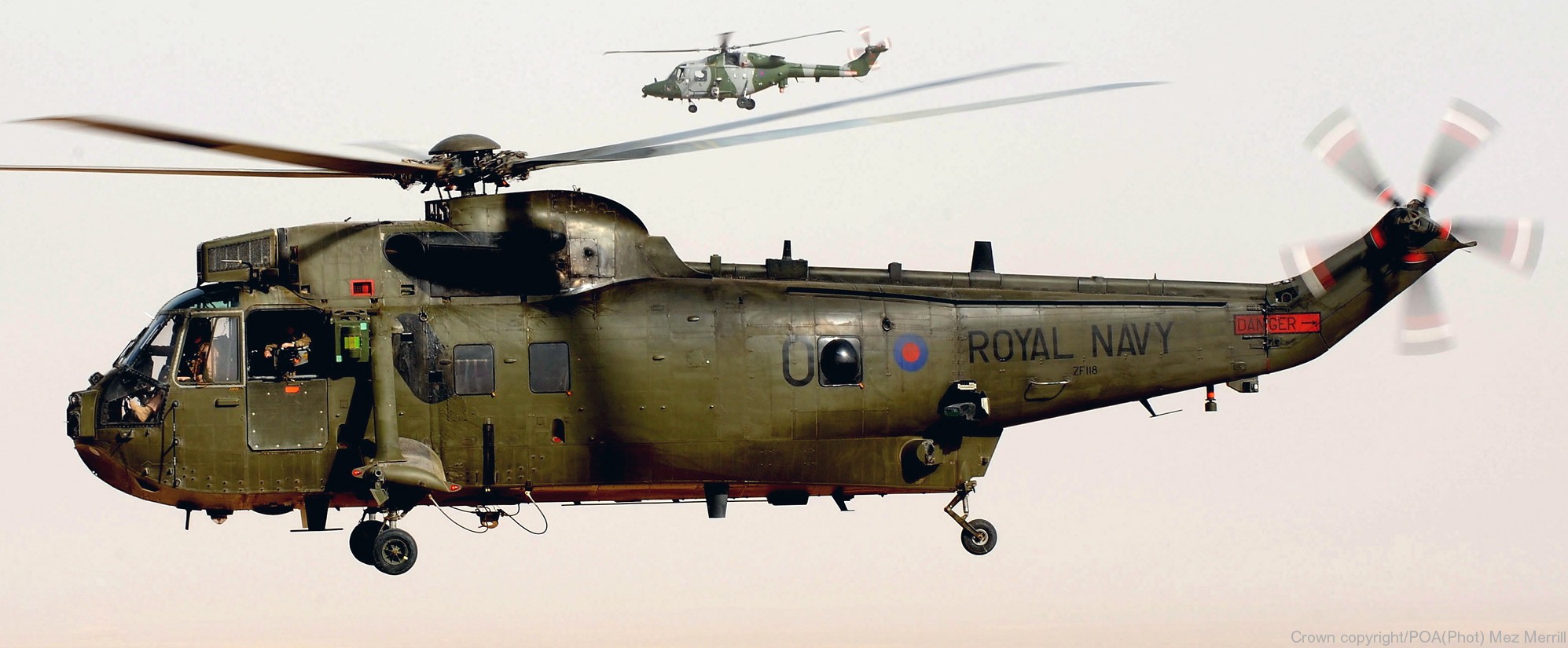 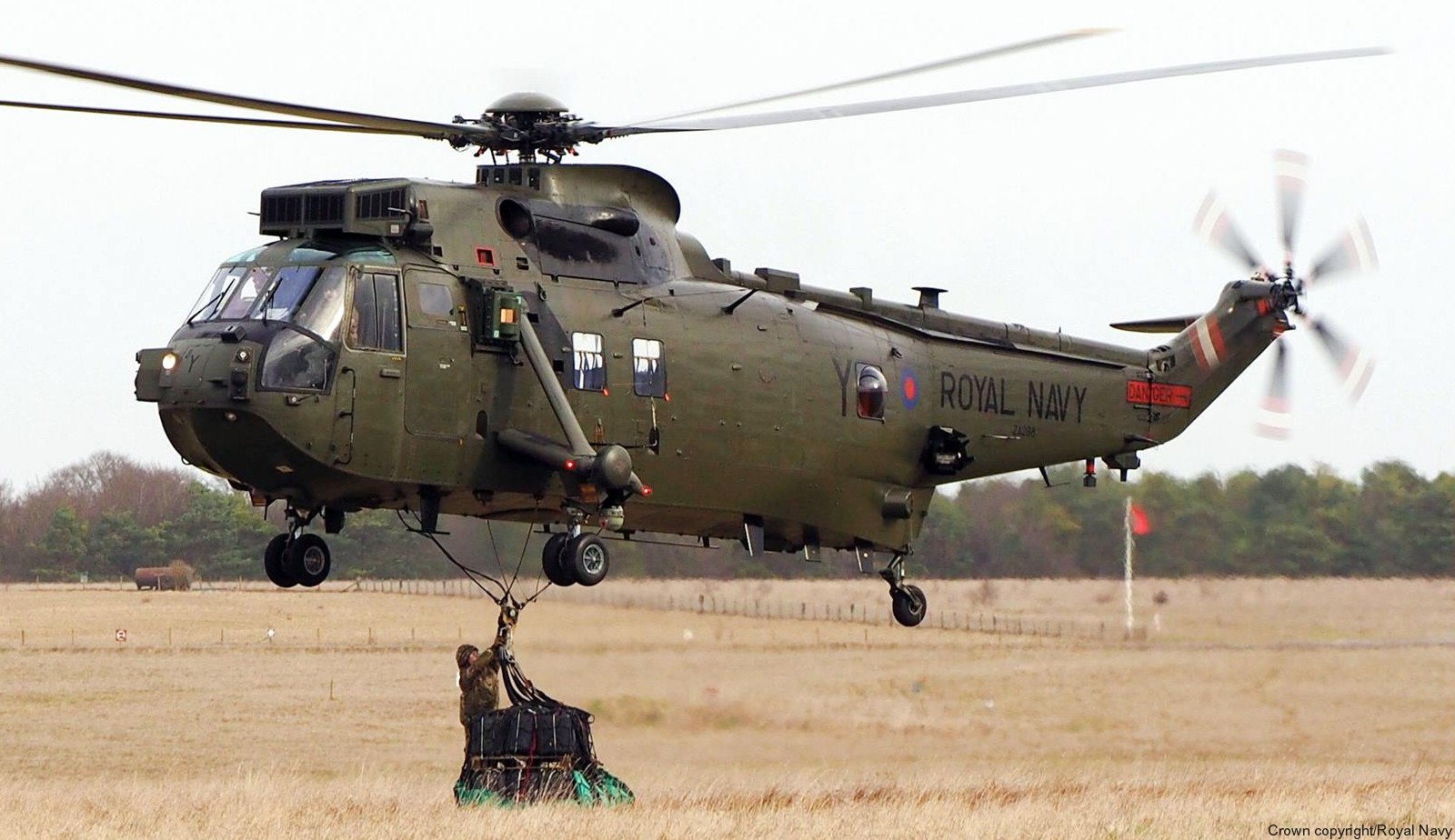 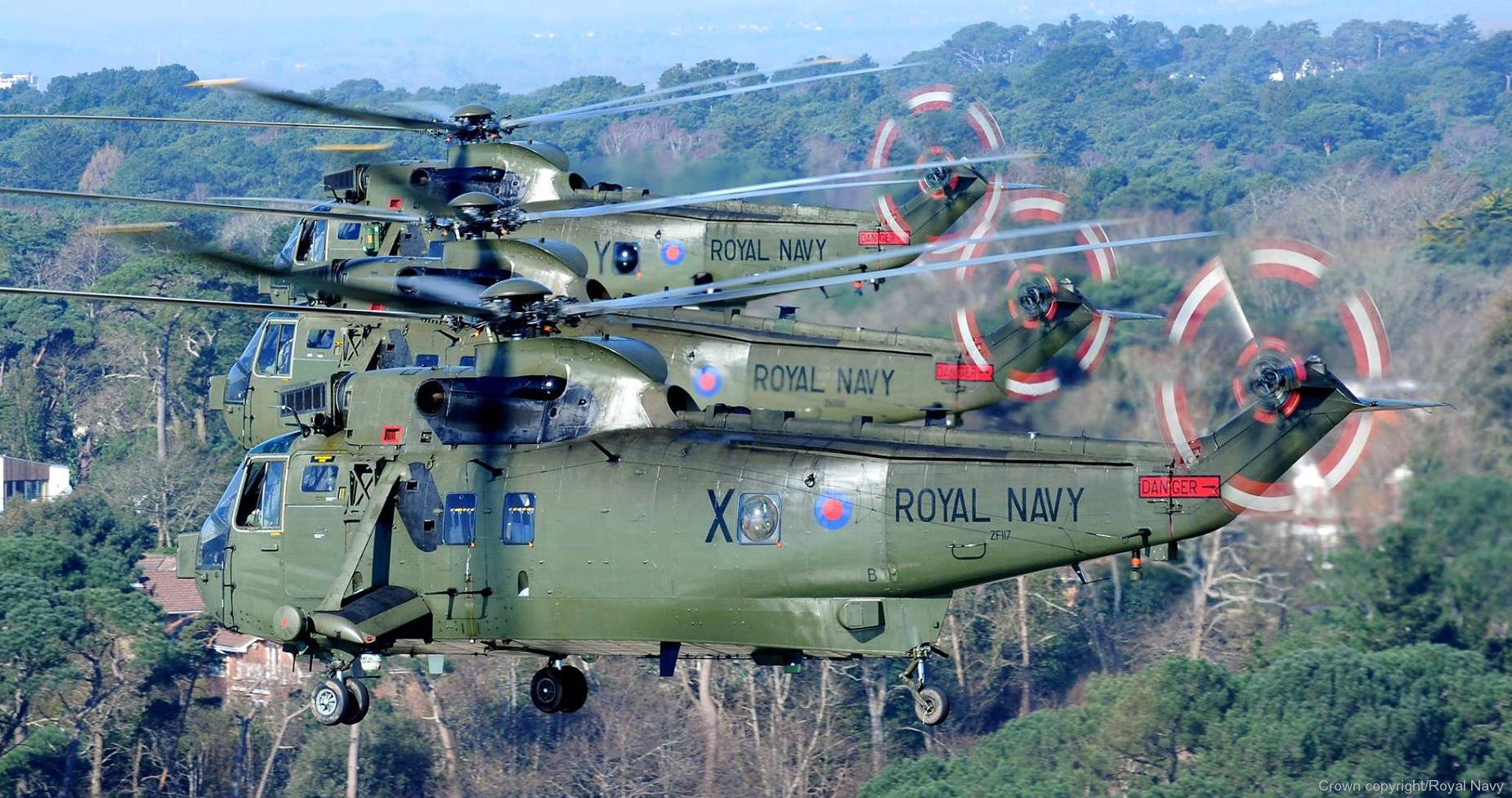 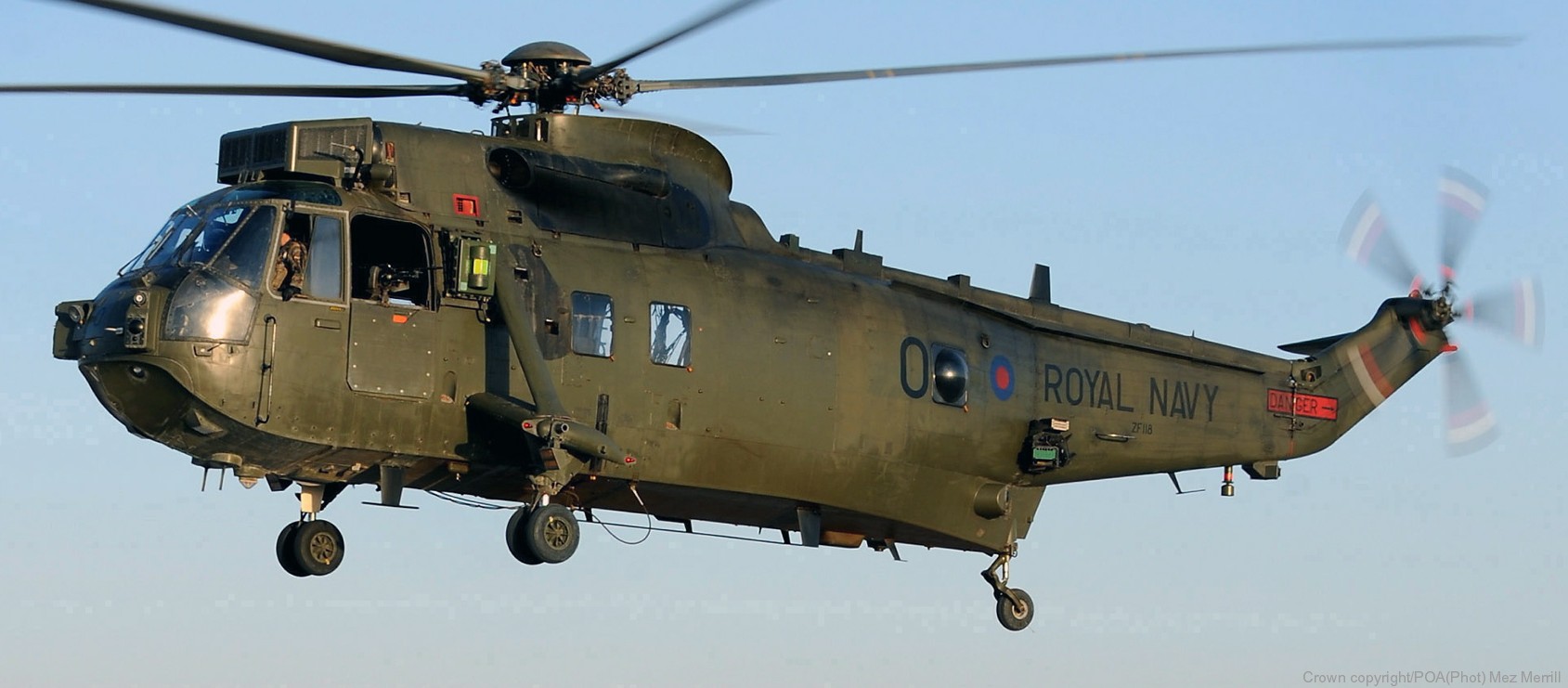  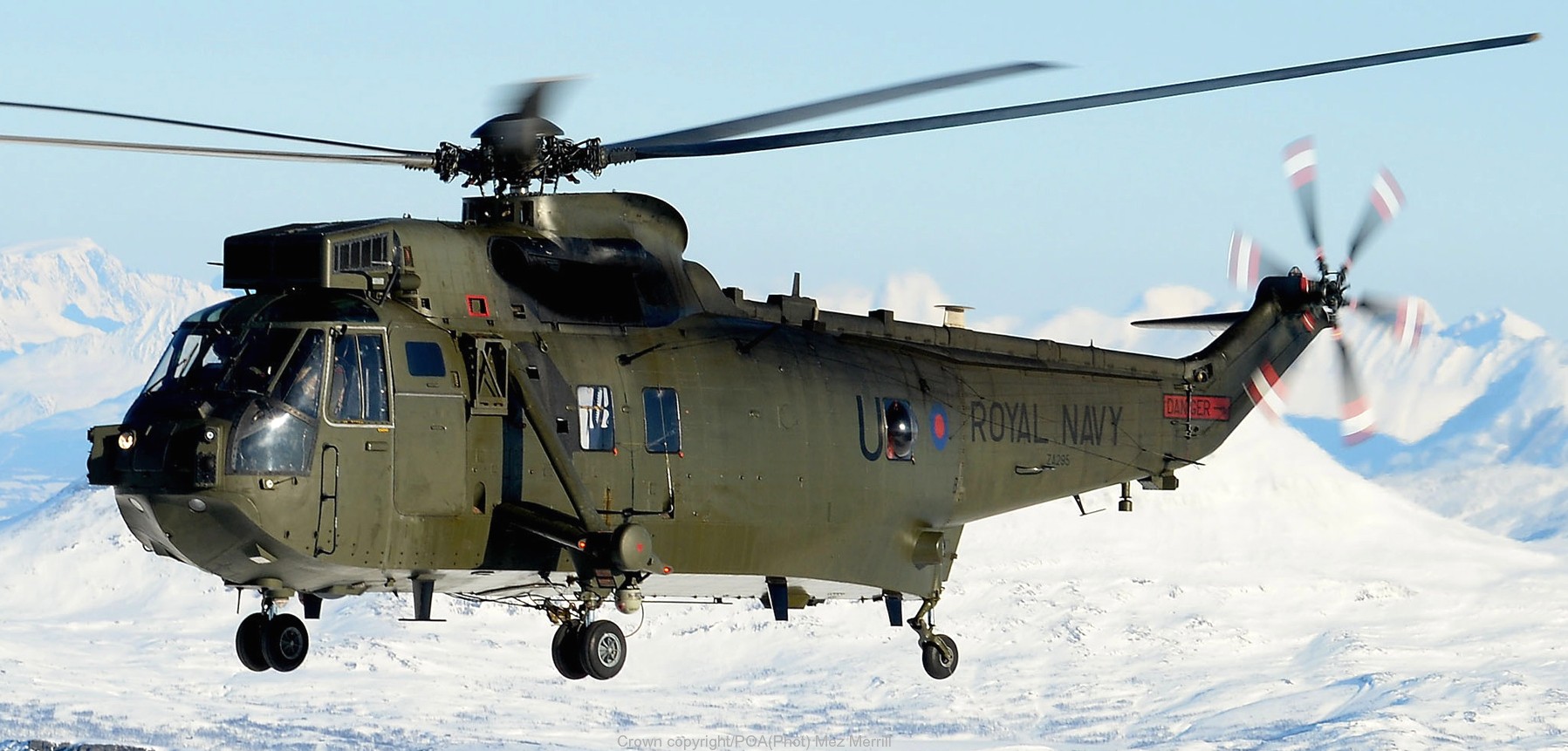 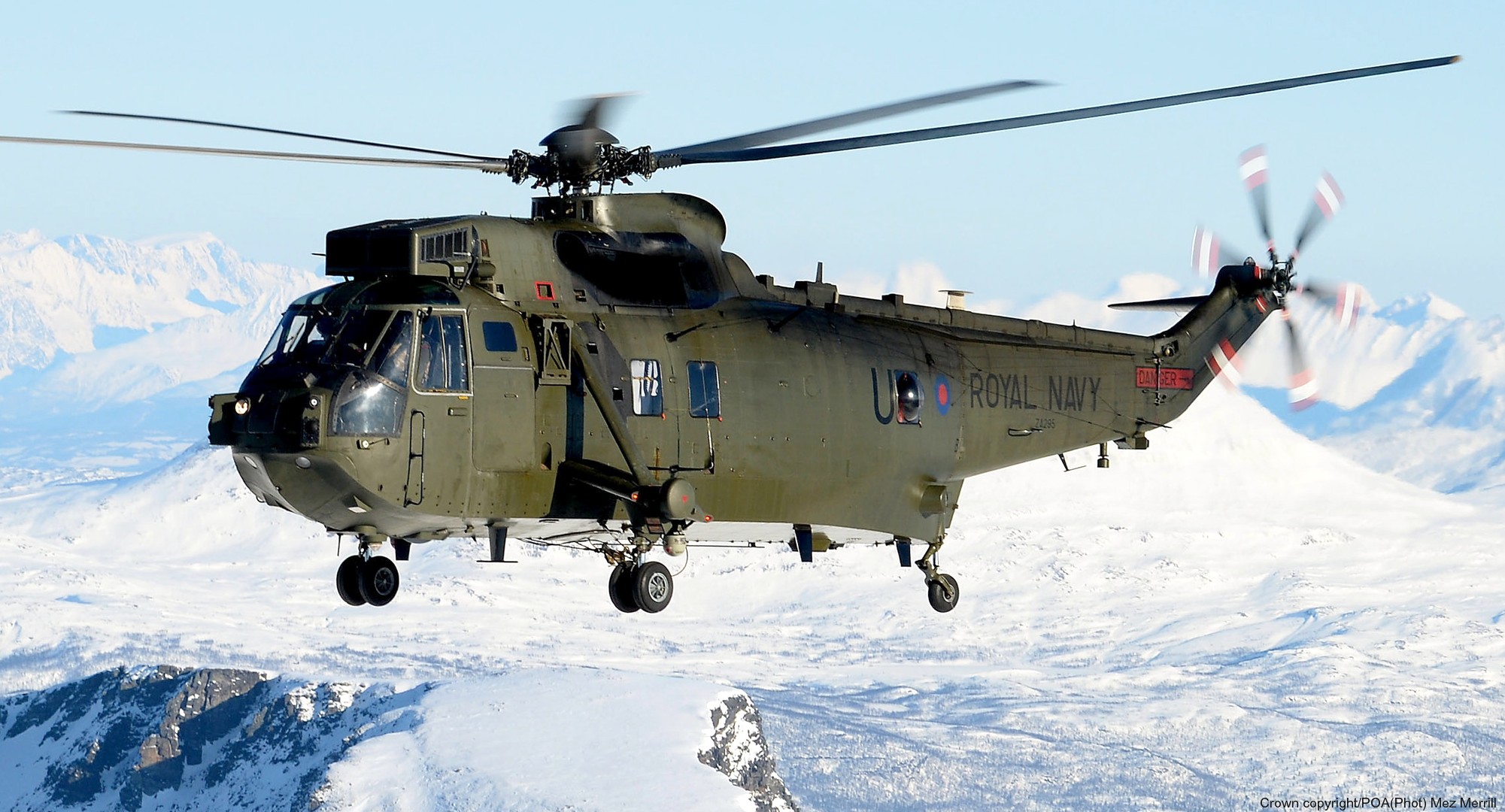 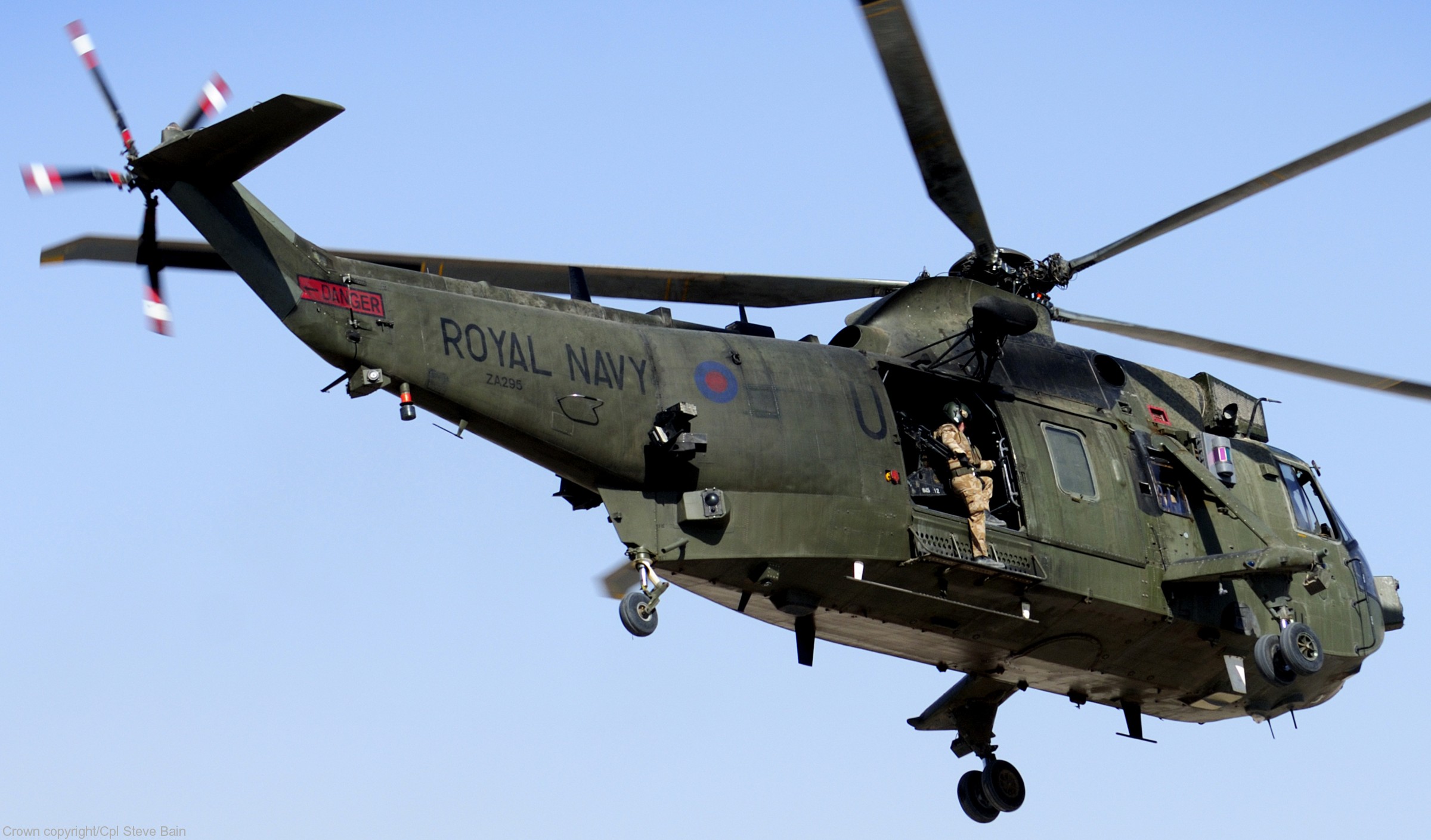 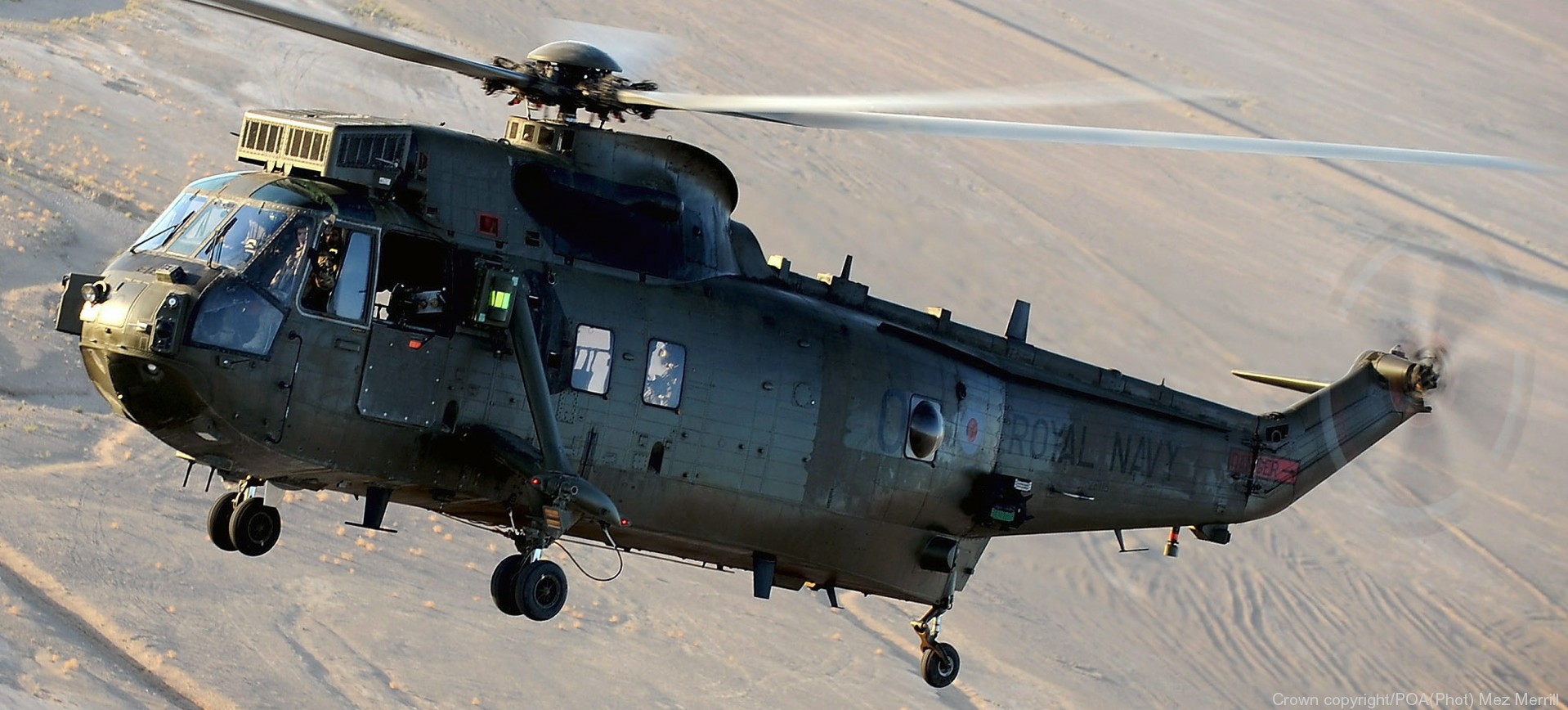 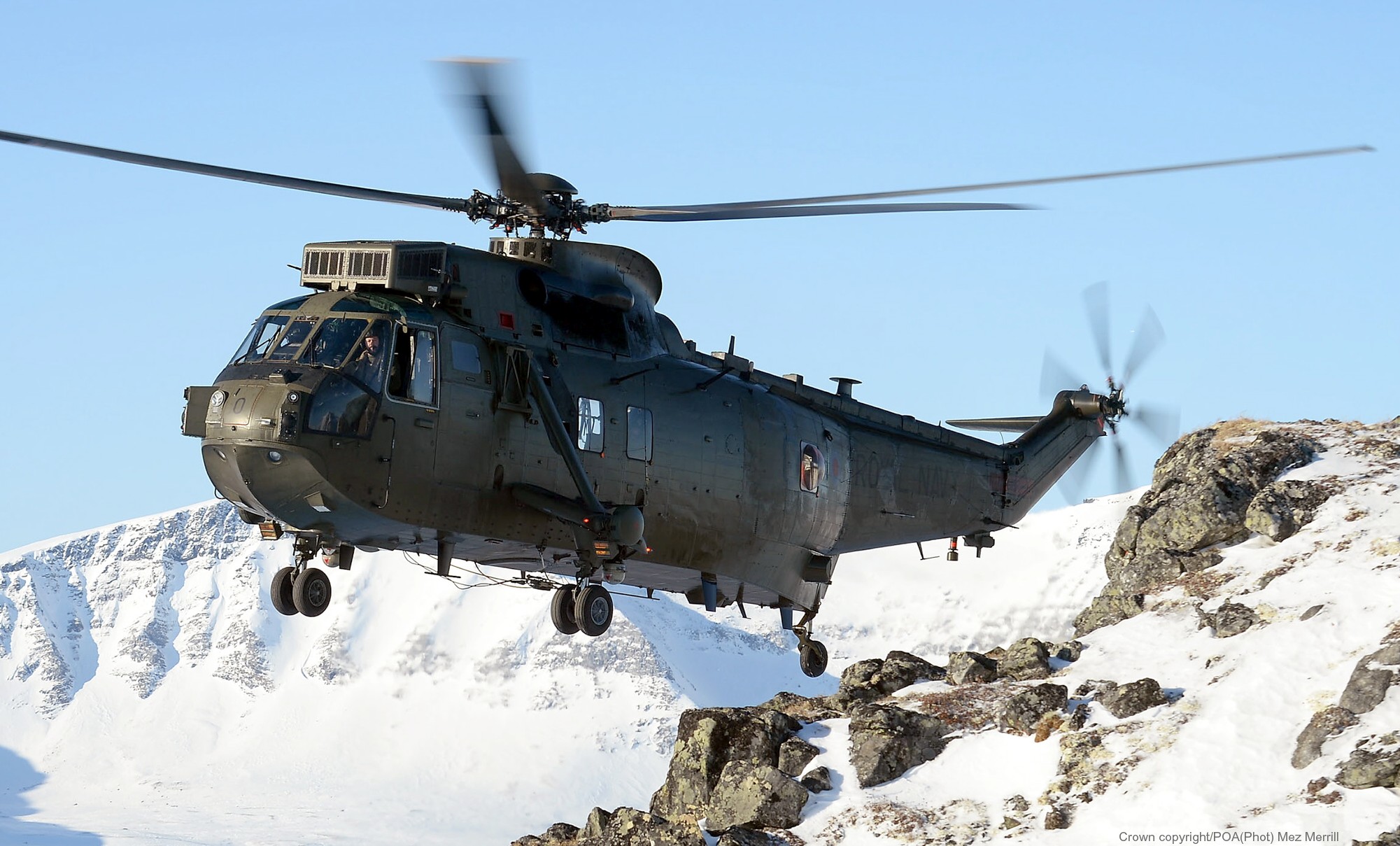 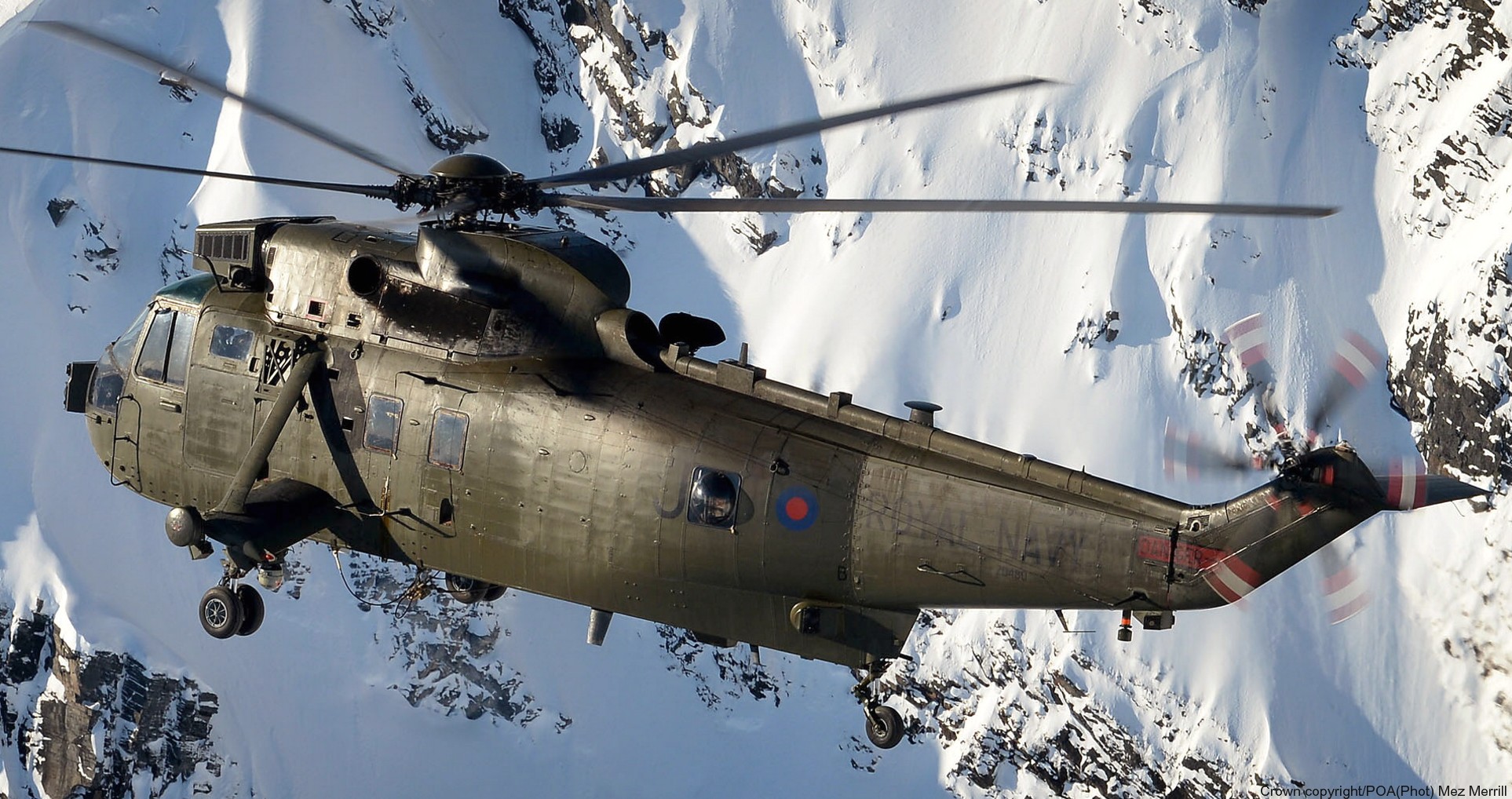 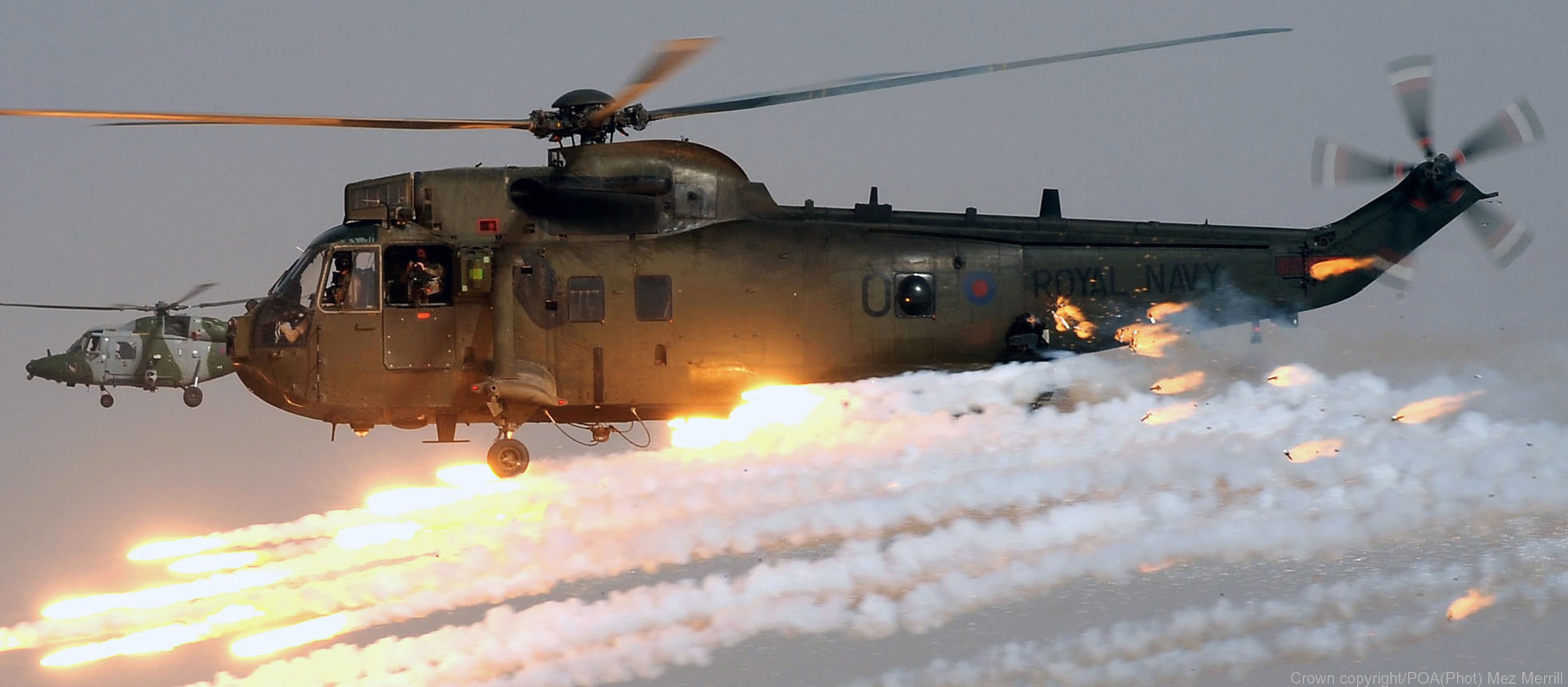 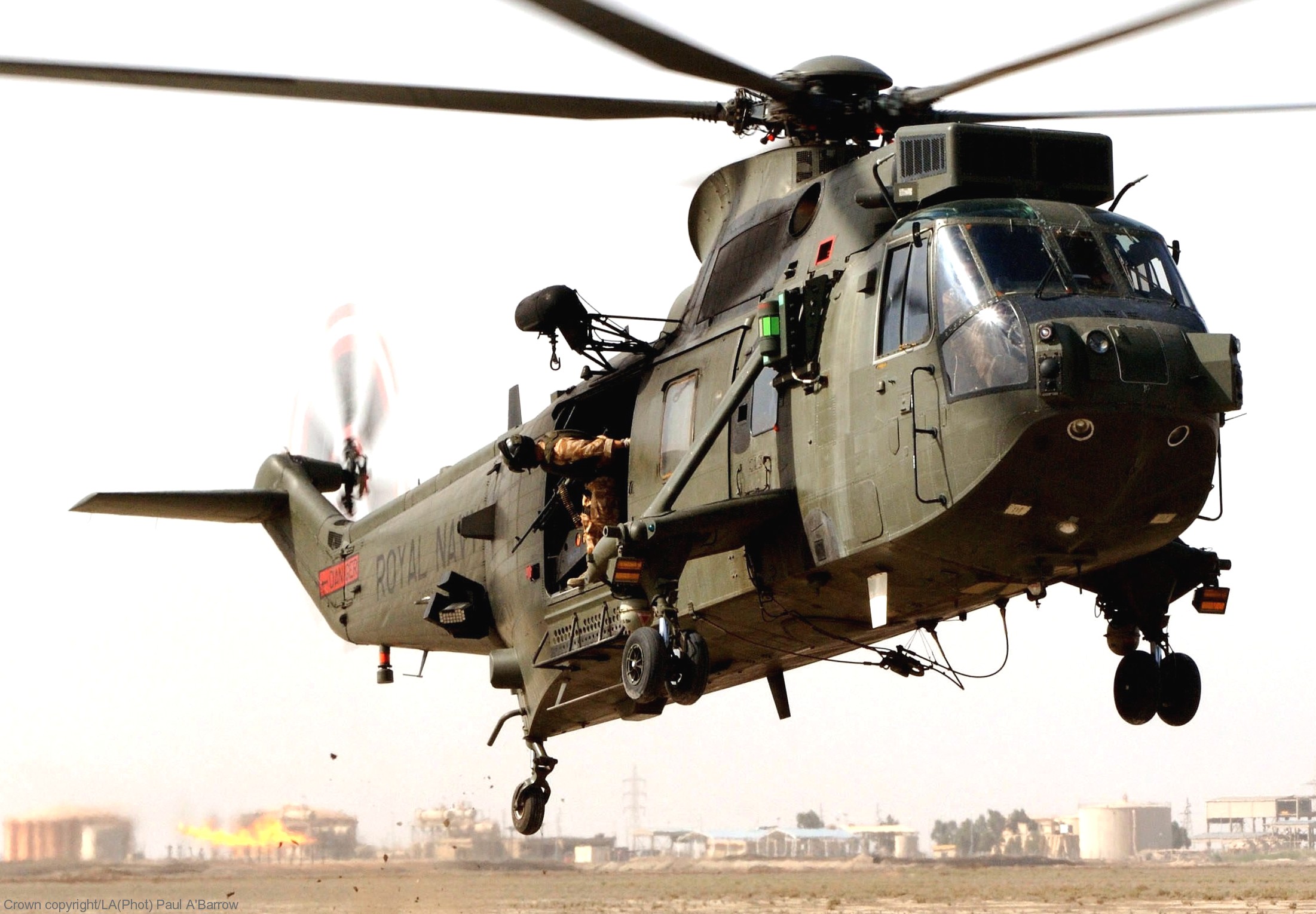 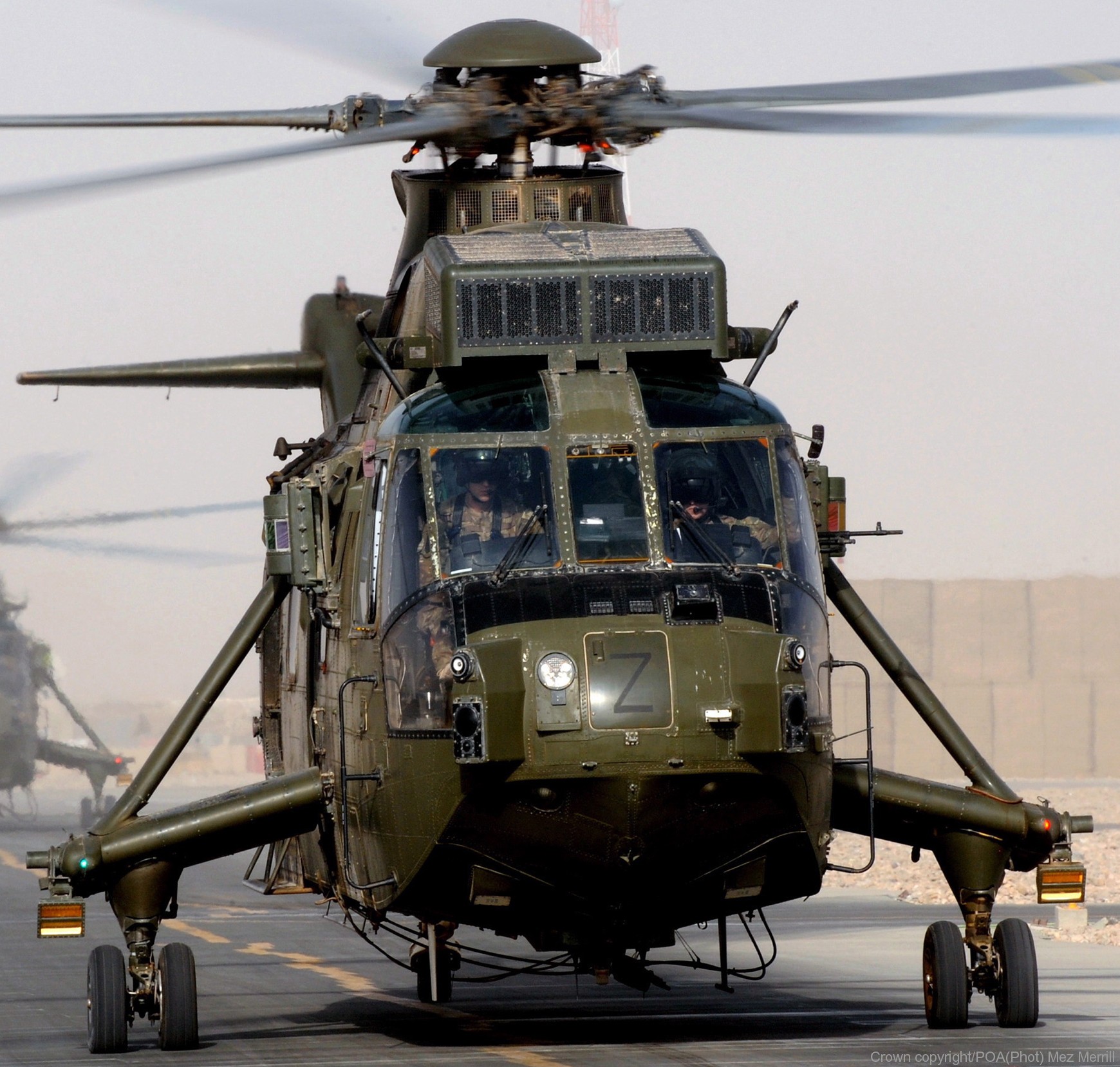 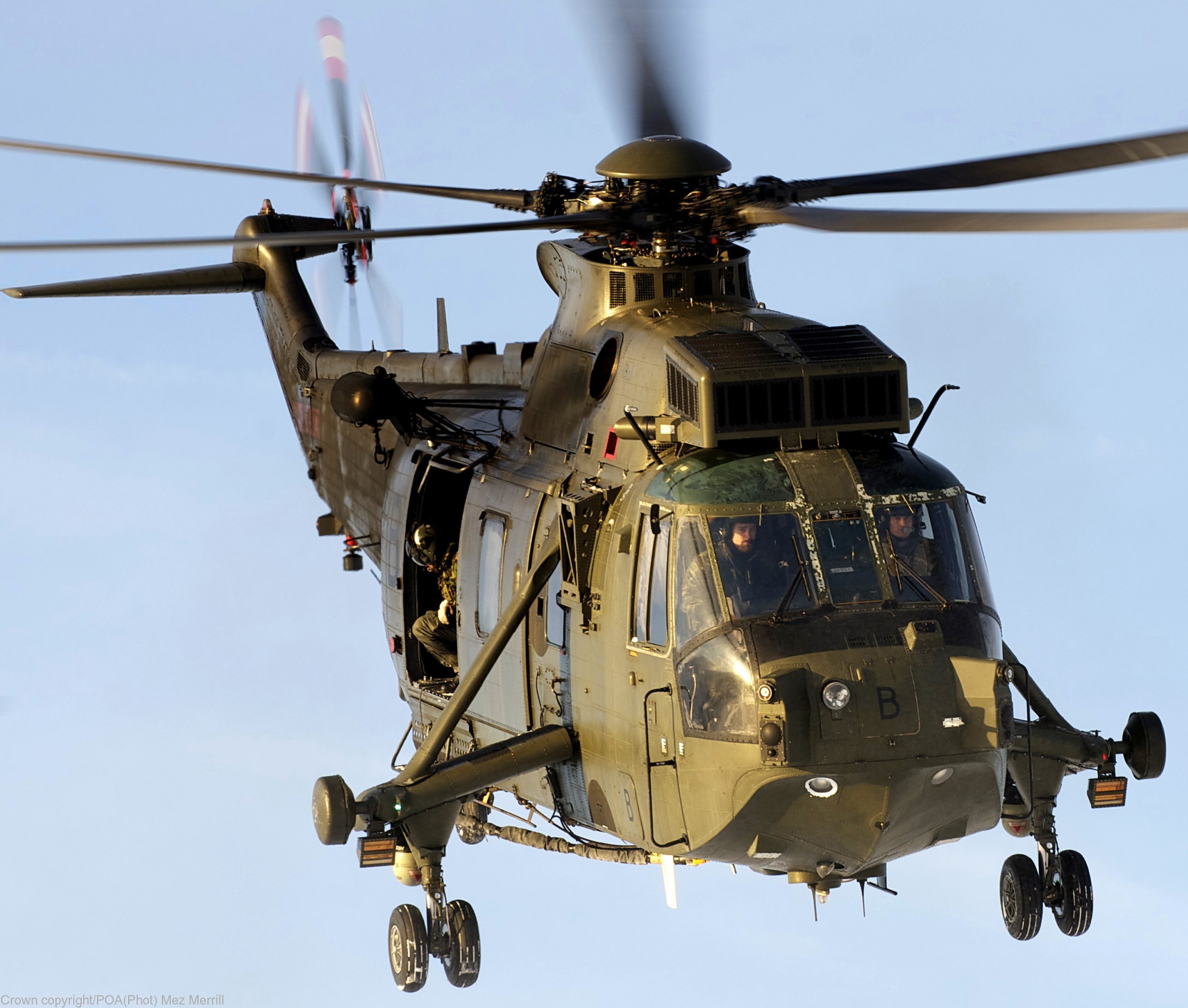 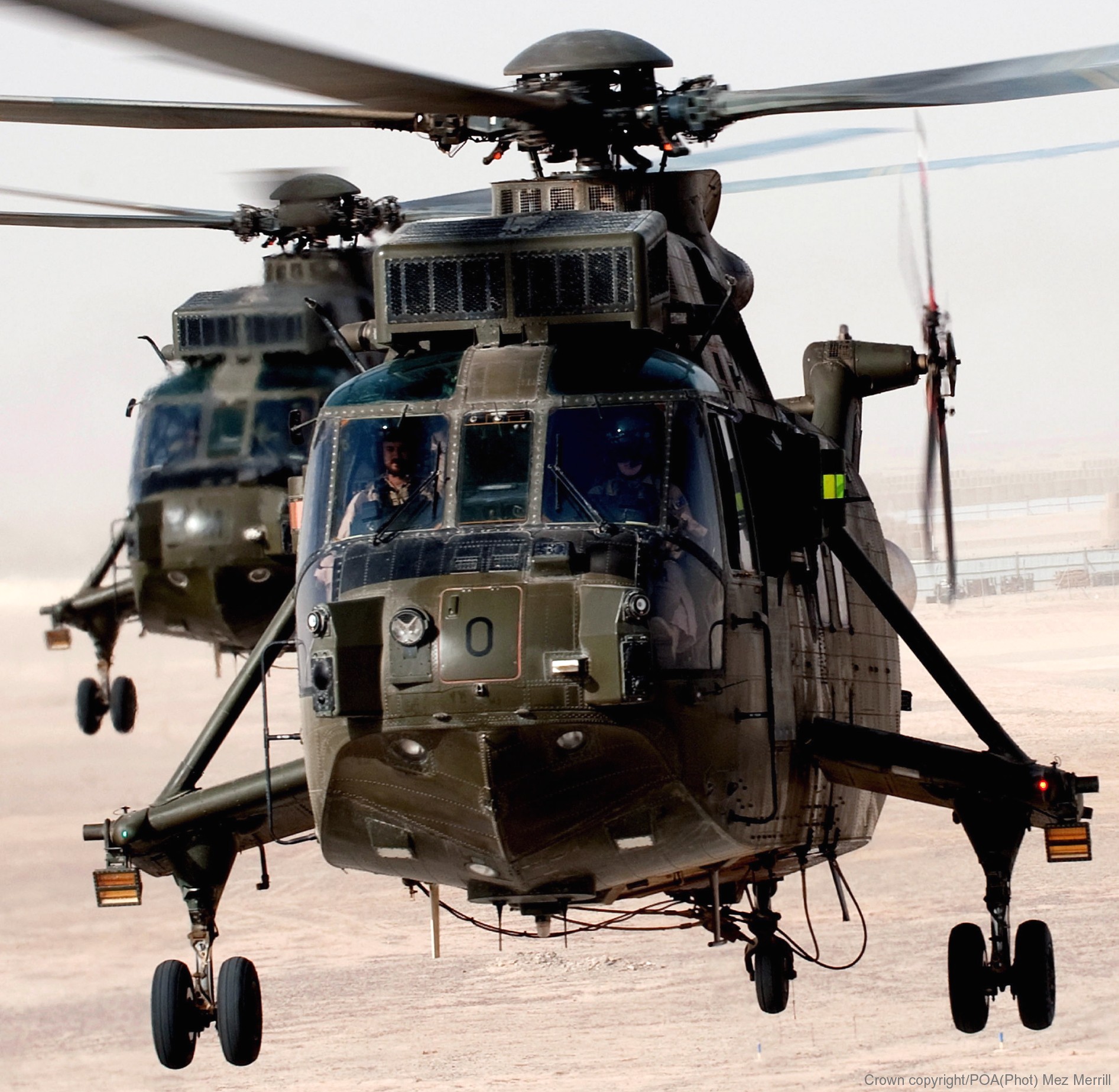 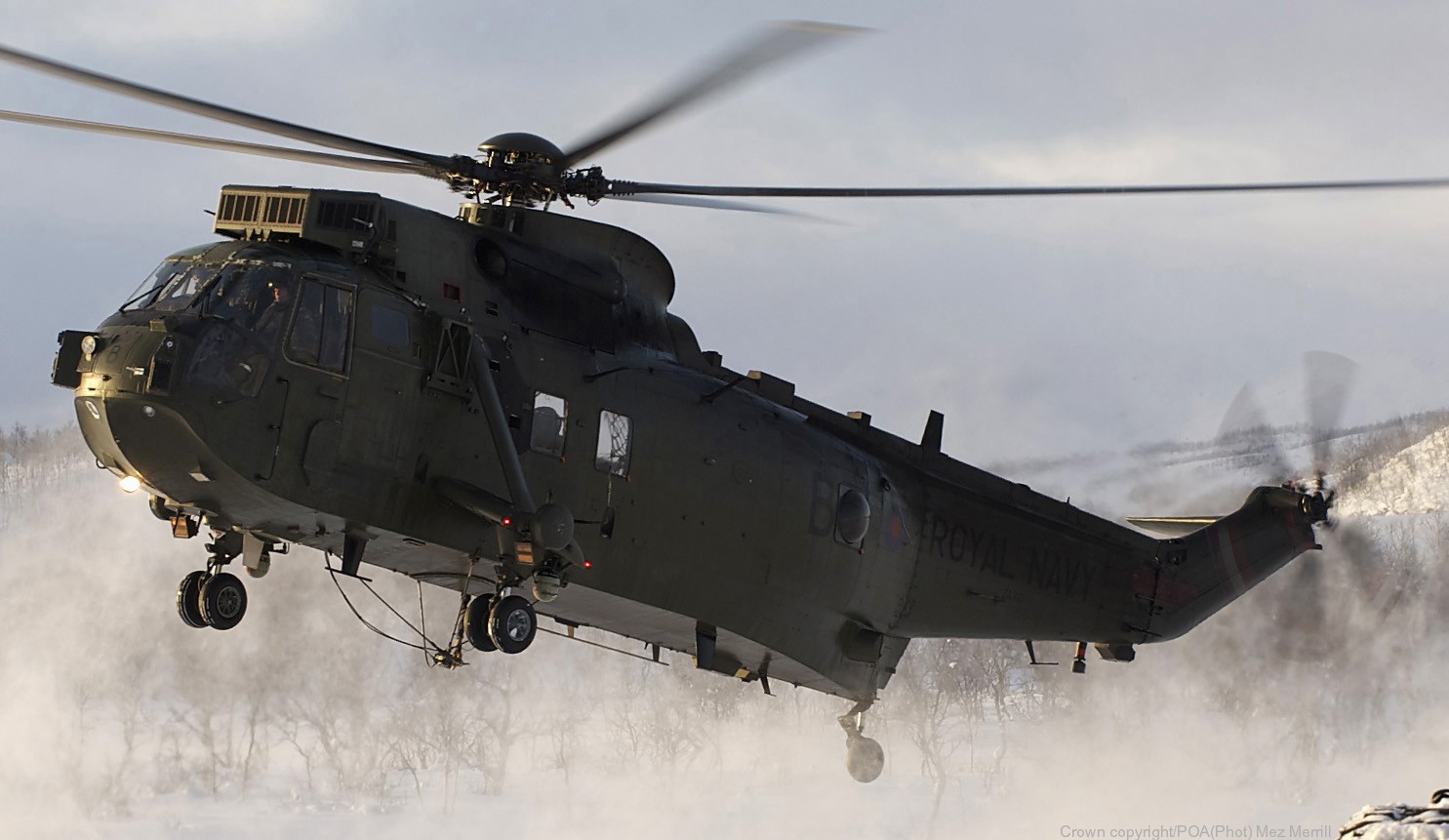 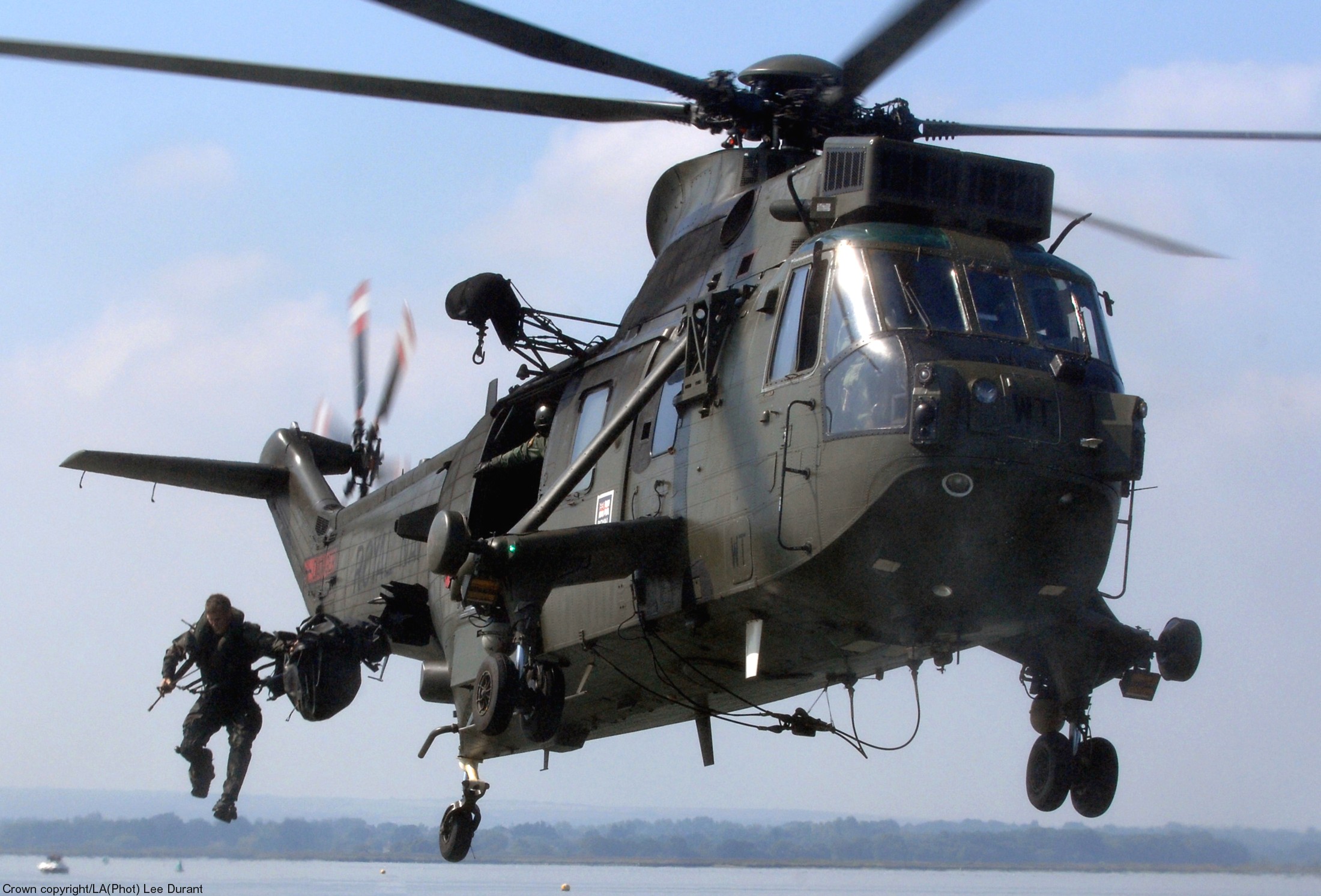 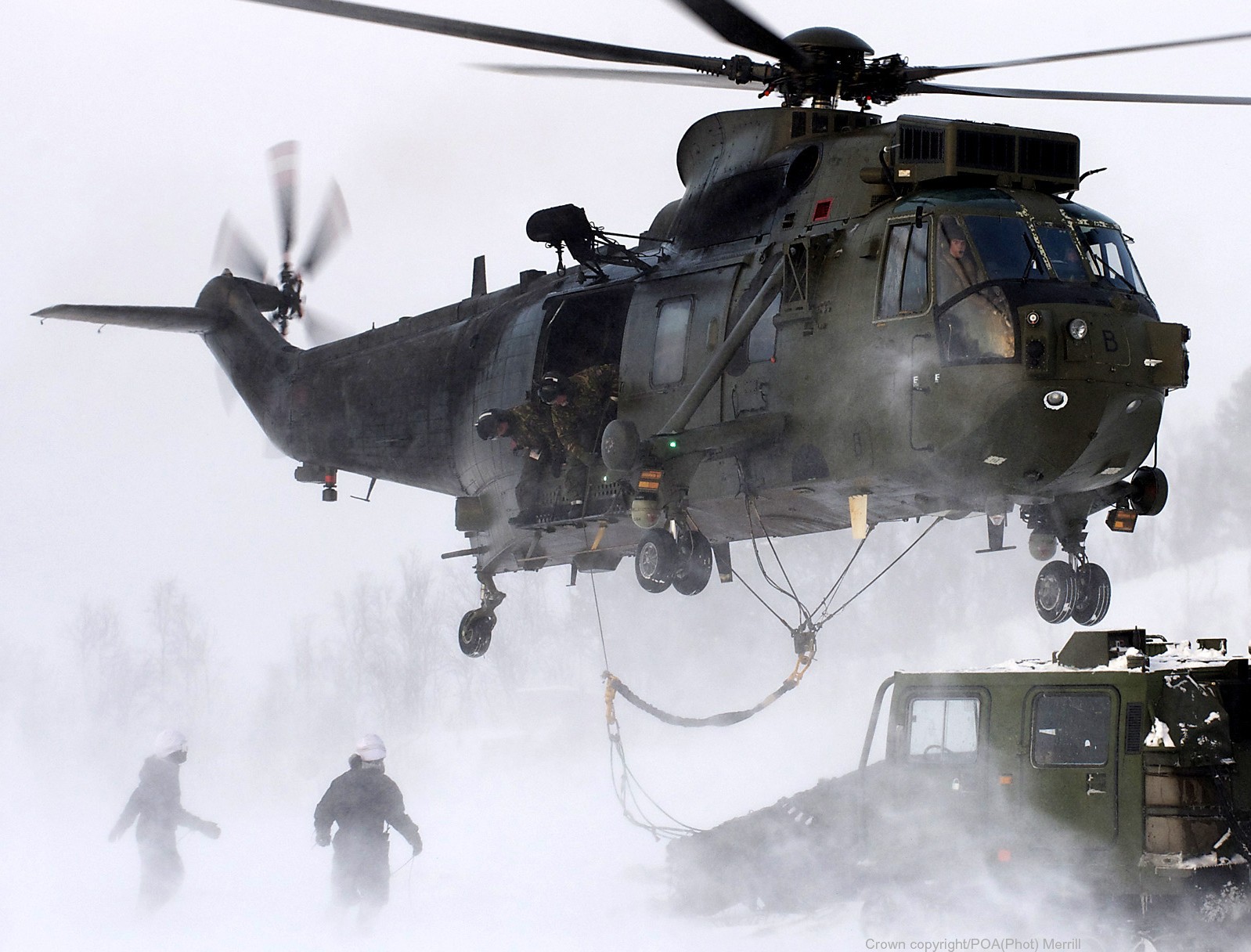 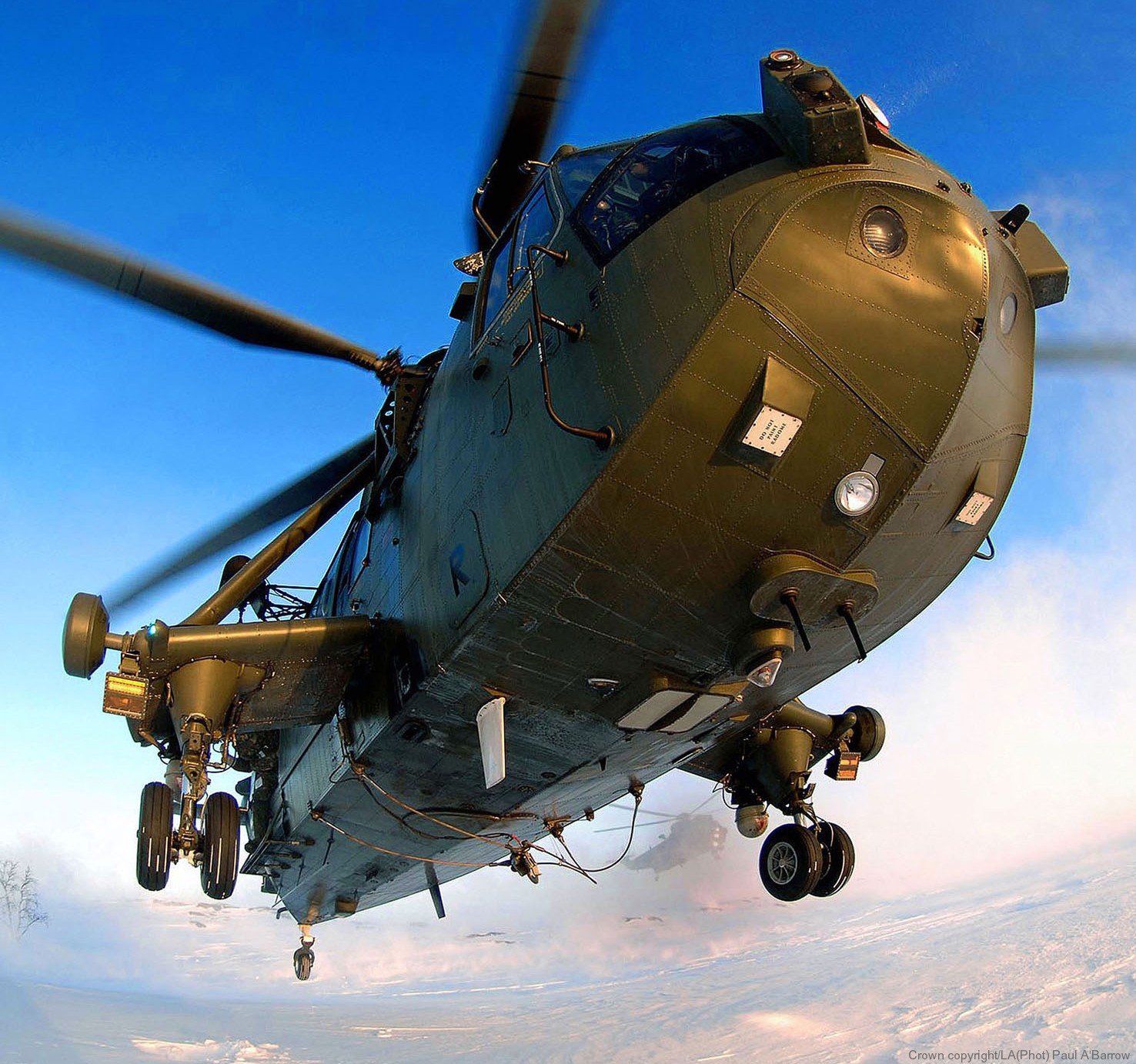 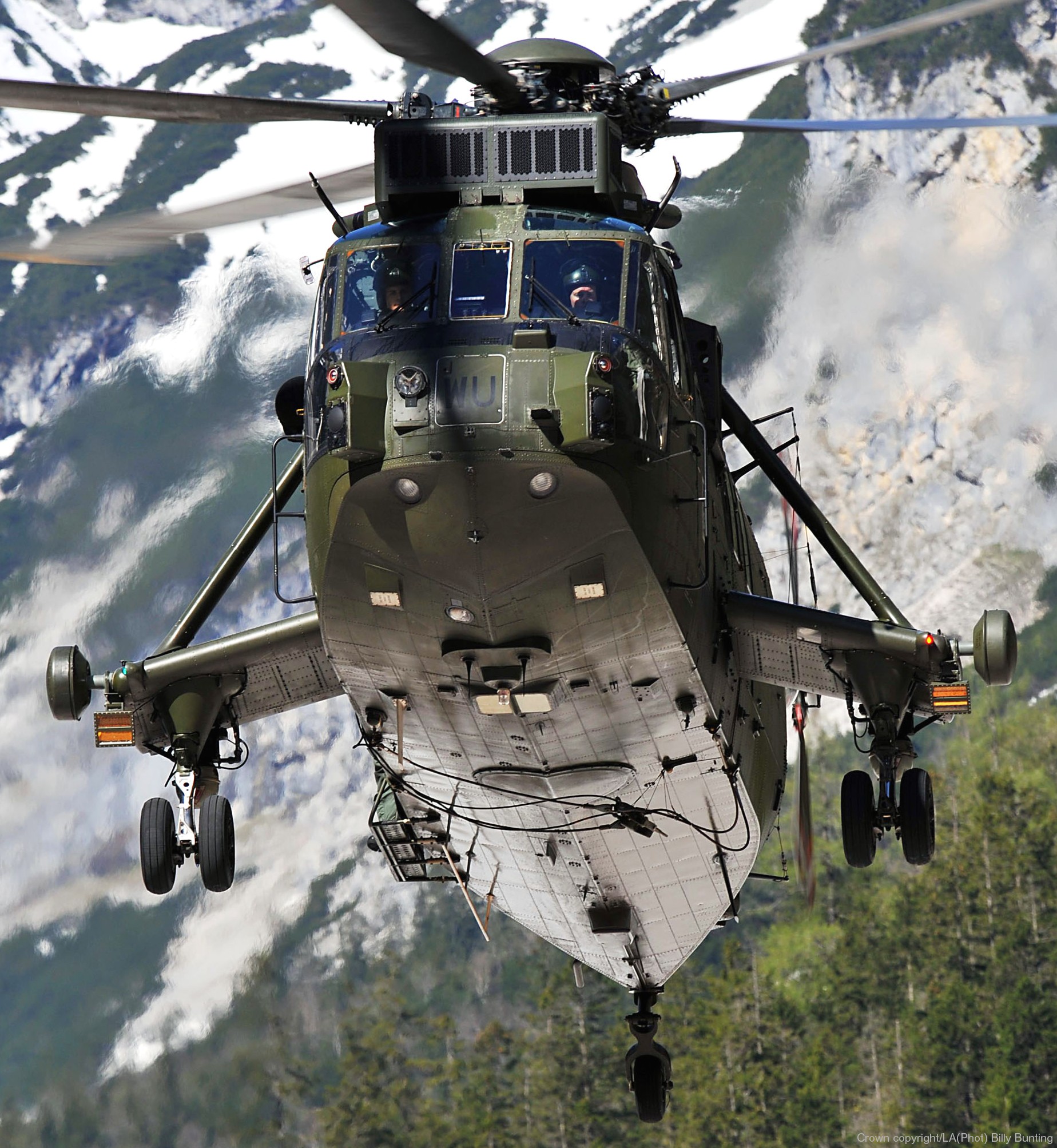 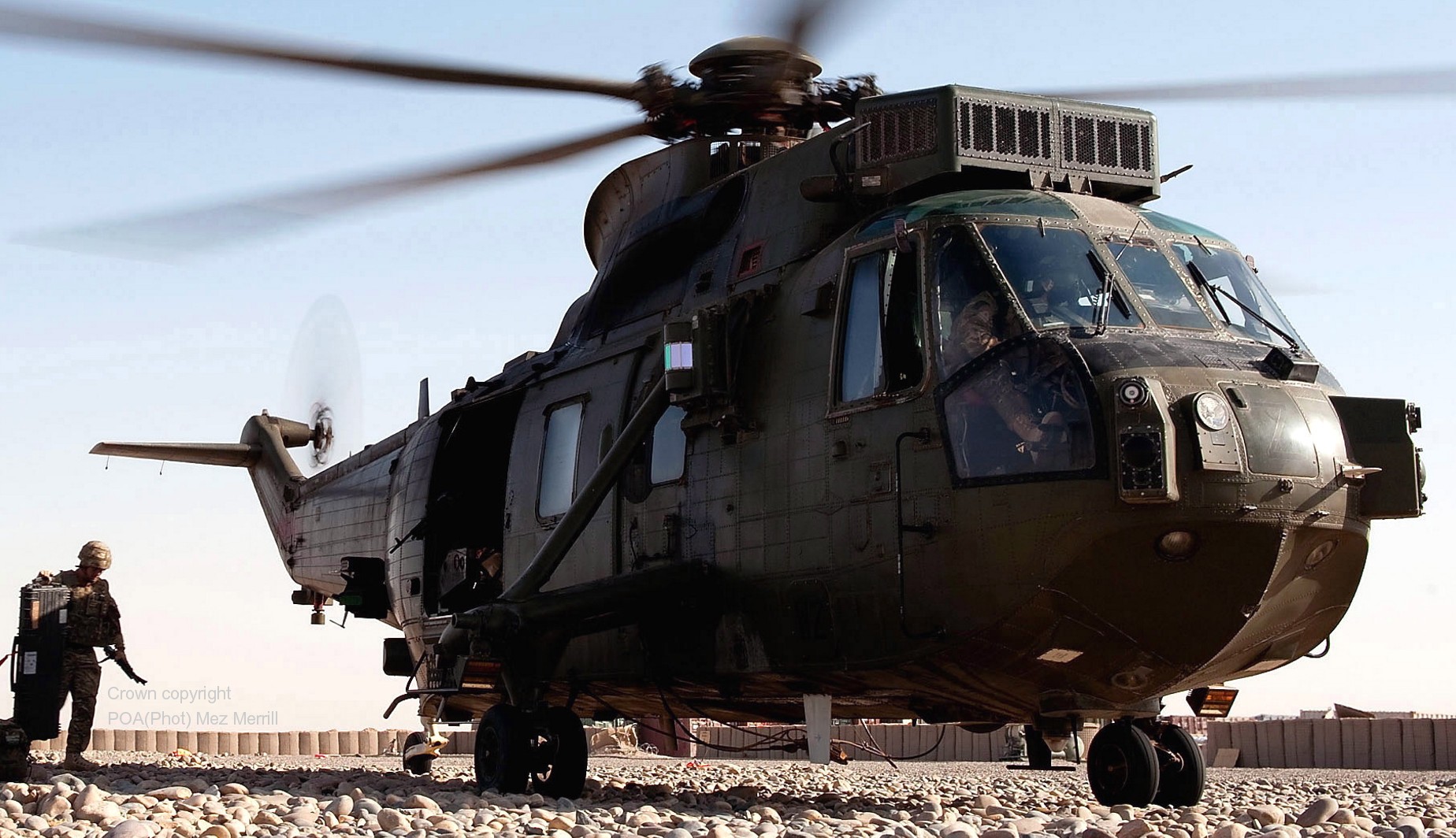 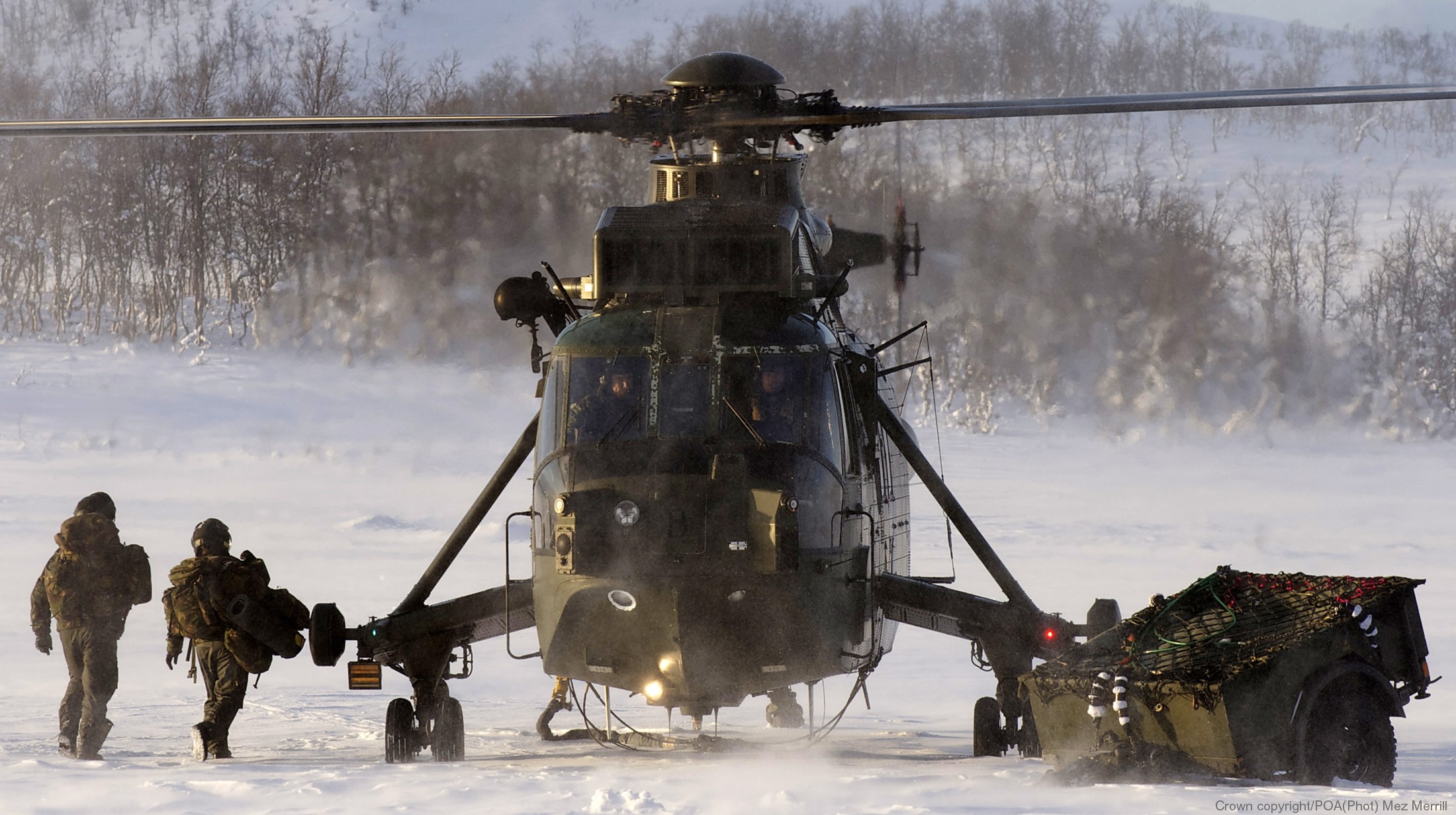 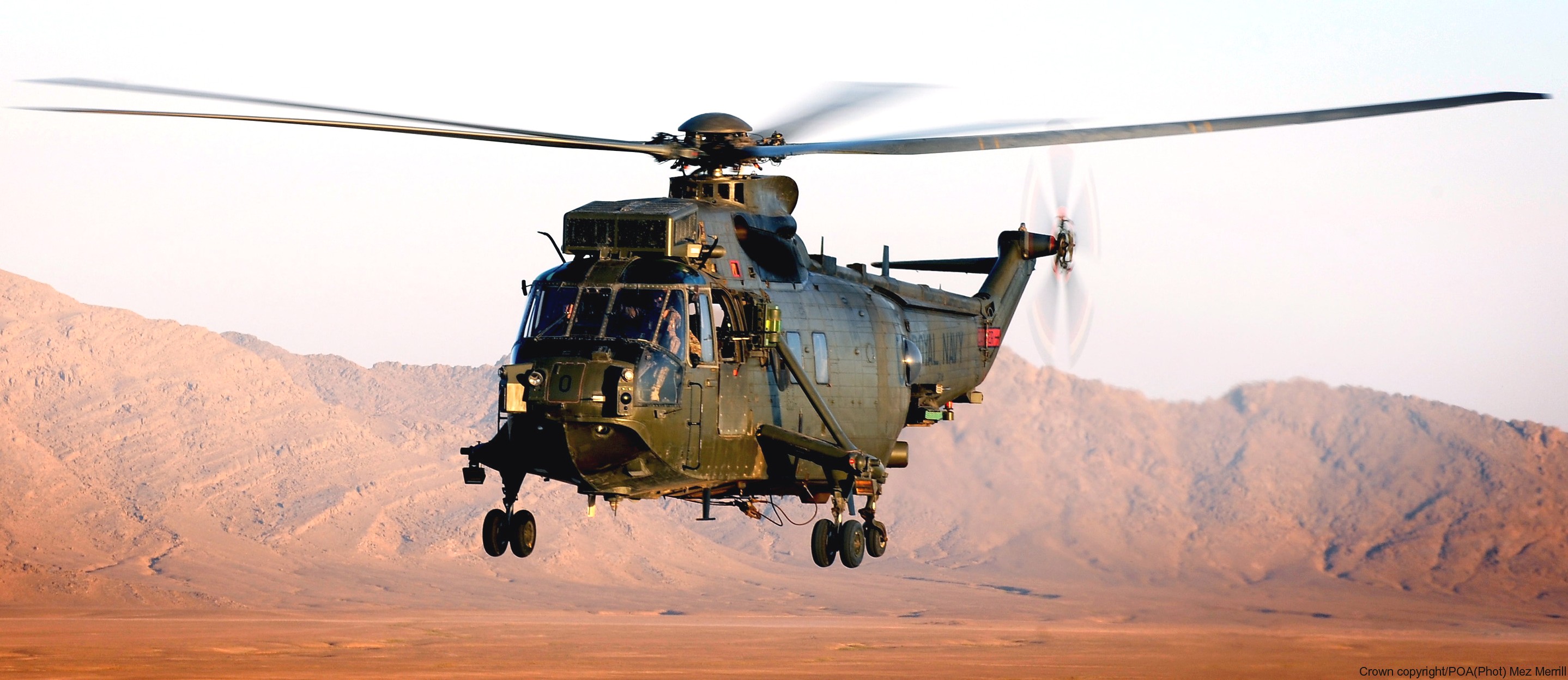 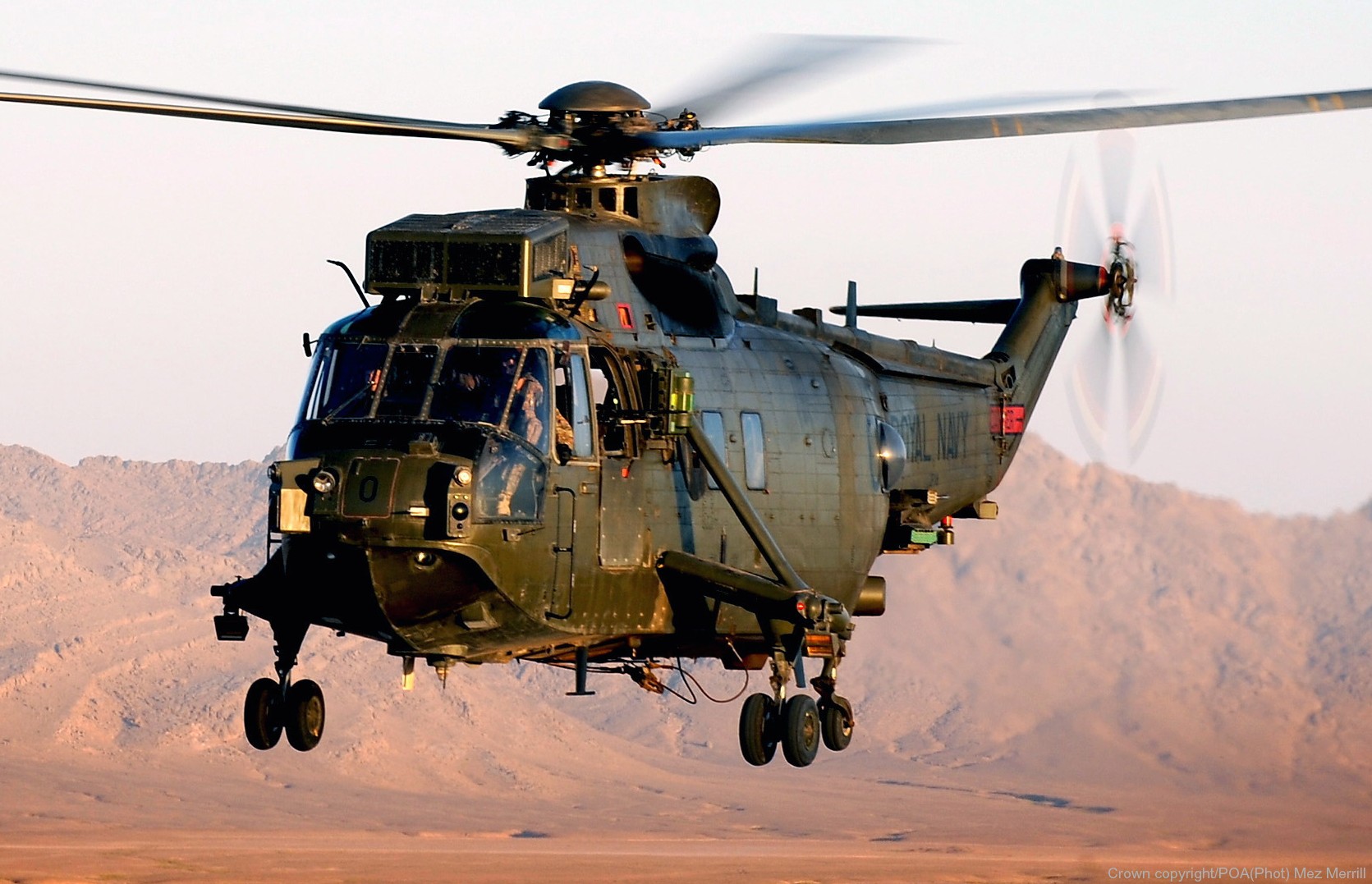 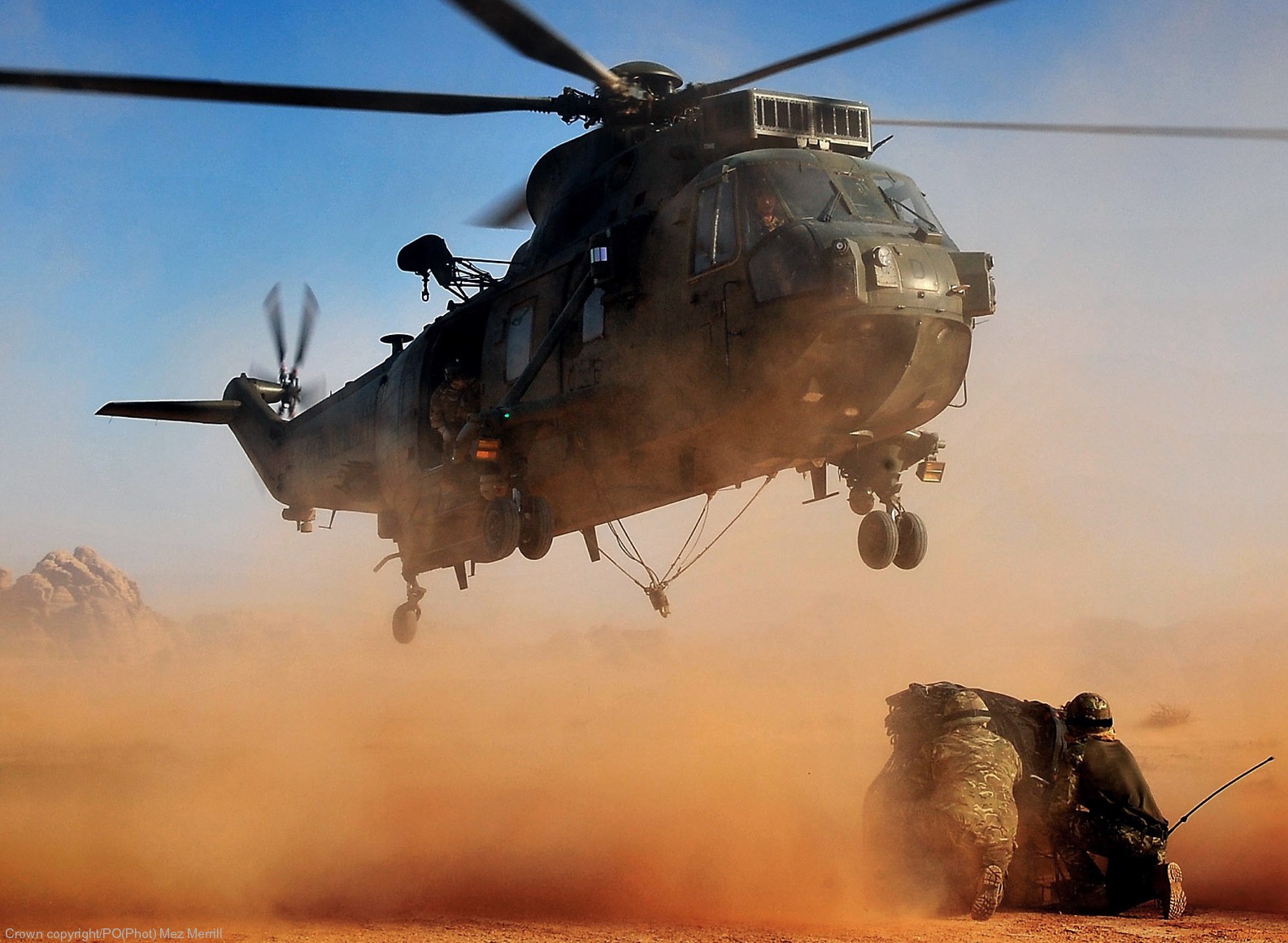 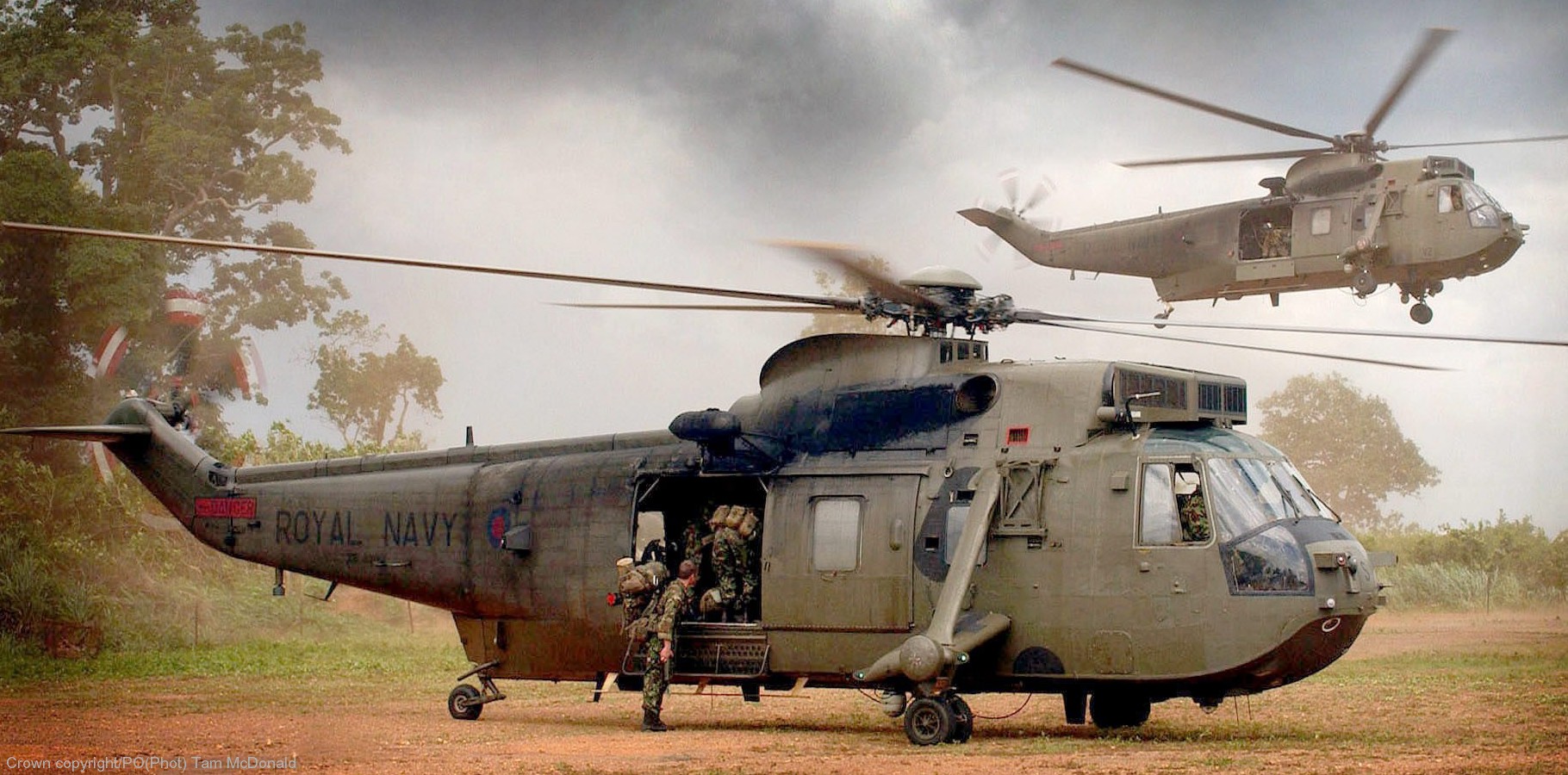 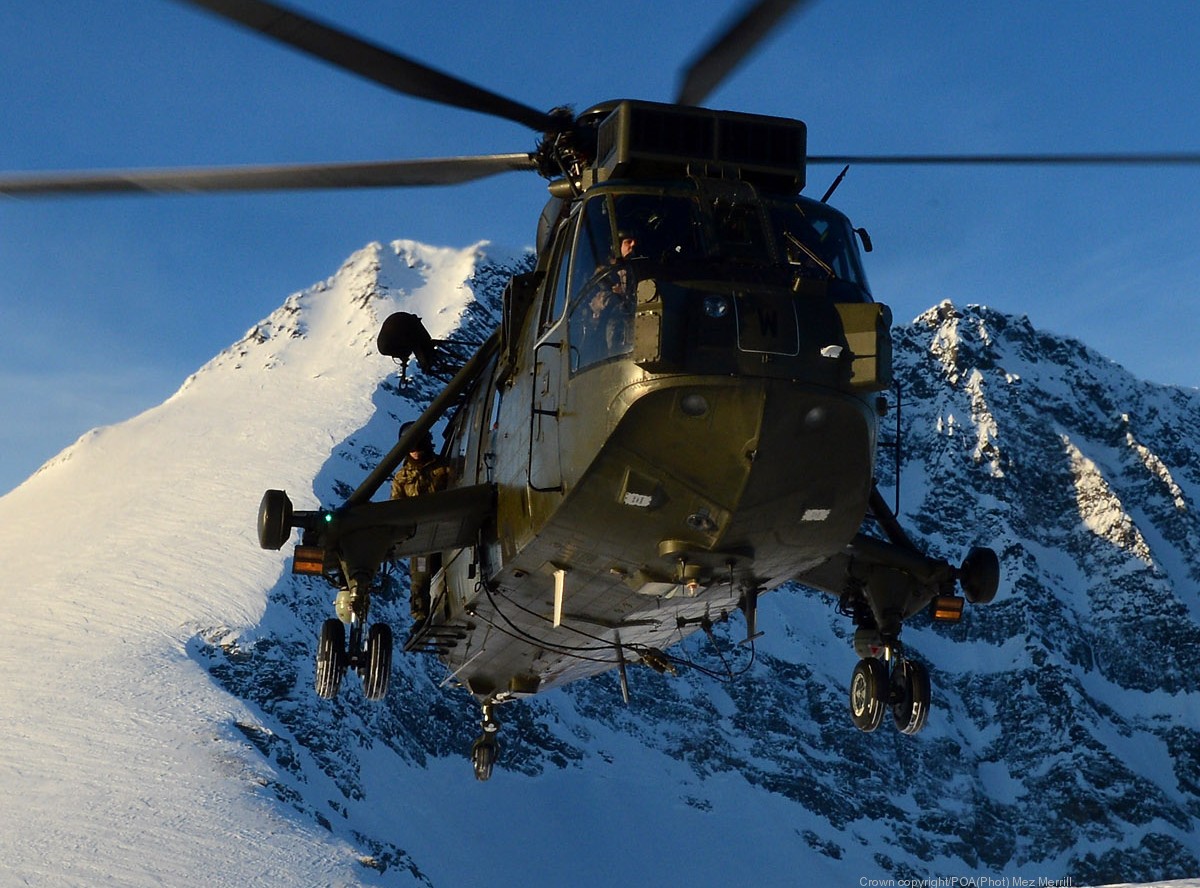 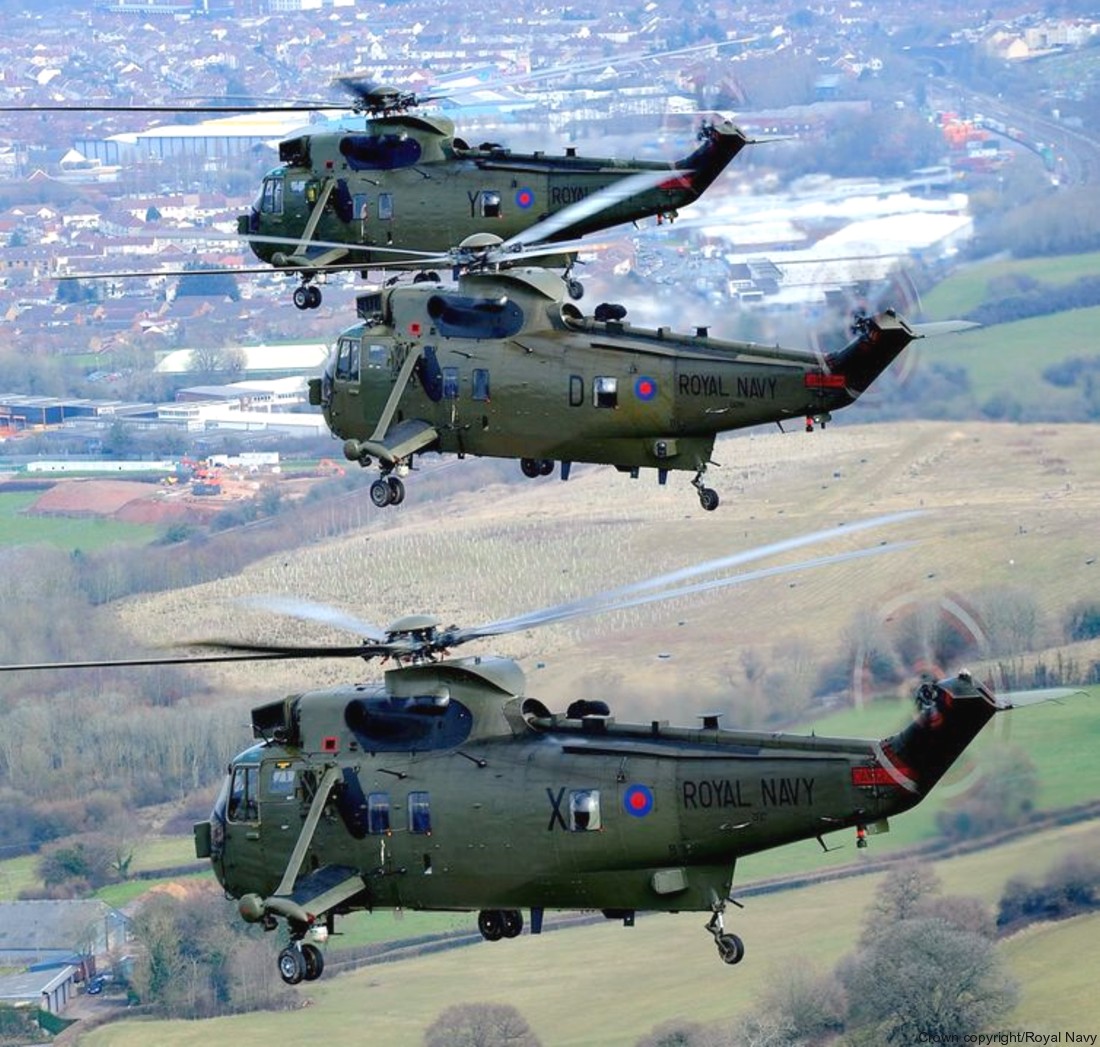 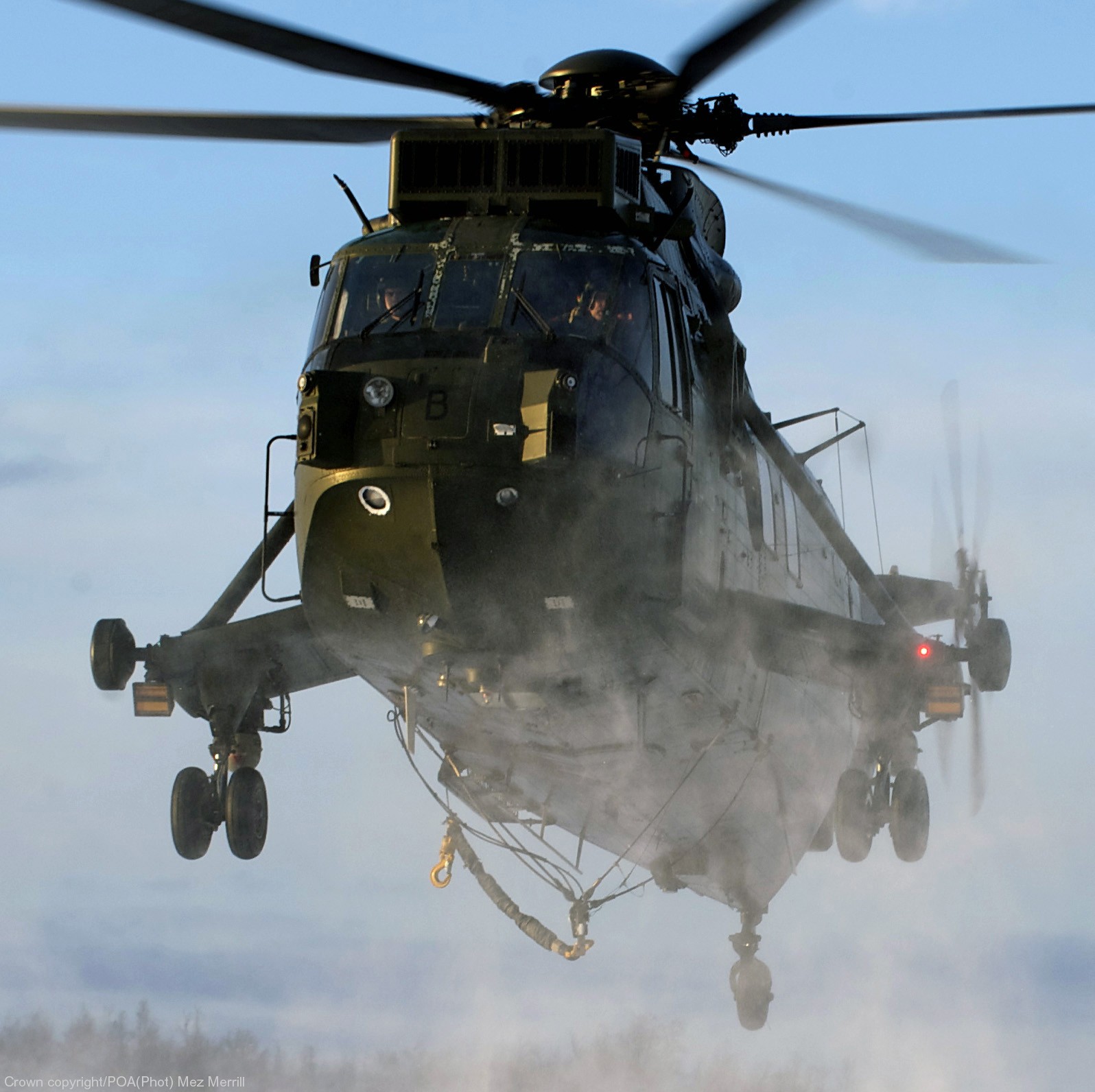 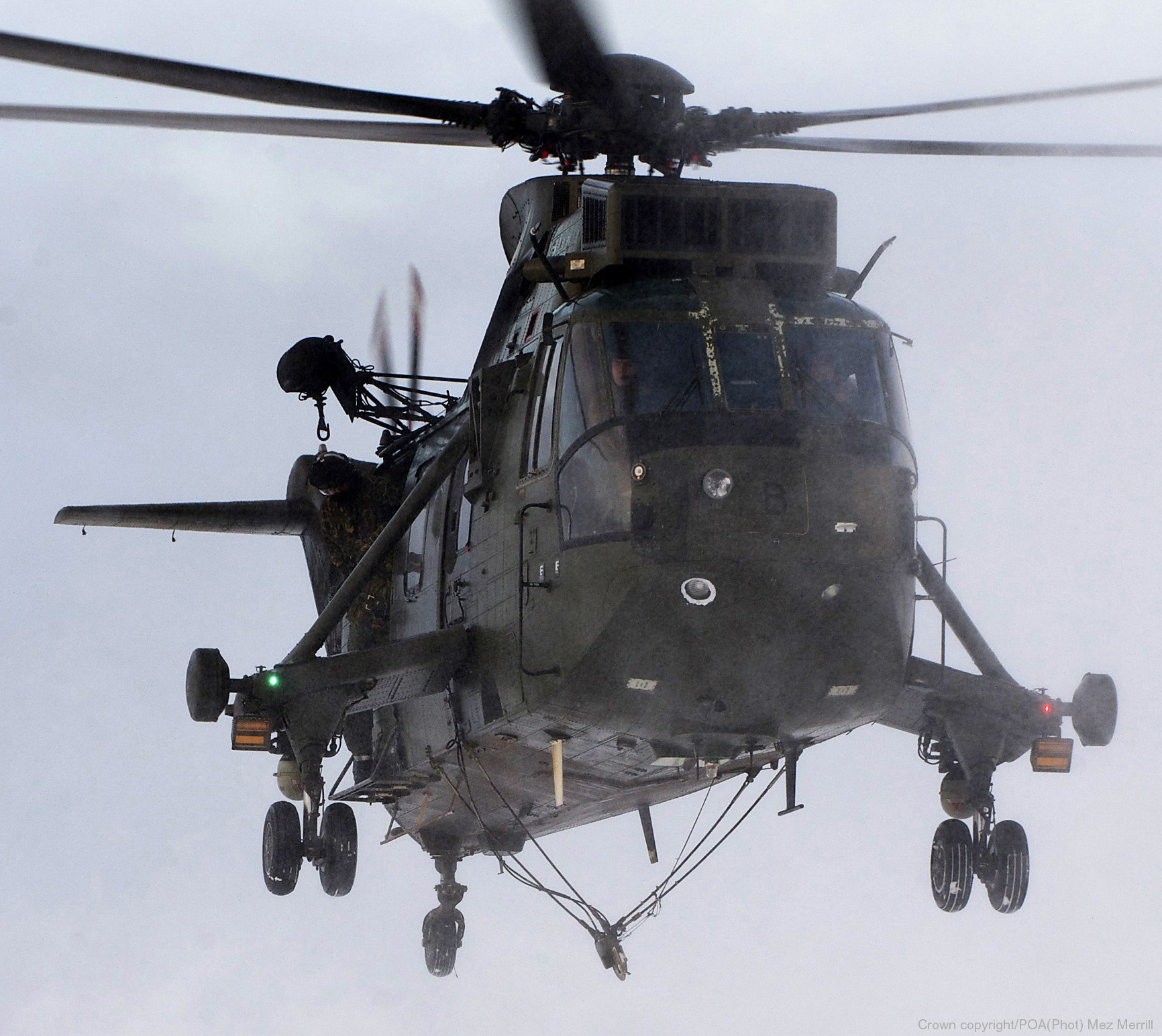 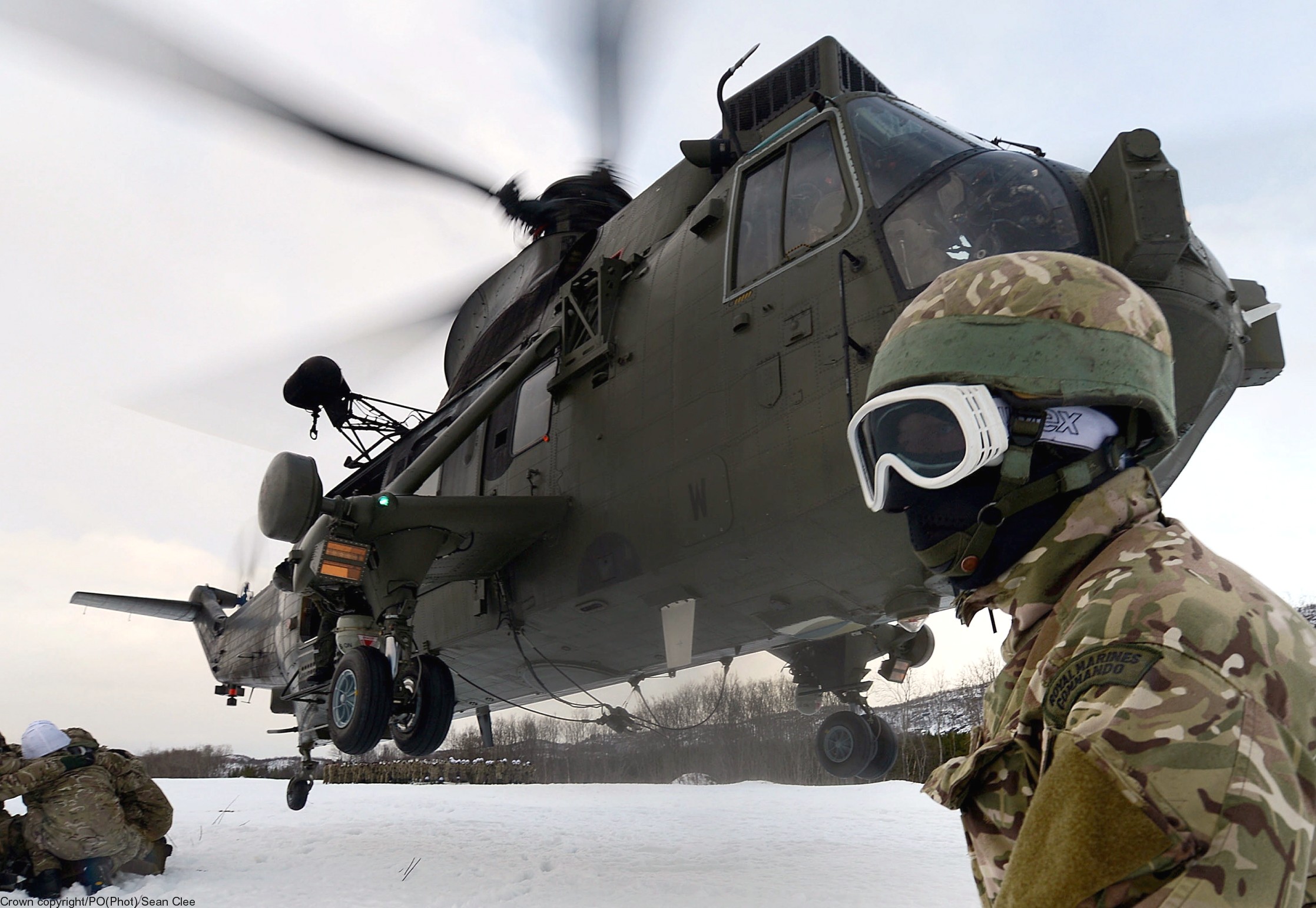 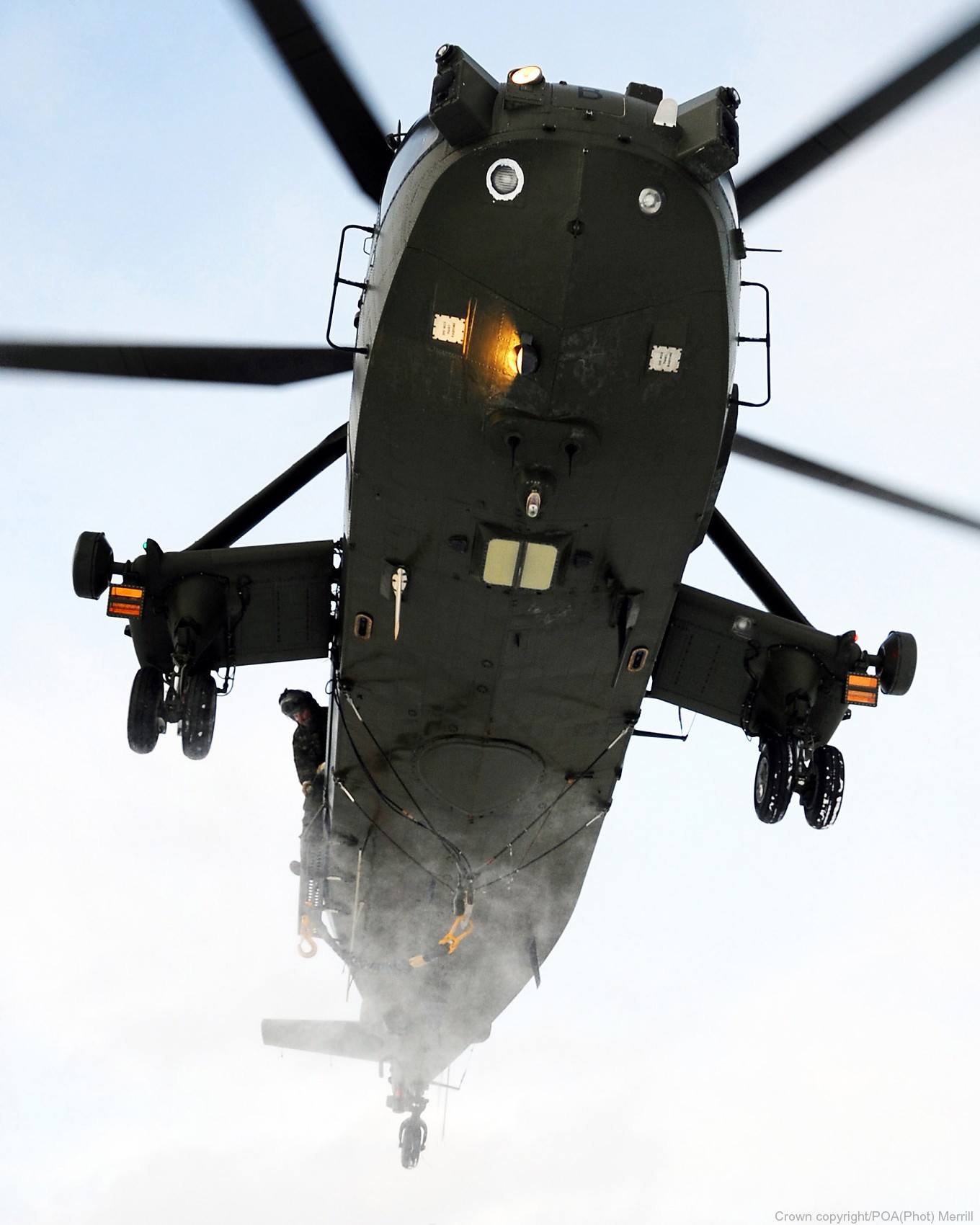 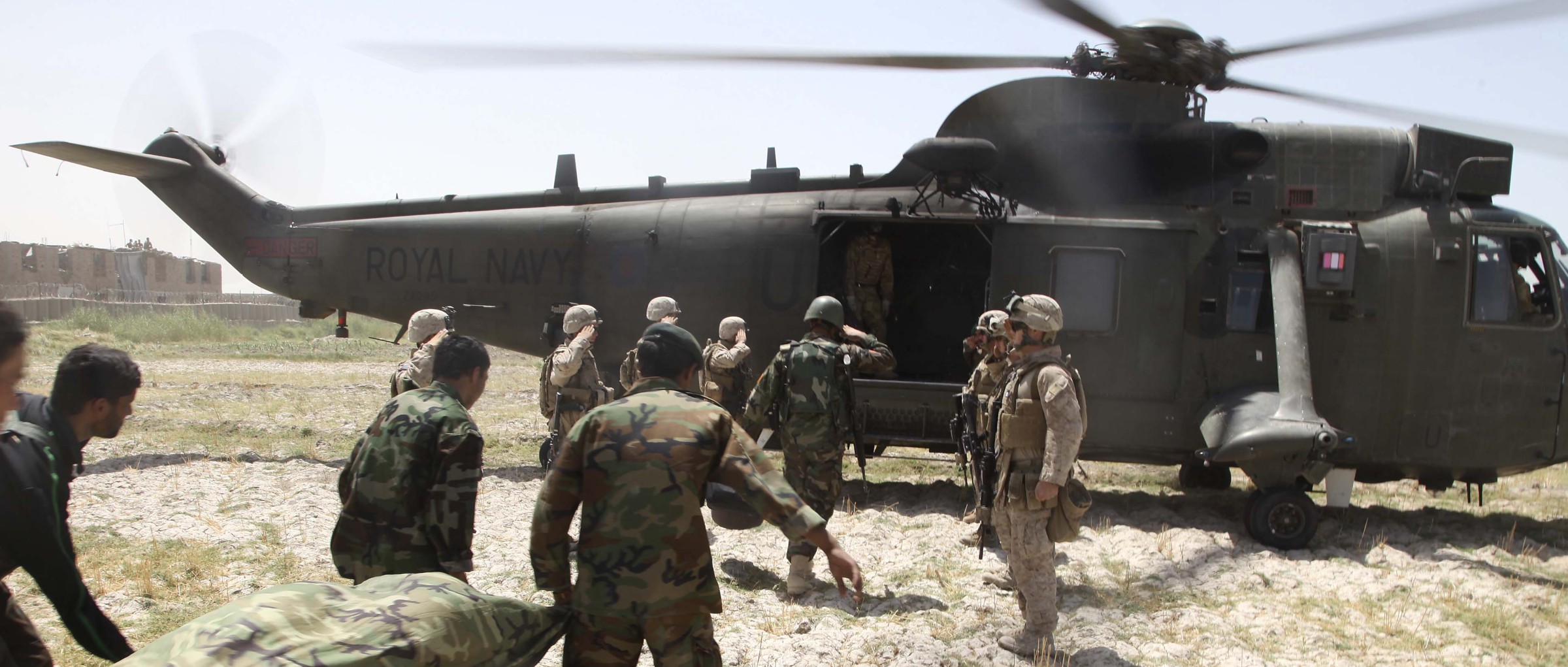 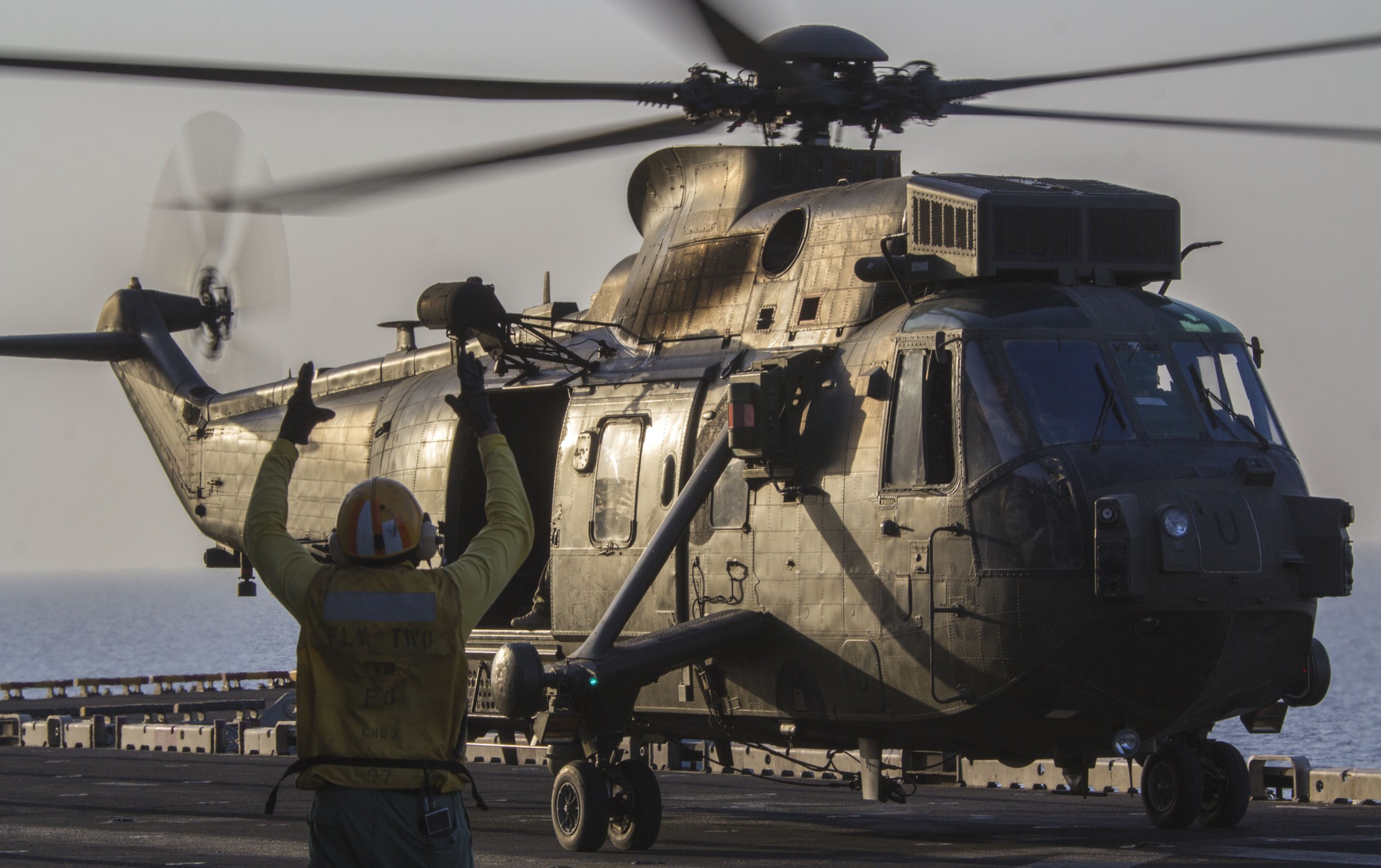 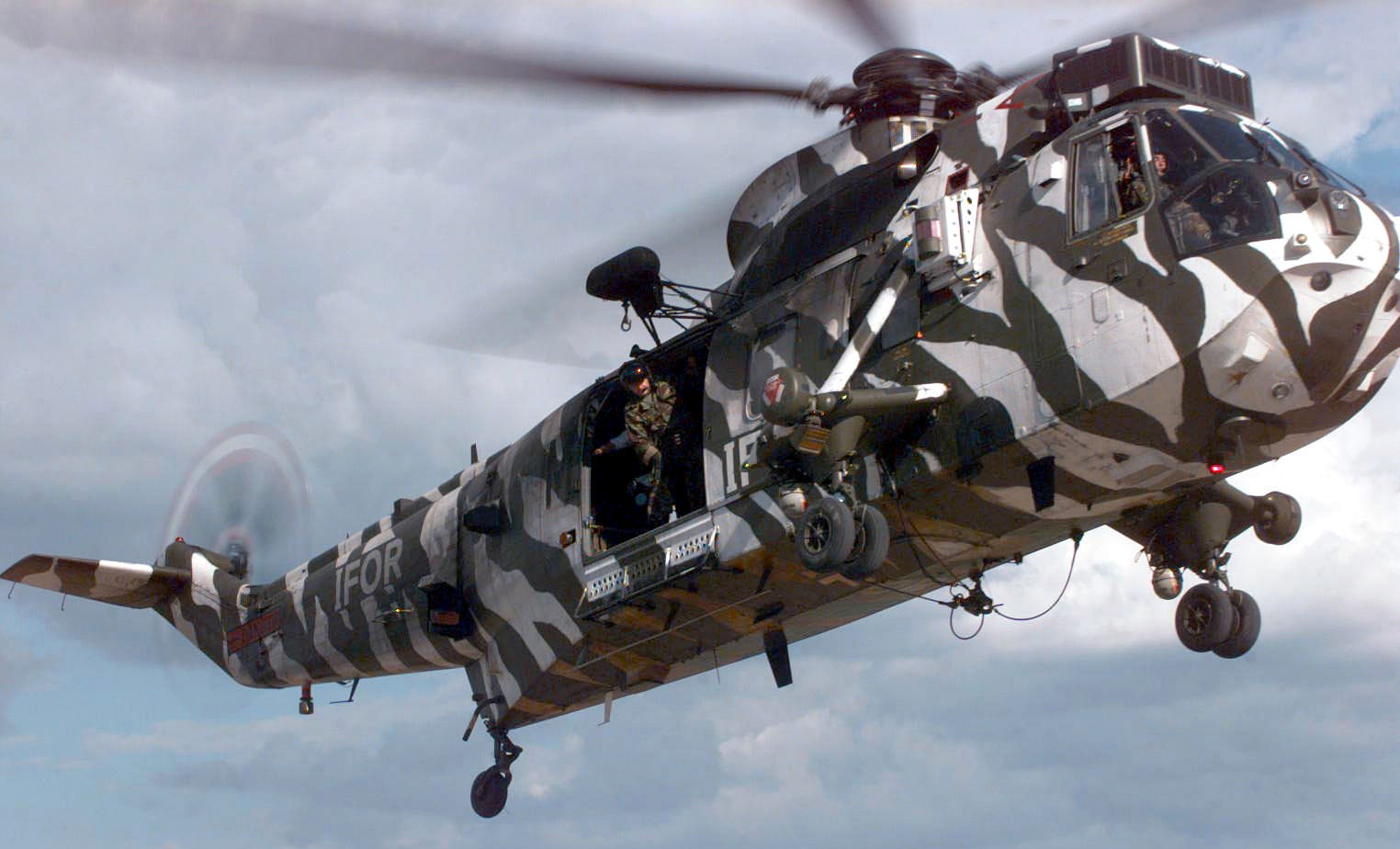 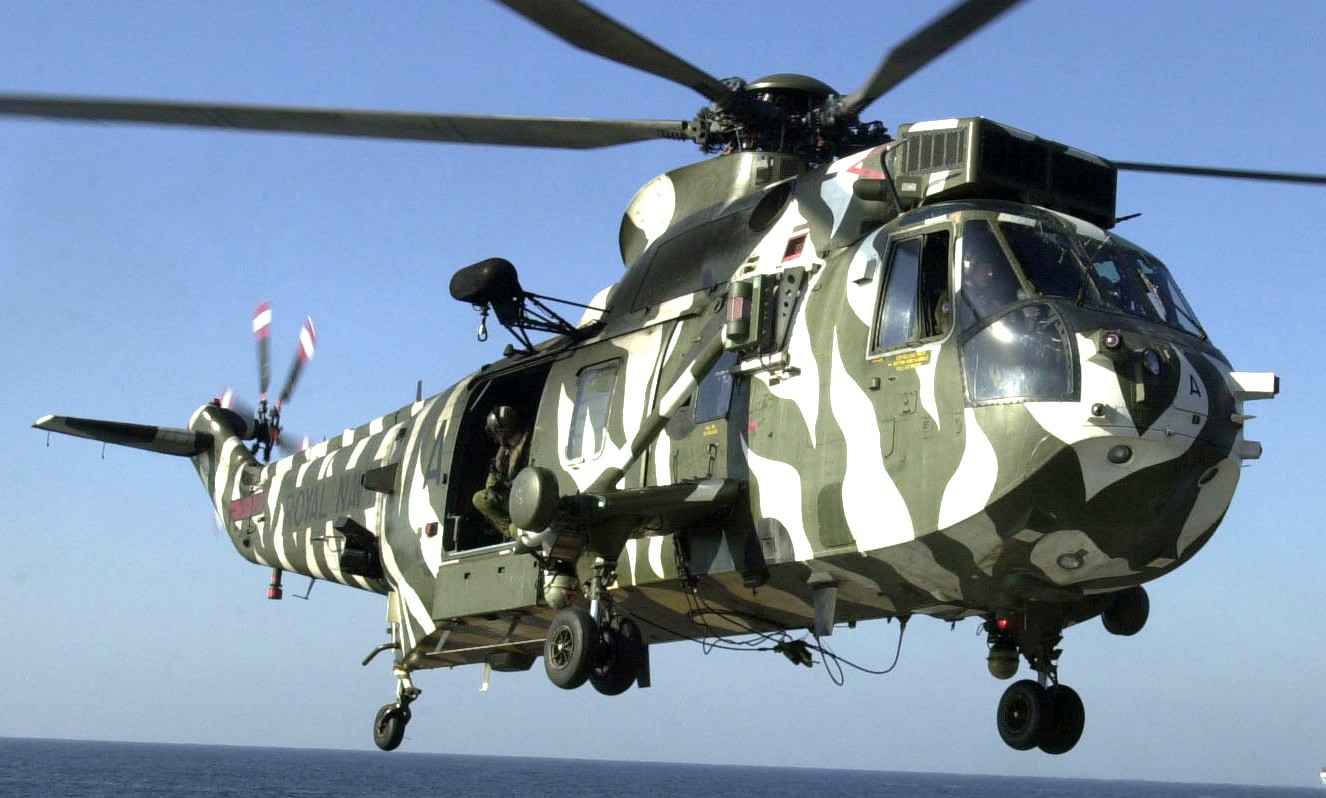 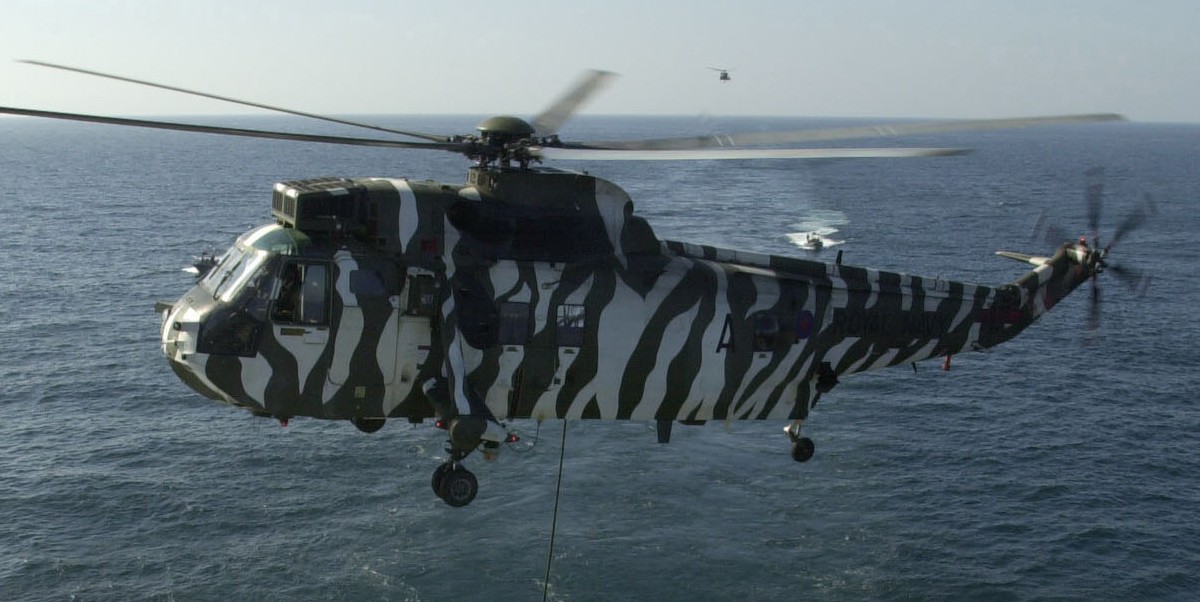 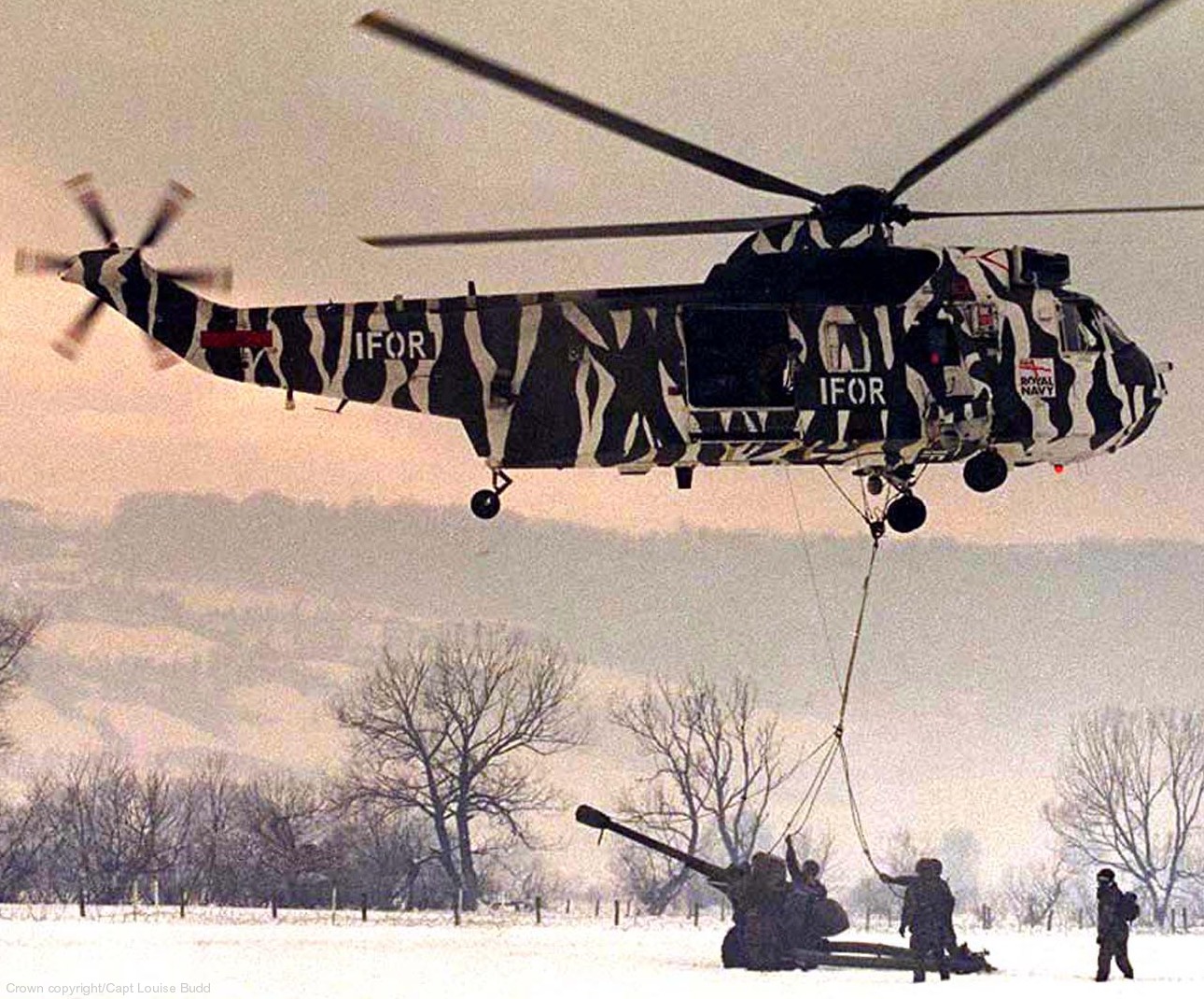 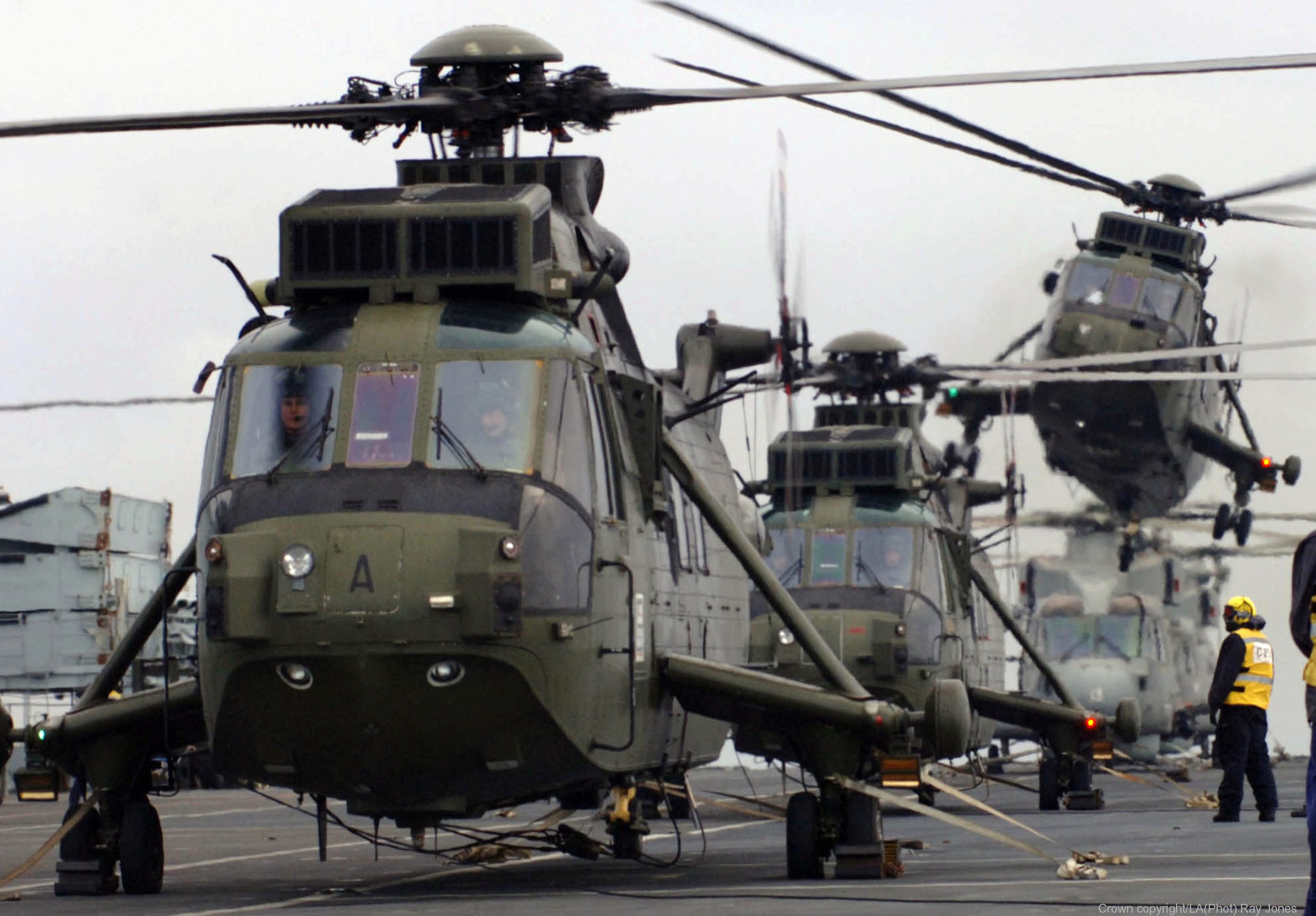 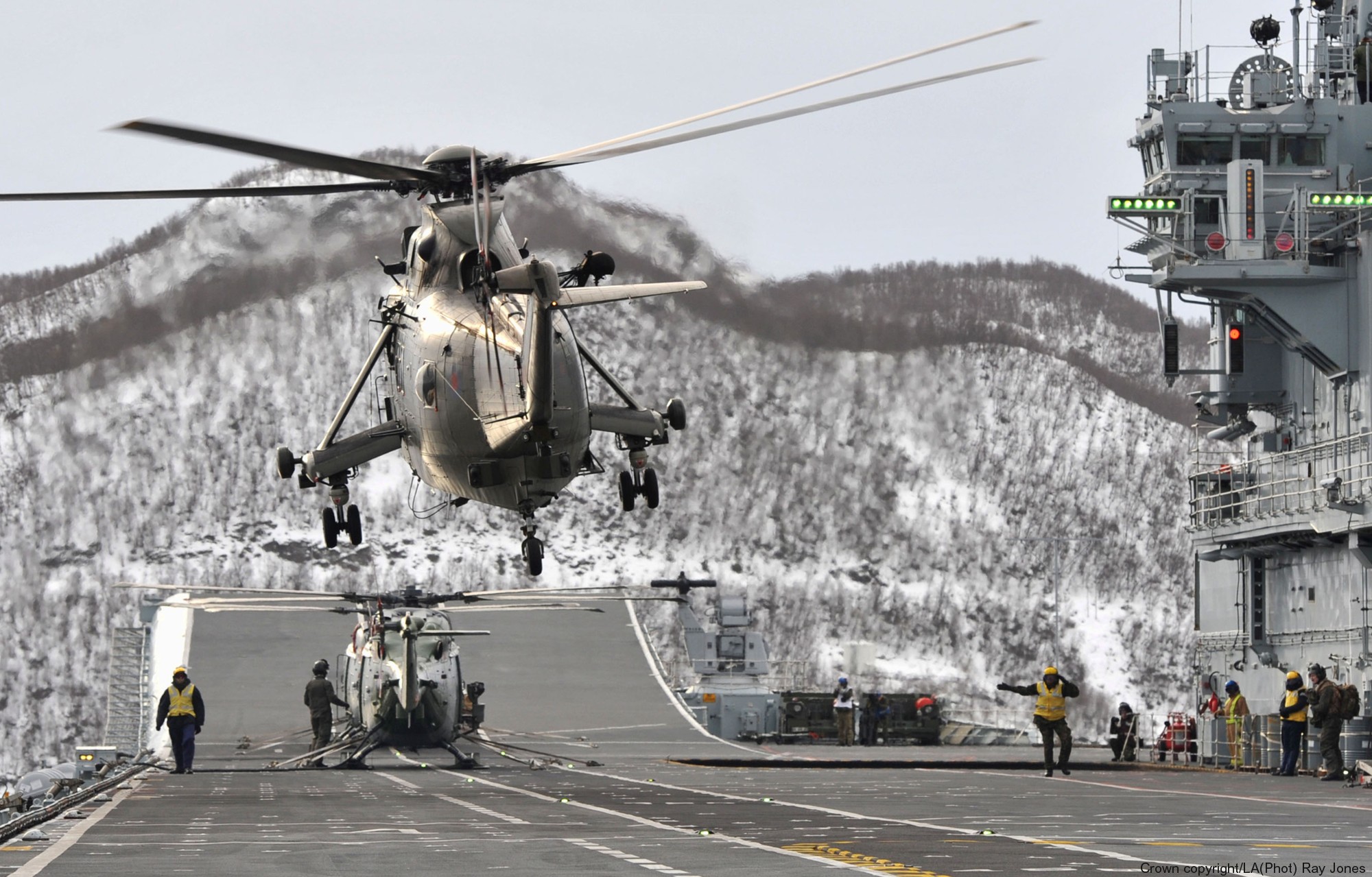 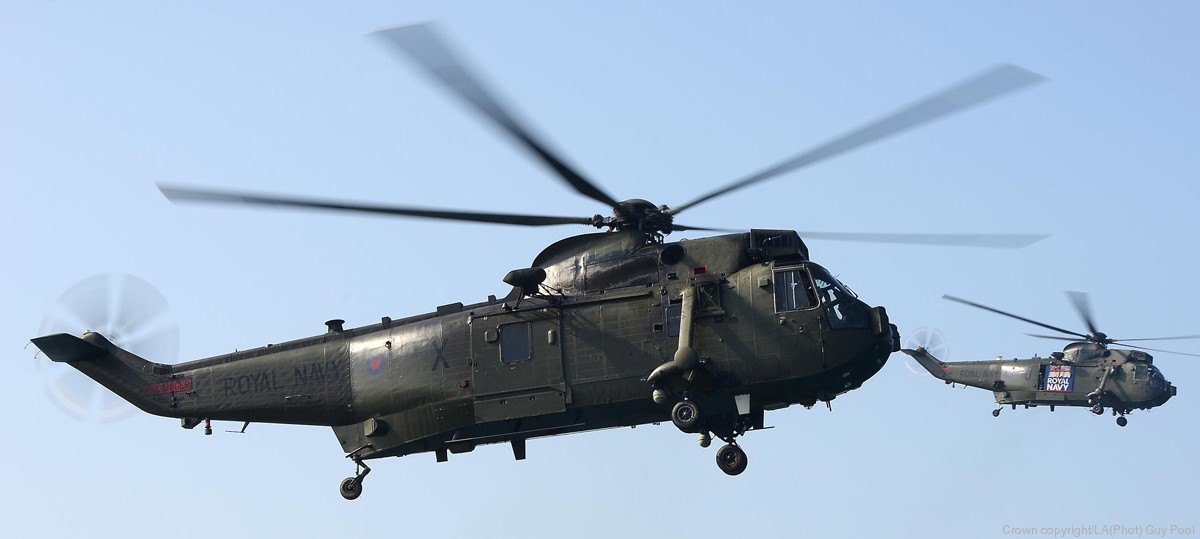 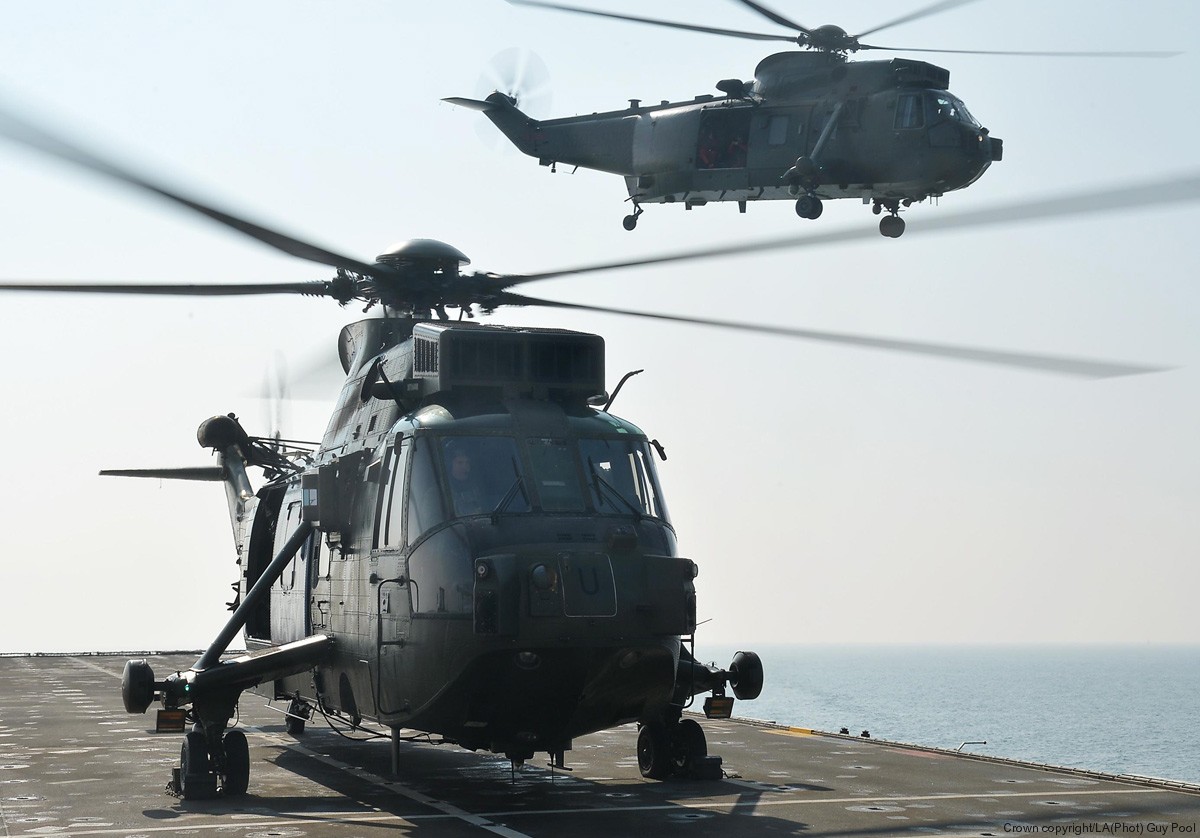 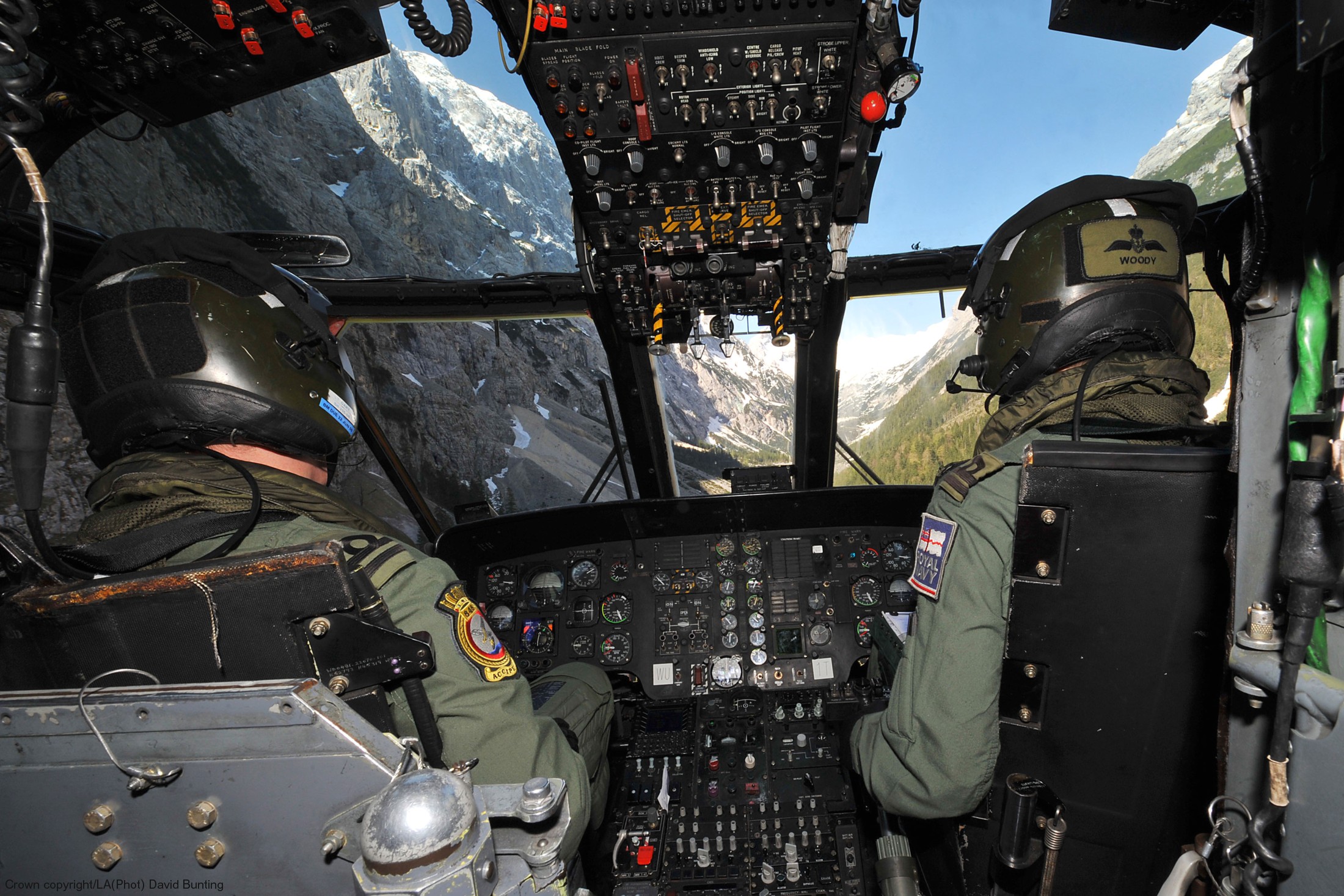 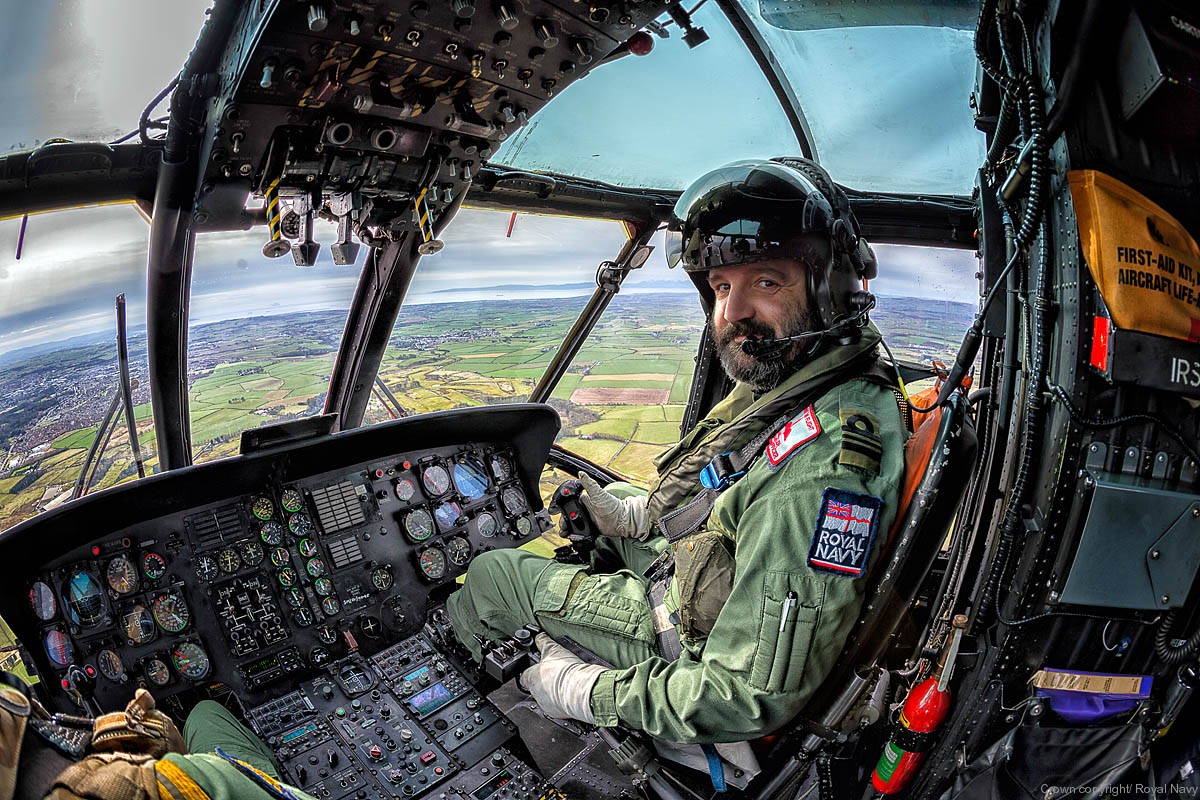 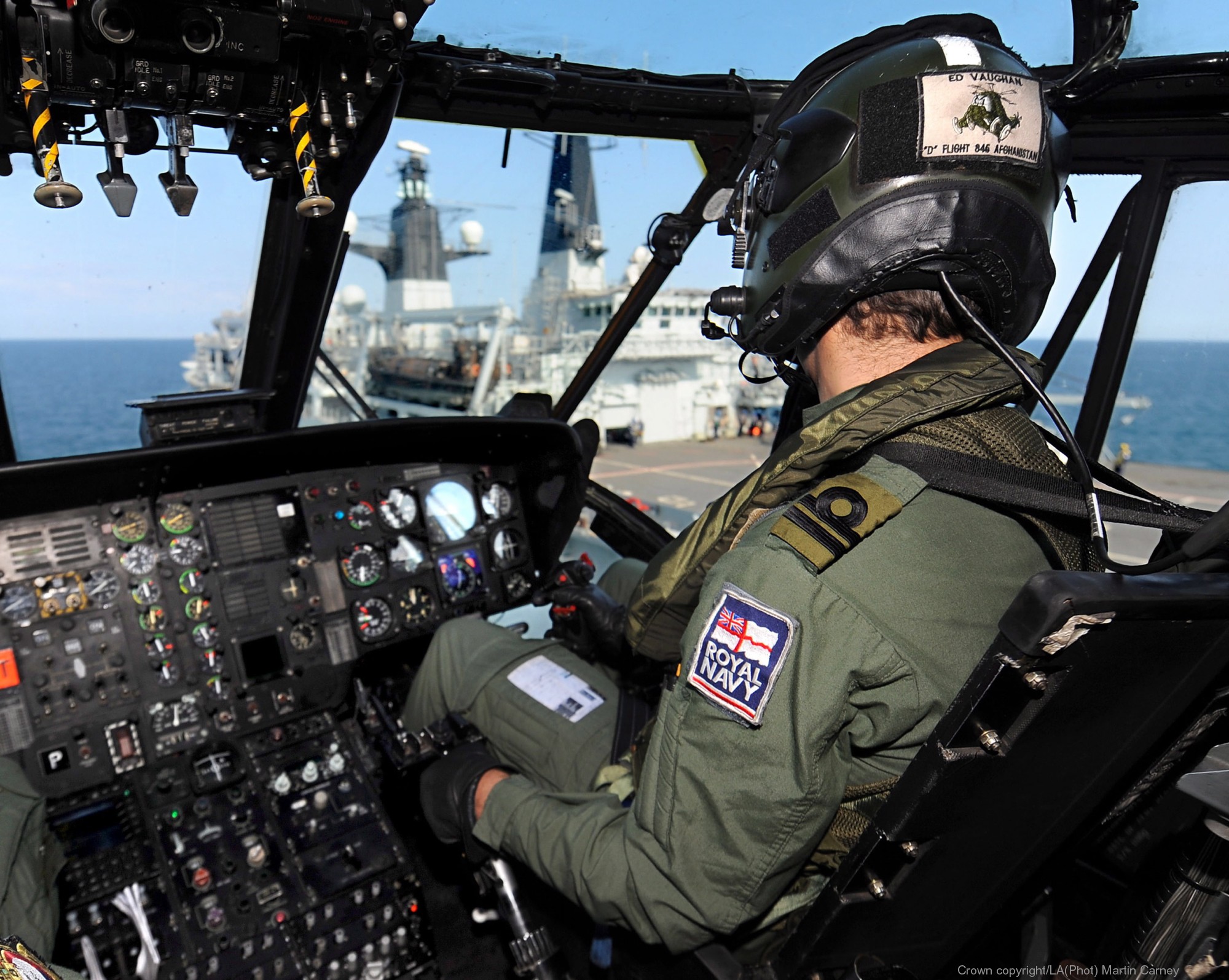 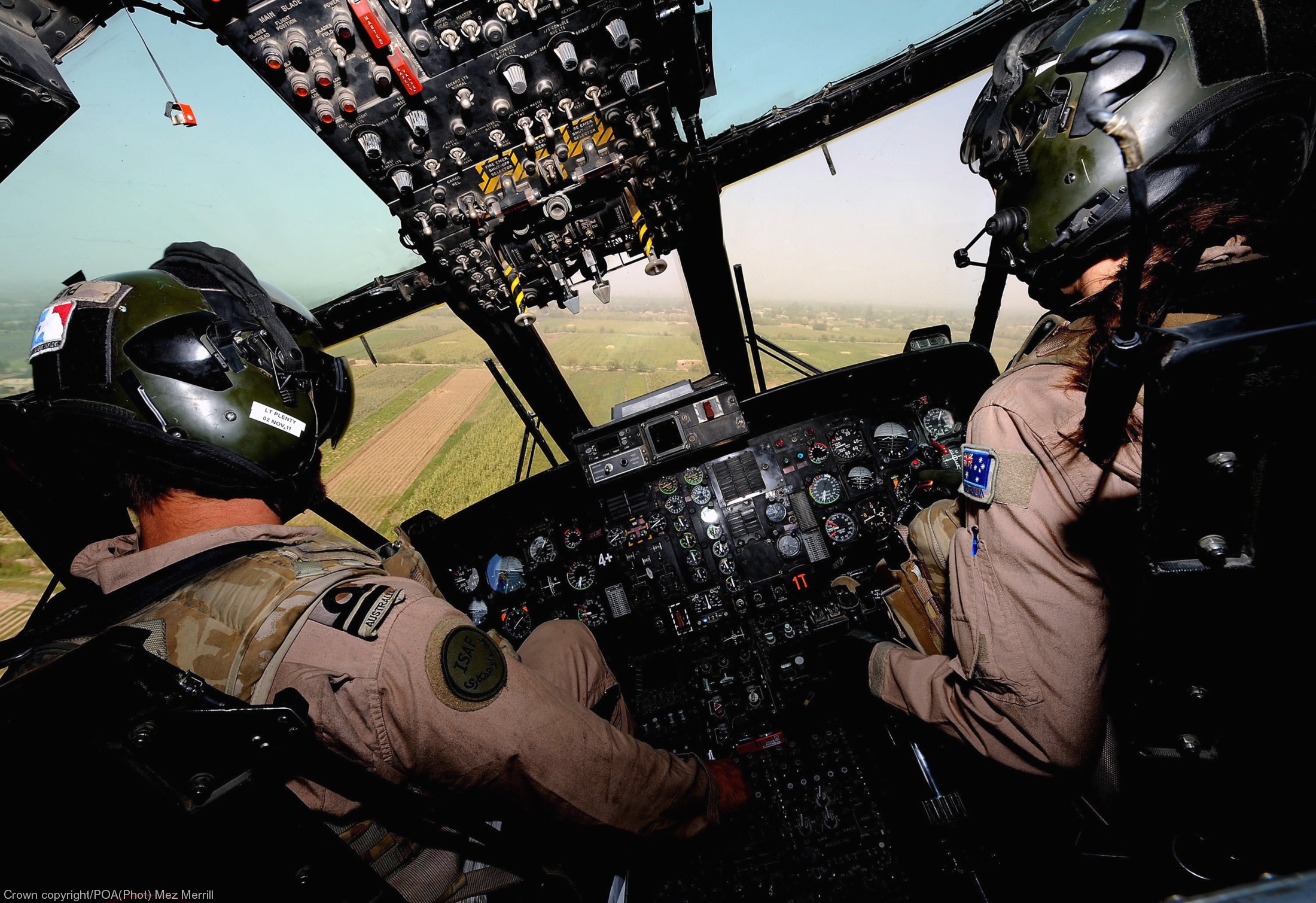 Anti-Submarine Warfare - Sea King HAS.1 / HAS.2 / HAS.5 / HAS.6 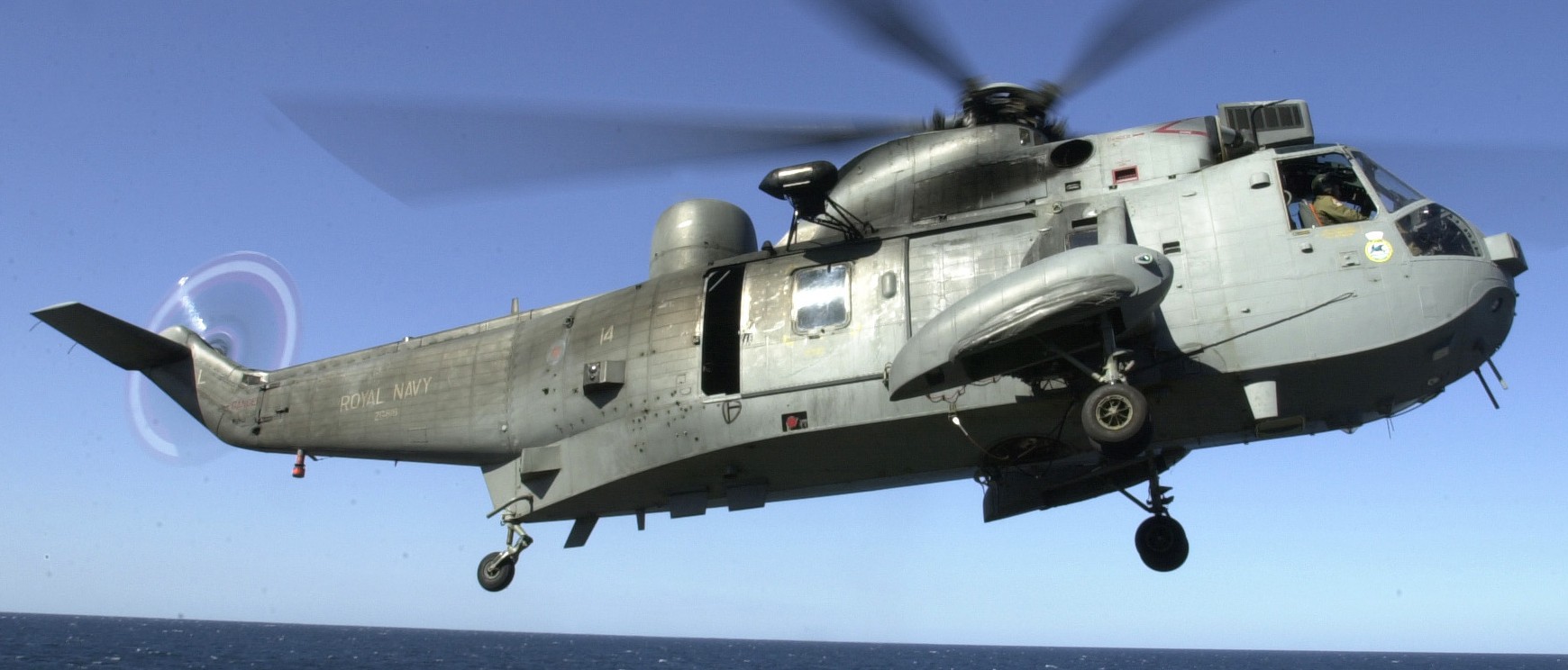 HAS.6 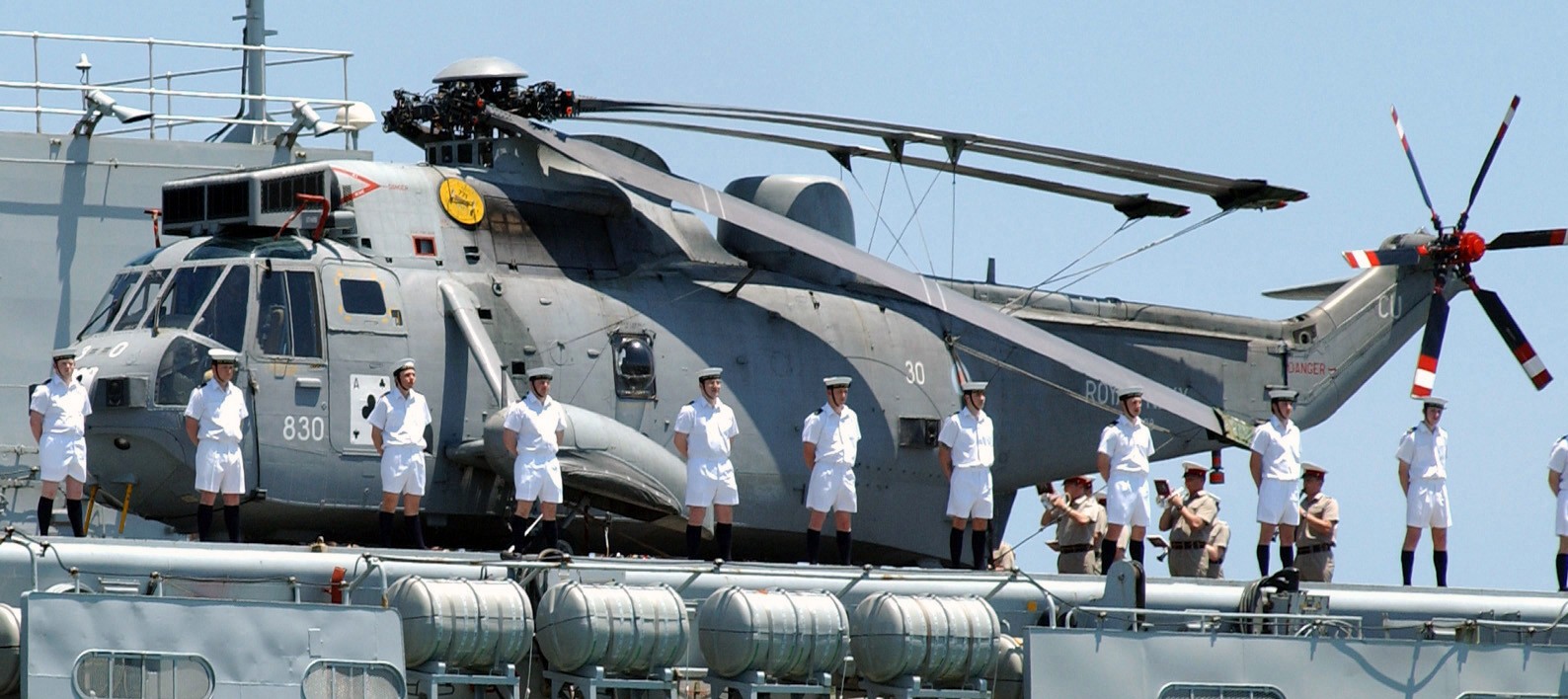 HAS.6 Airborne Early Warning - Sea King AEW.2 / AEW.5 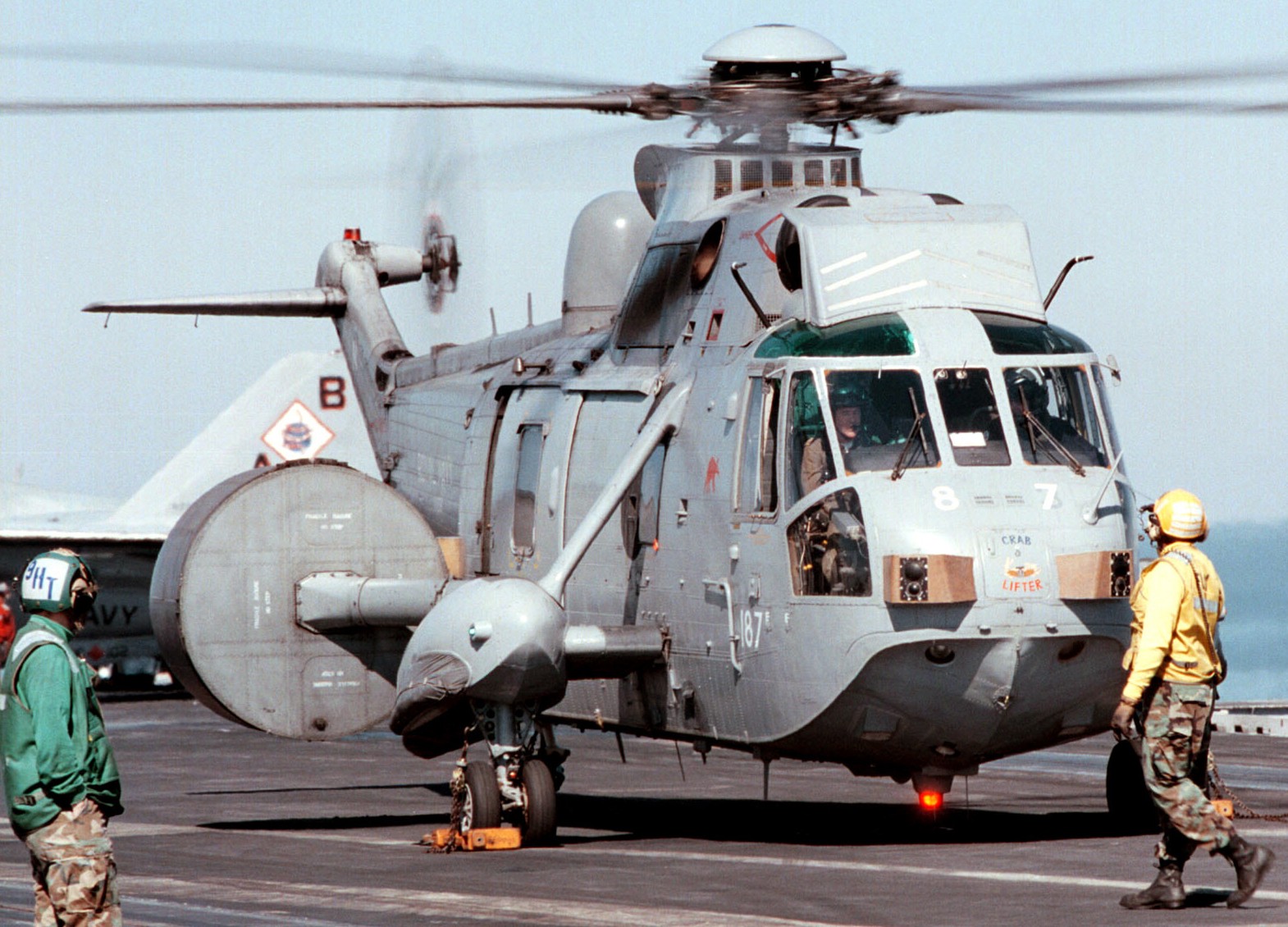 Sea King AEW 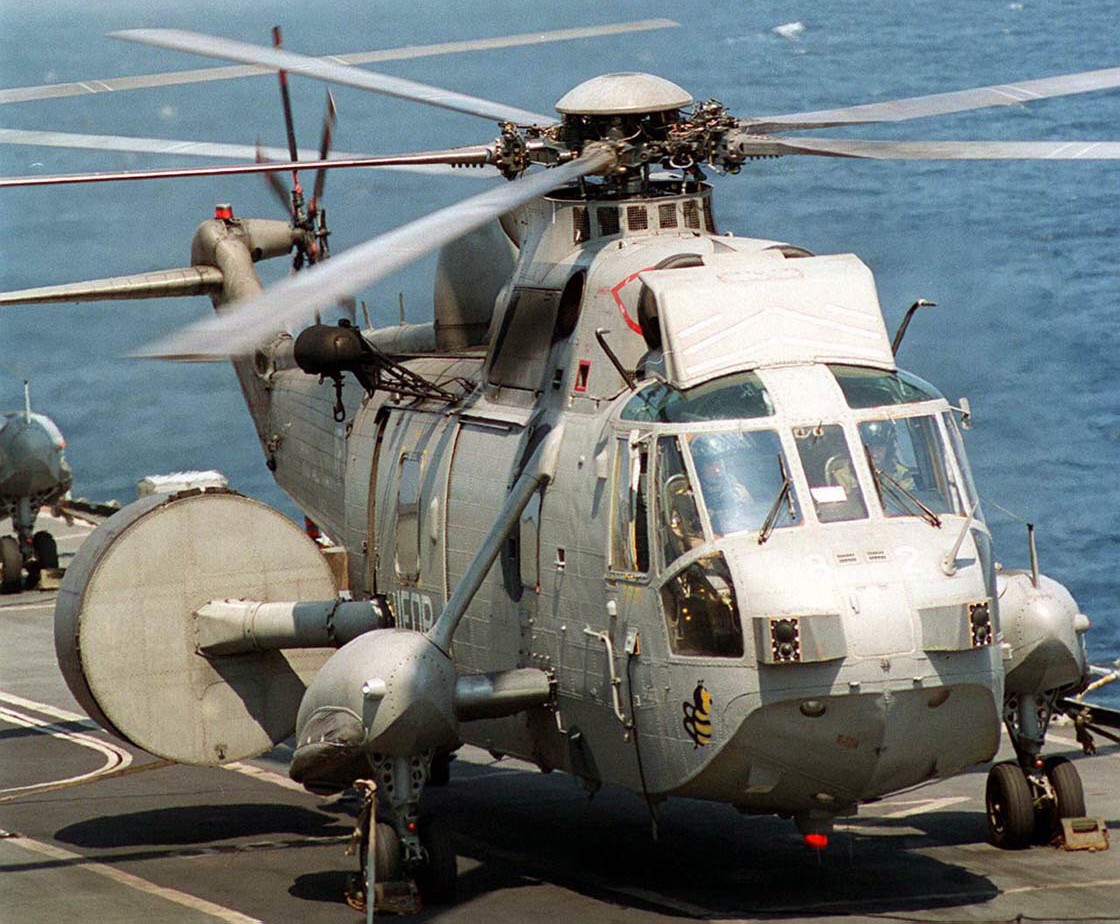 Sea King AEW Airborne Surveillance and Control - Sea King ASaC.7 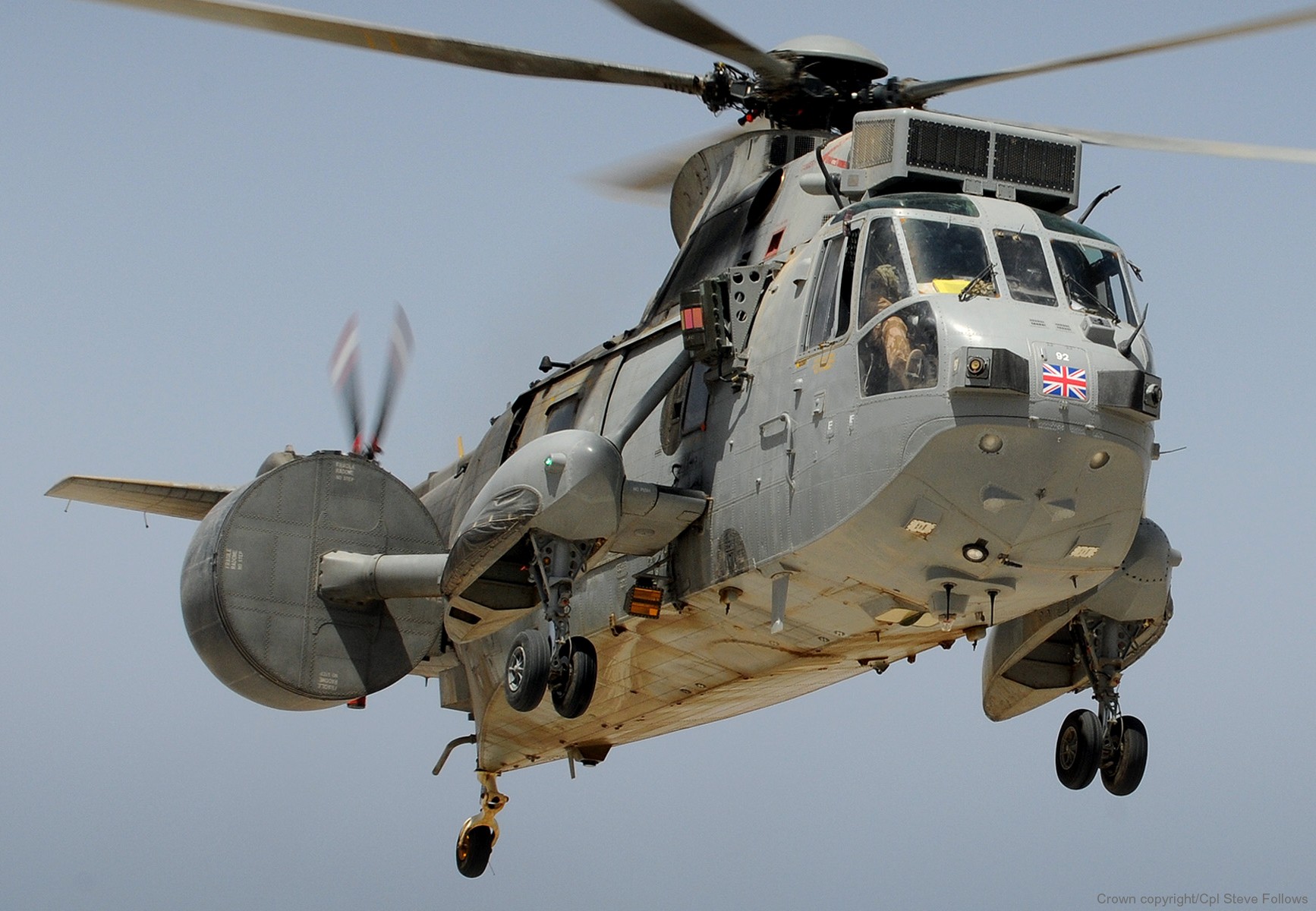 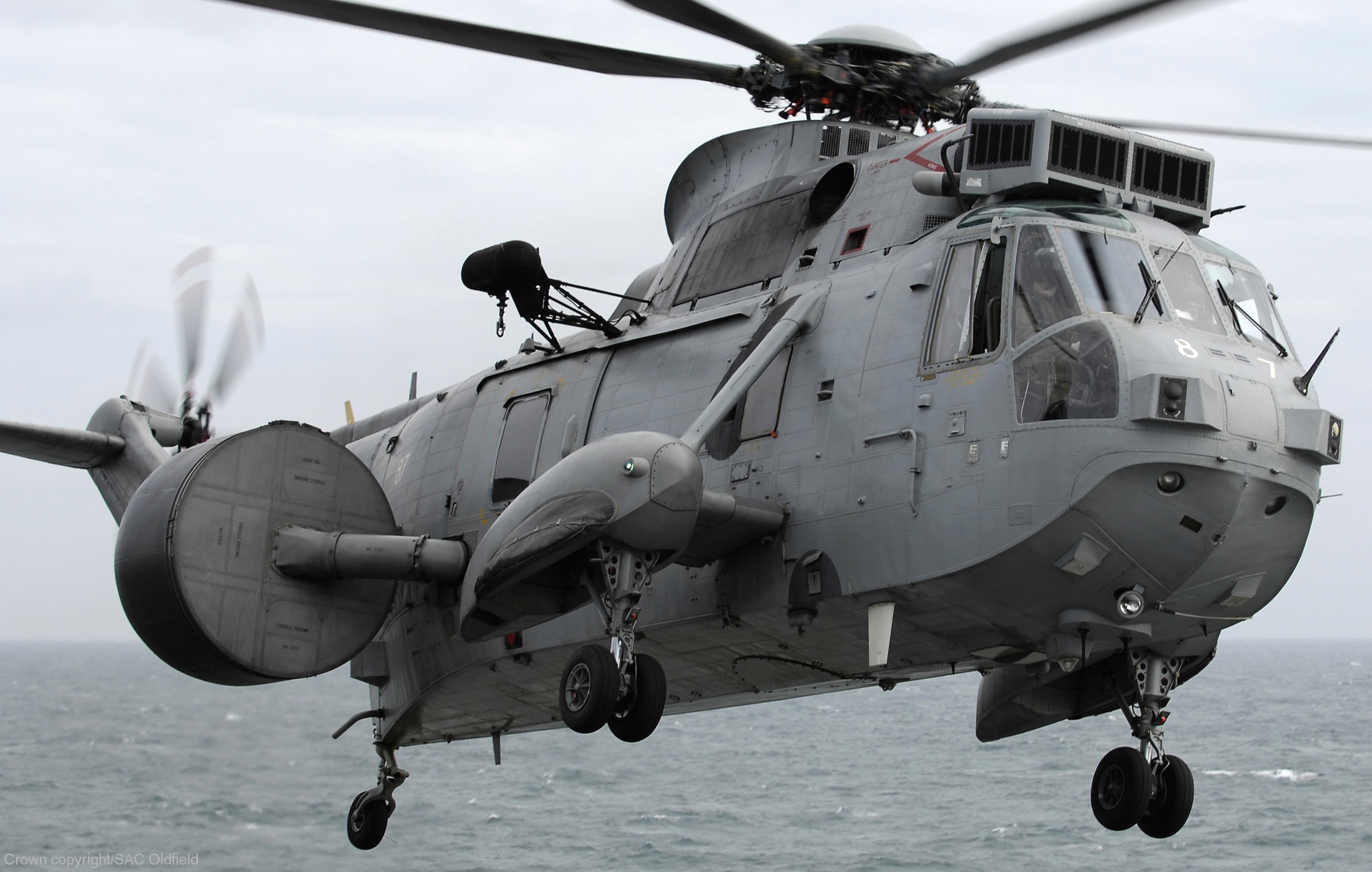 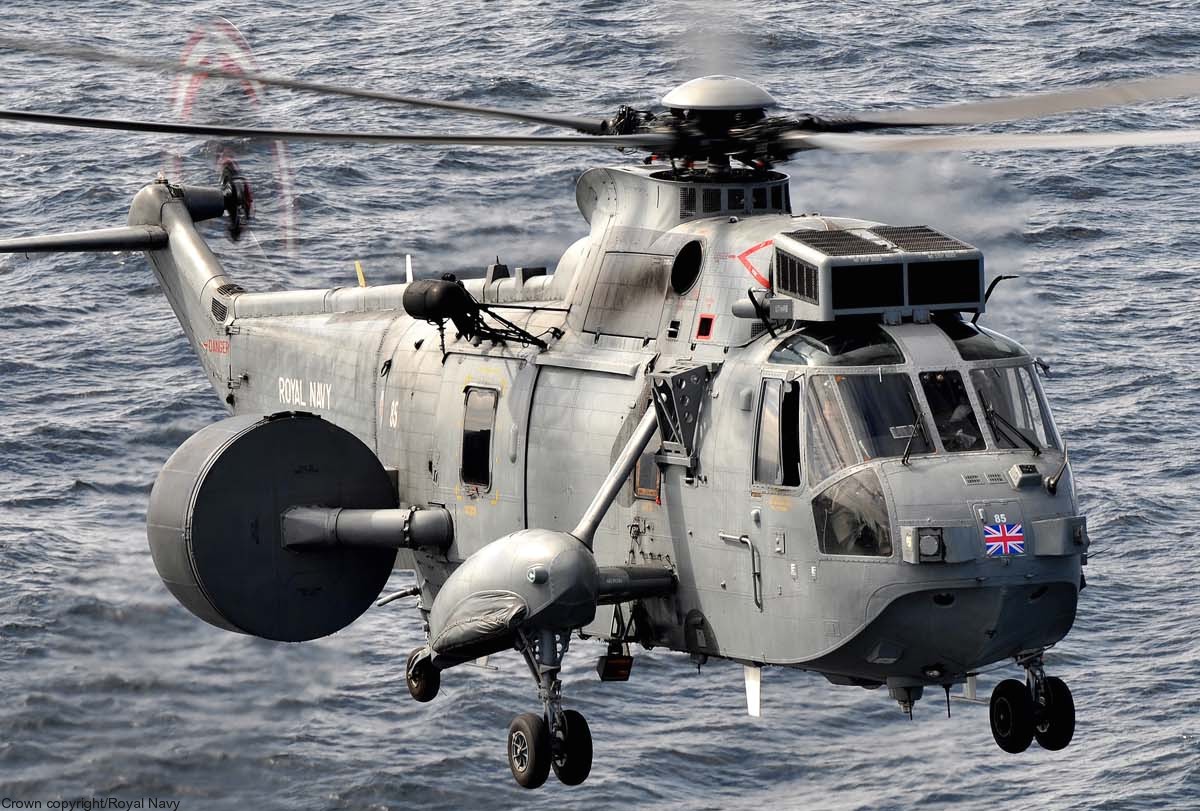 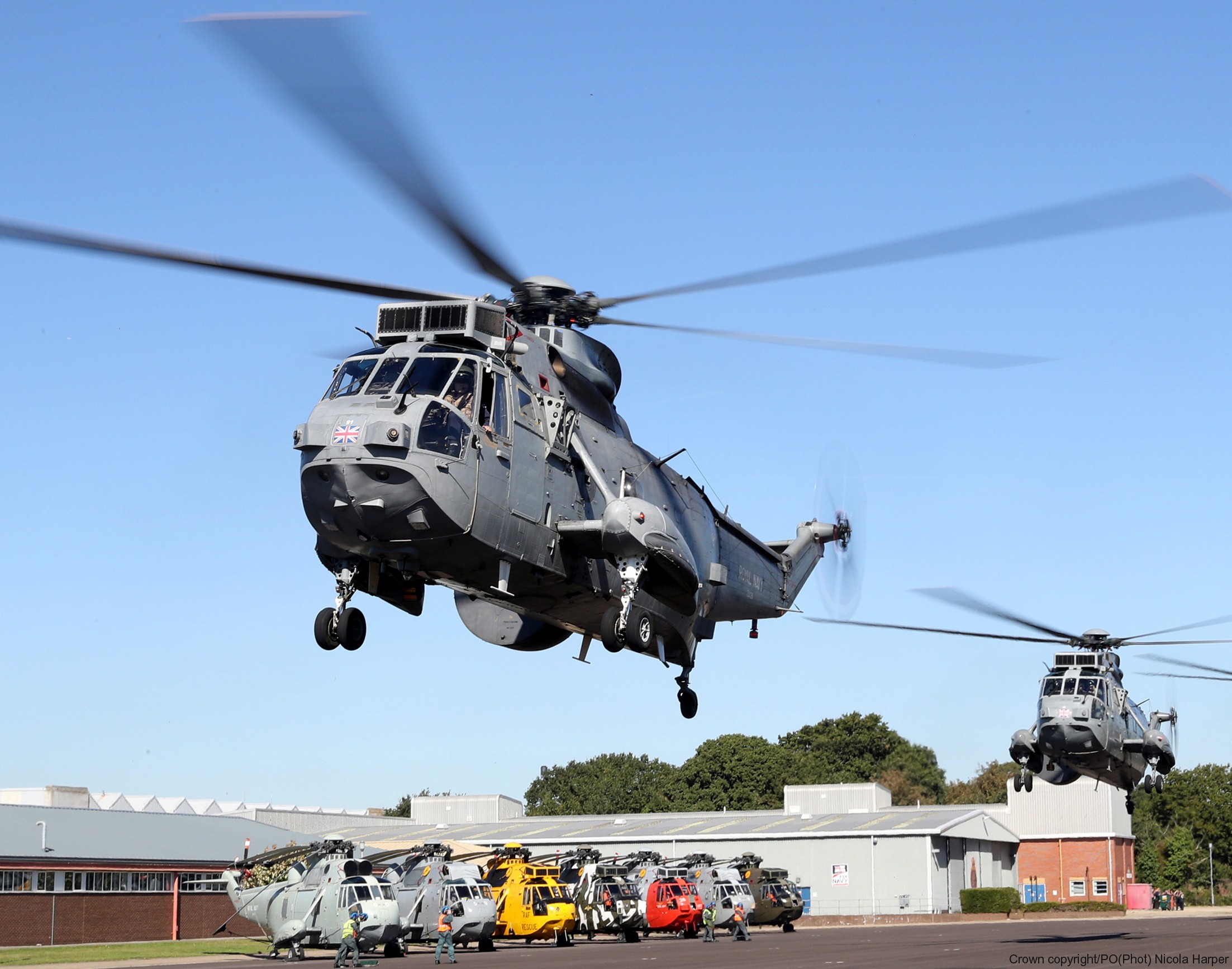 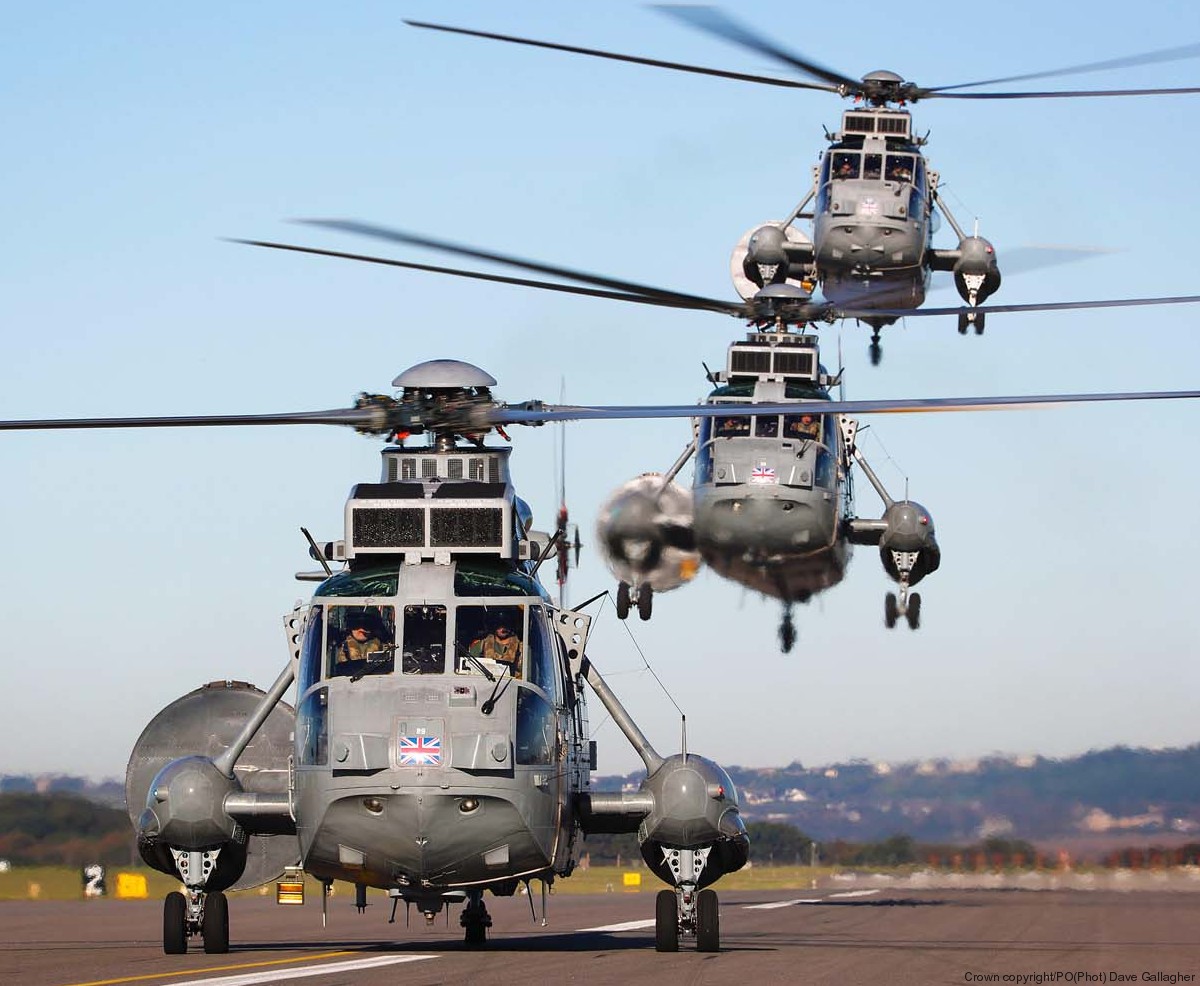 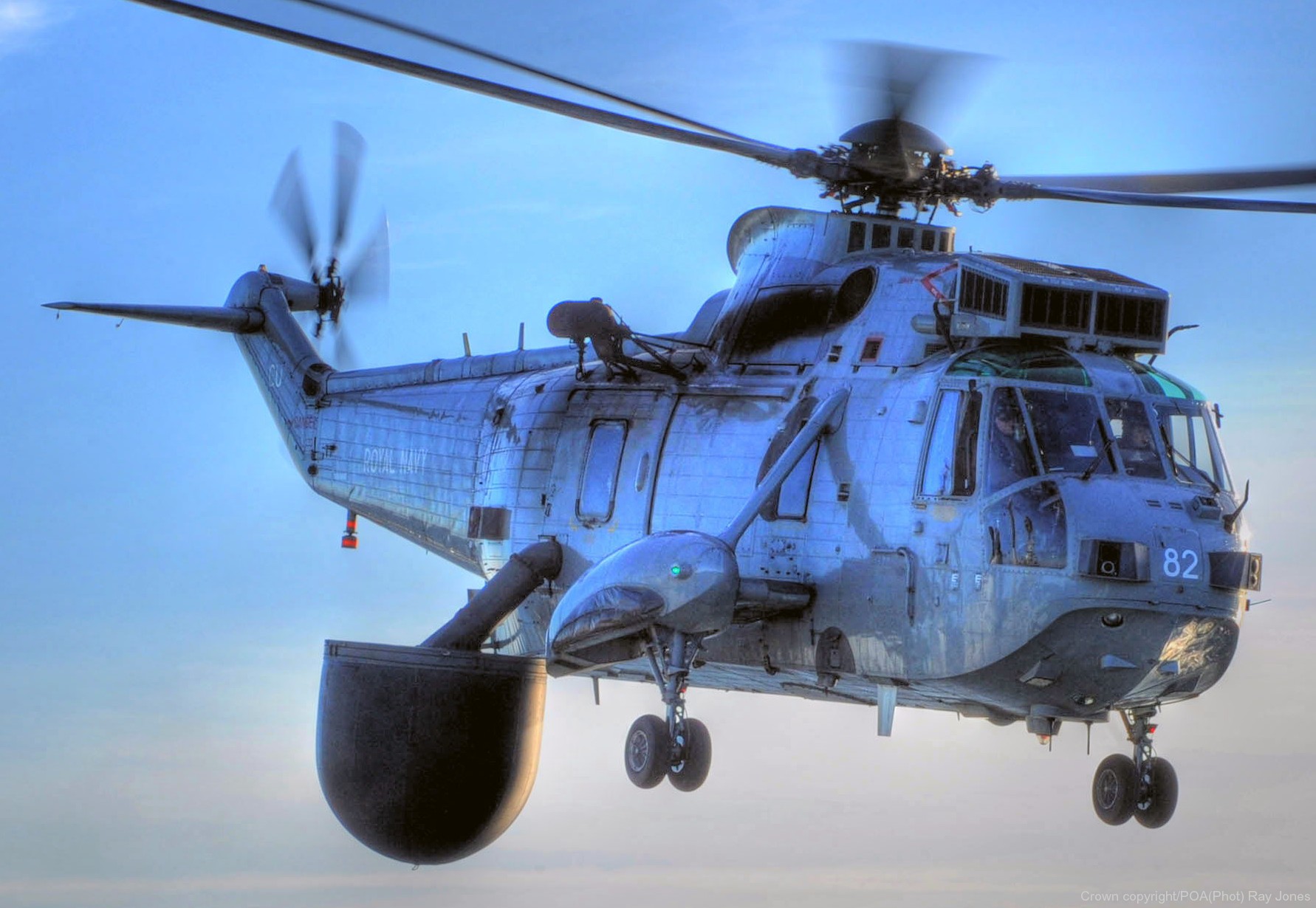 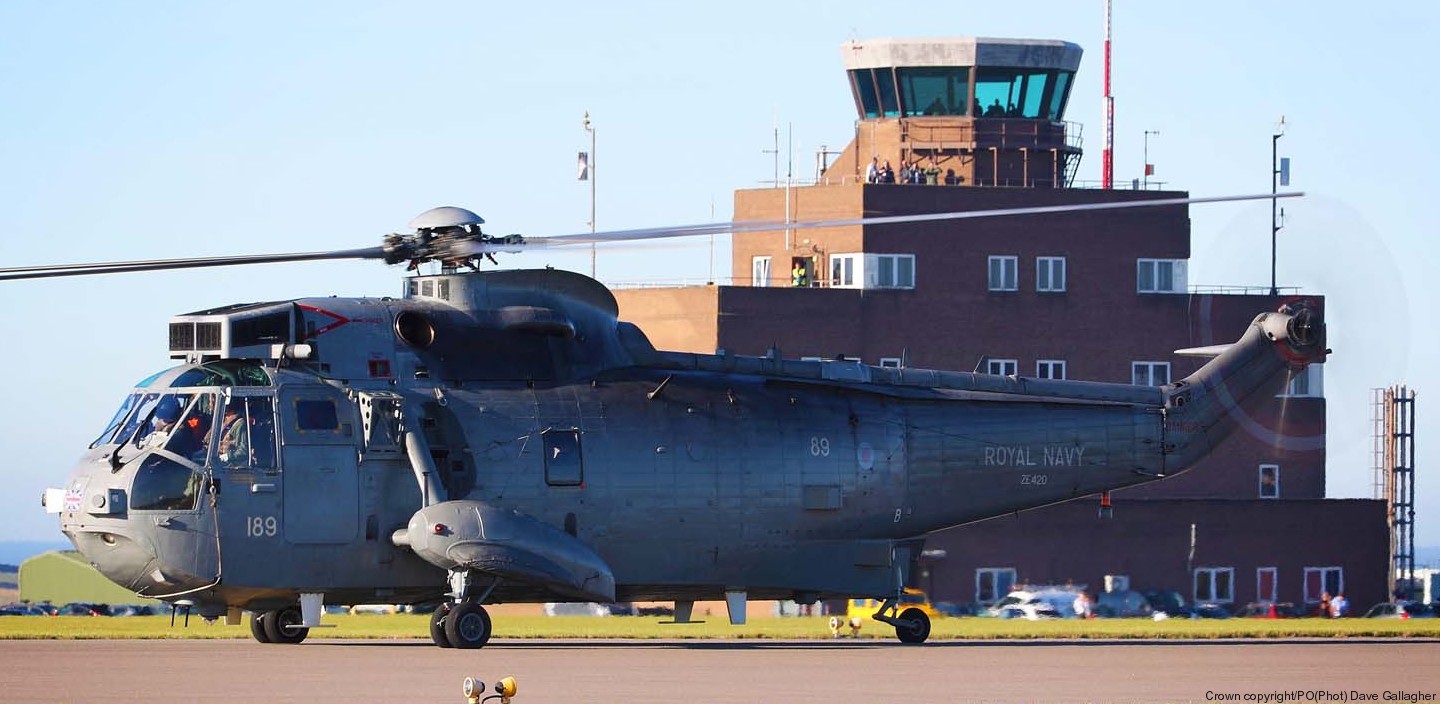 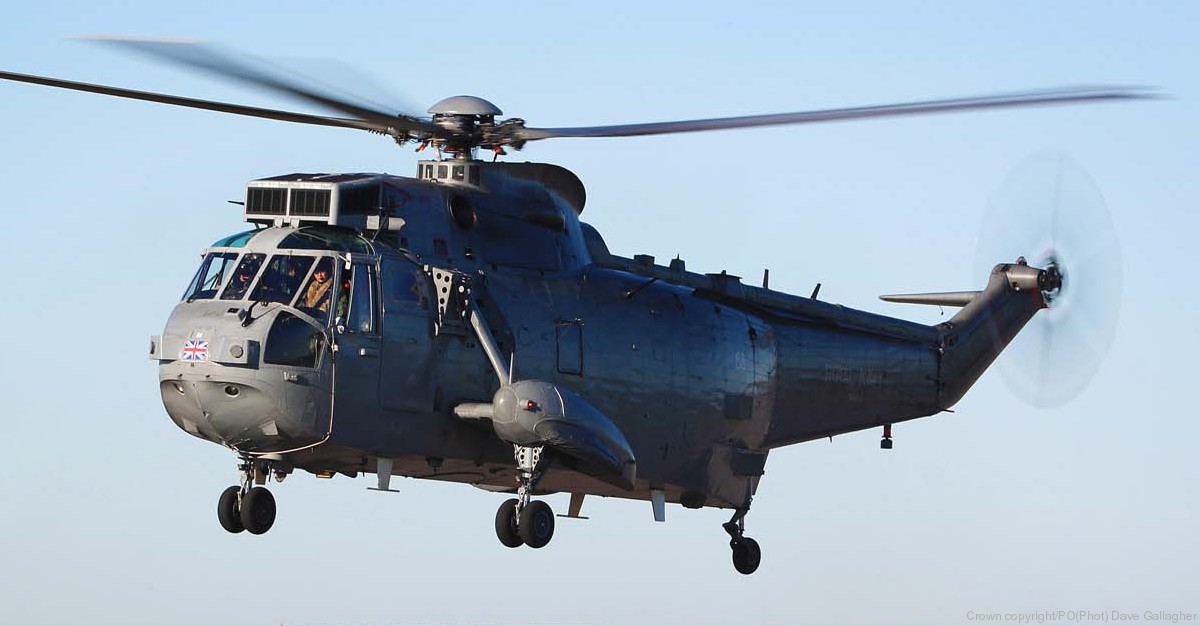 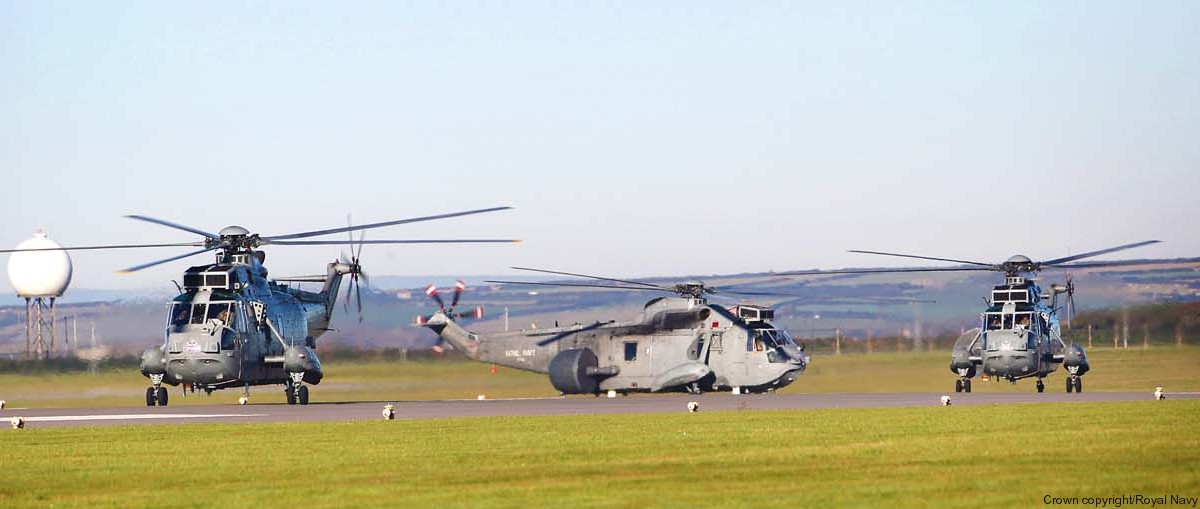 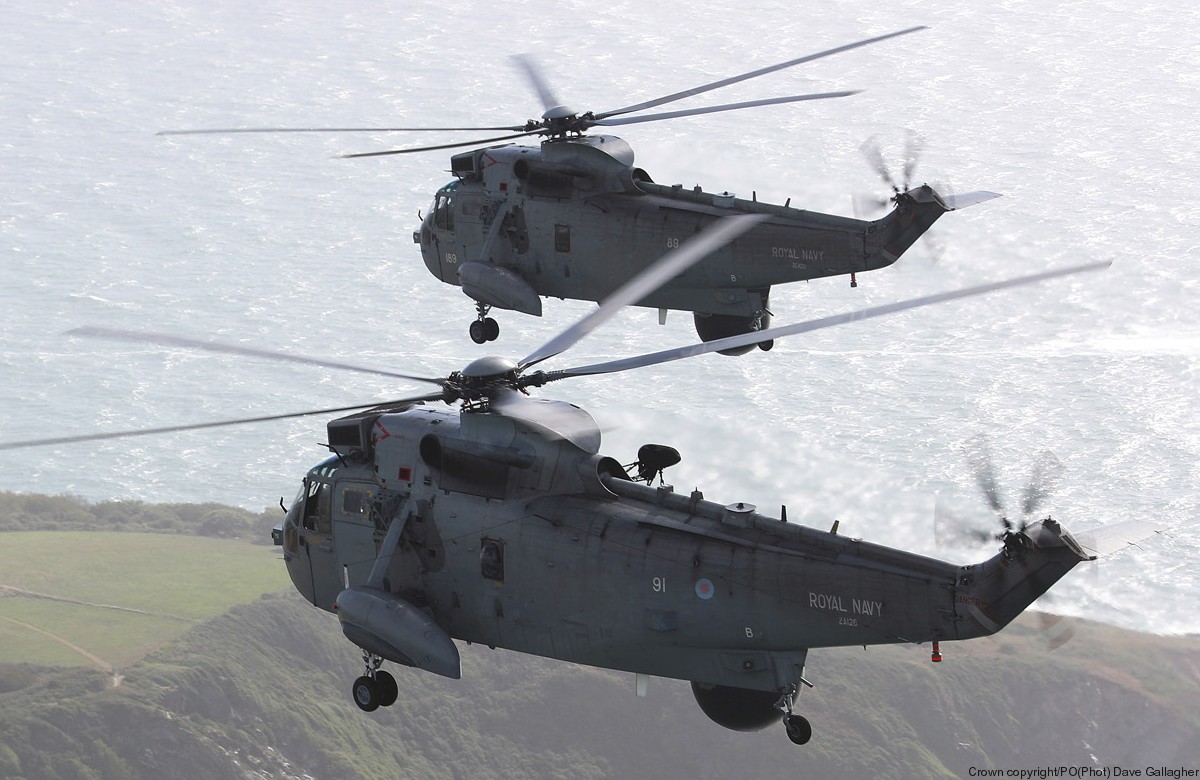 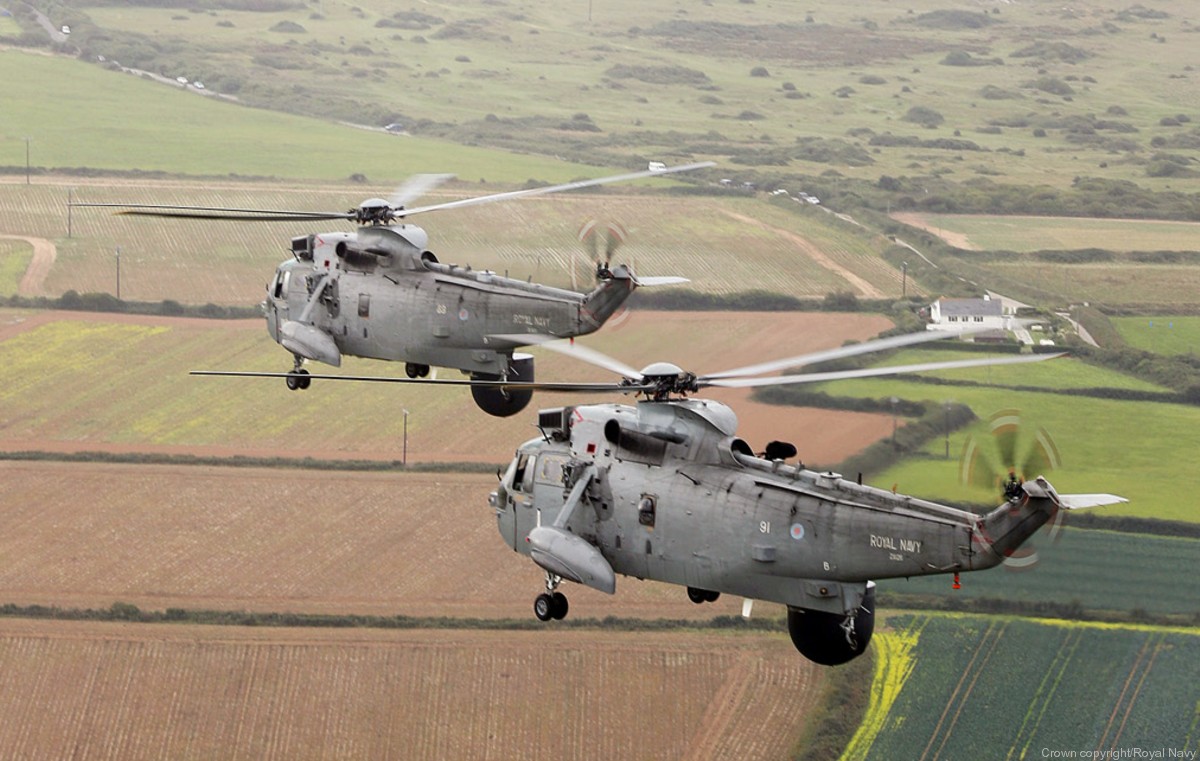 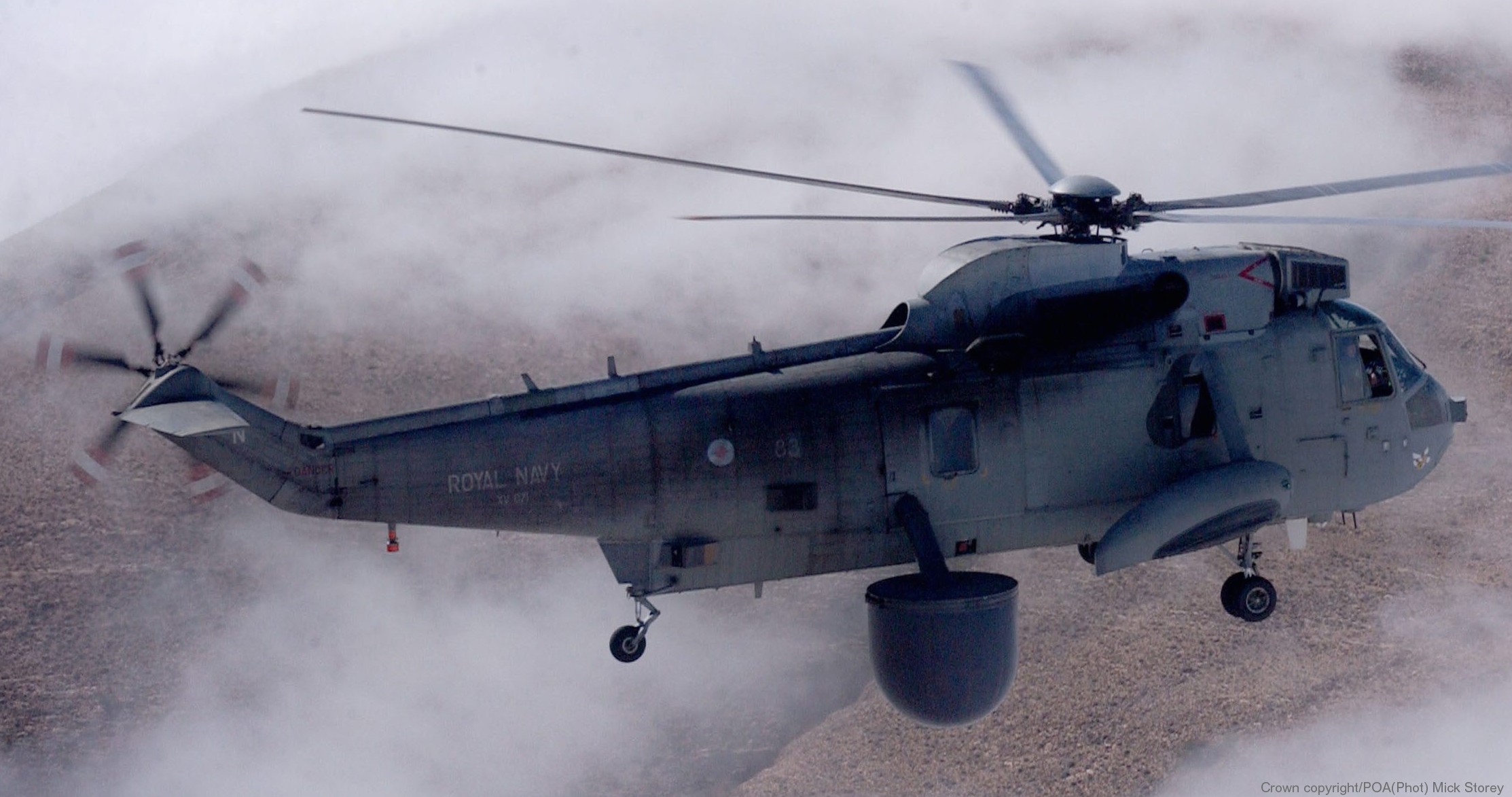 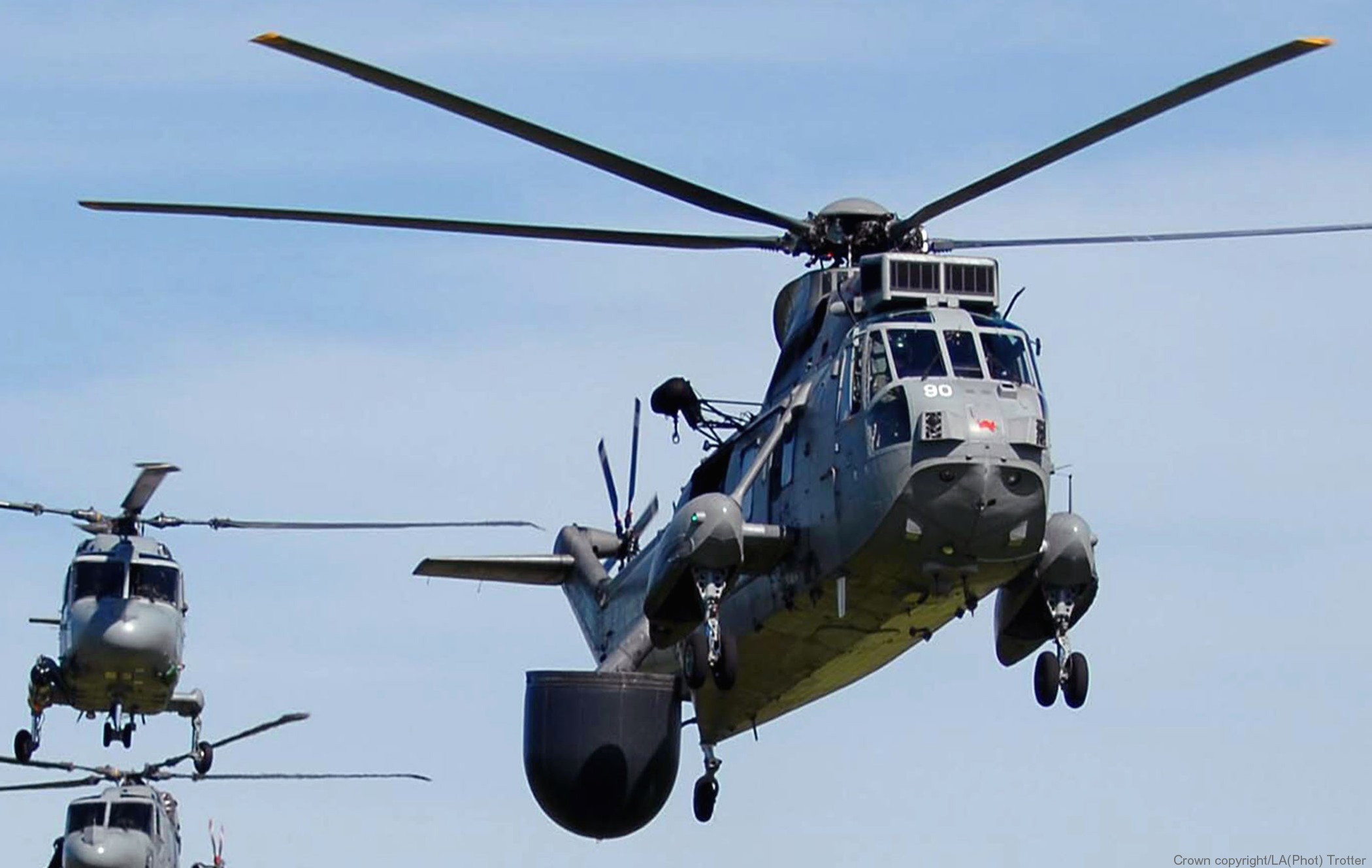 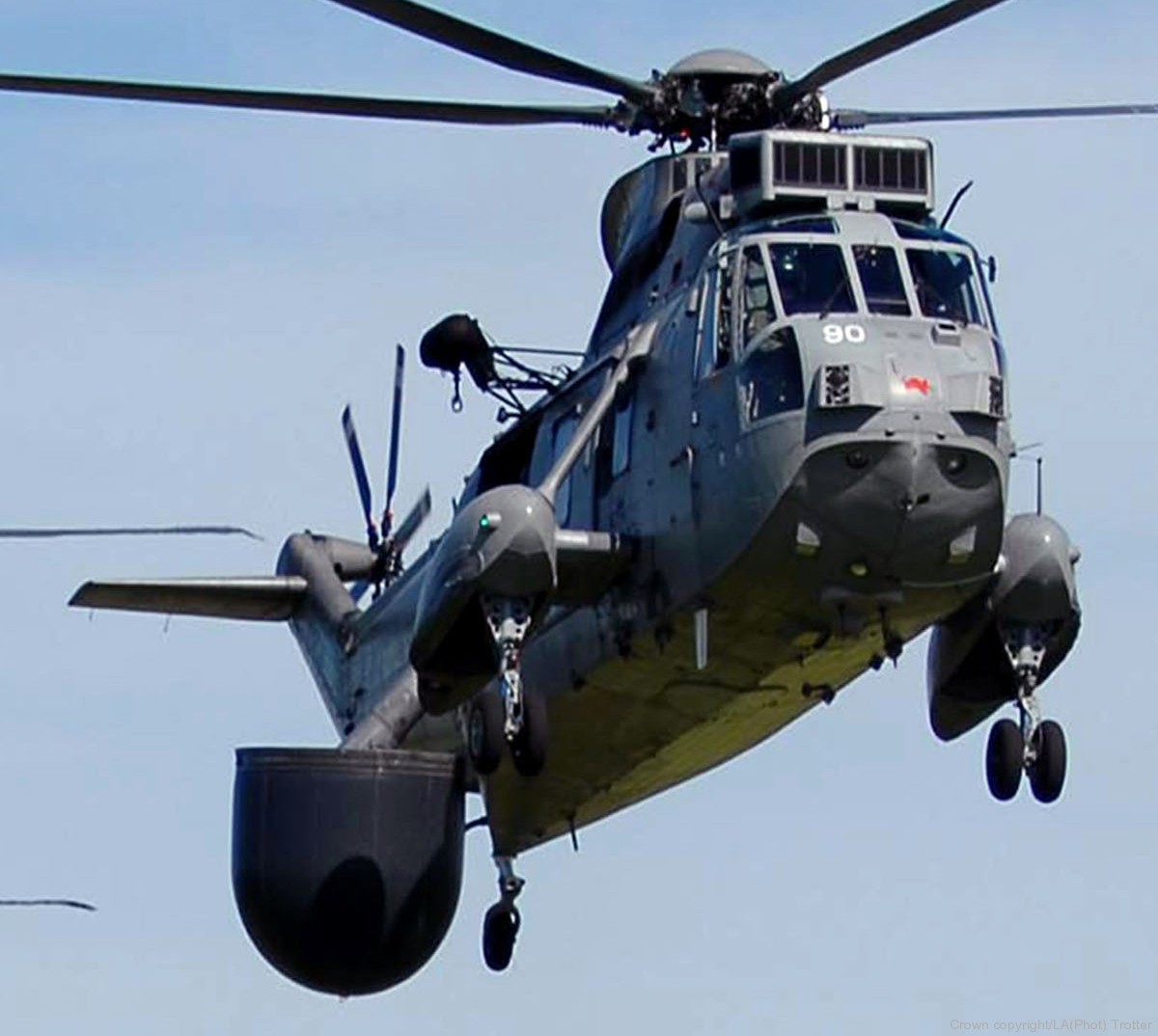 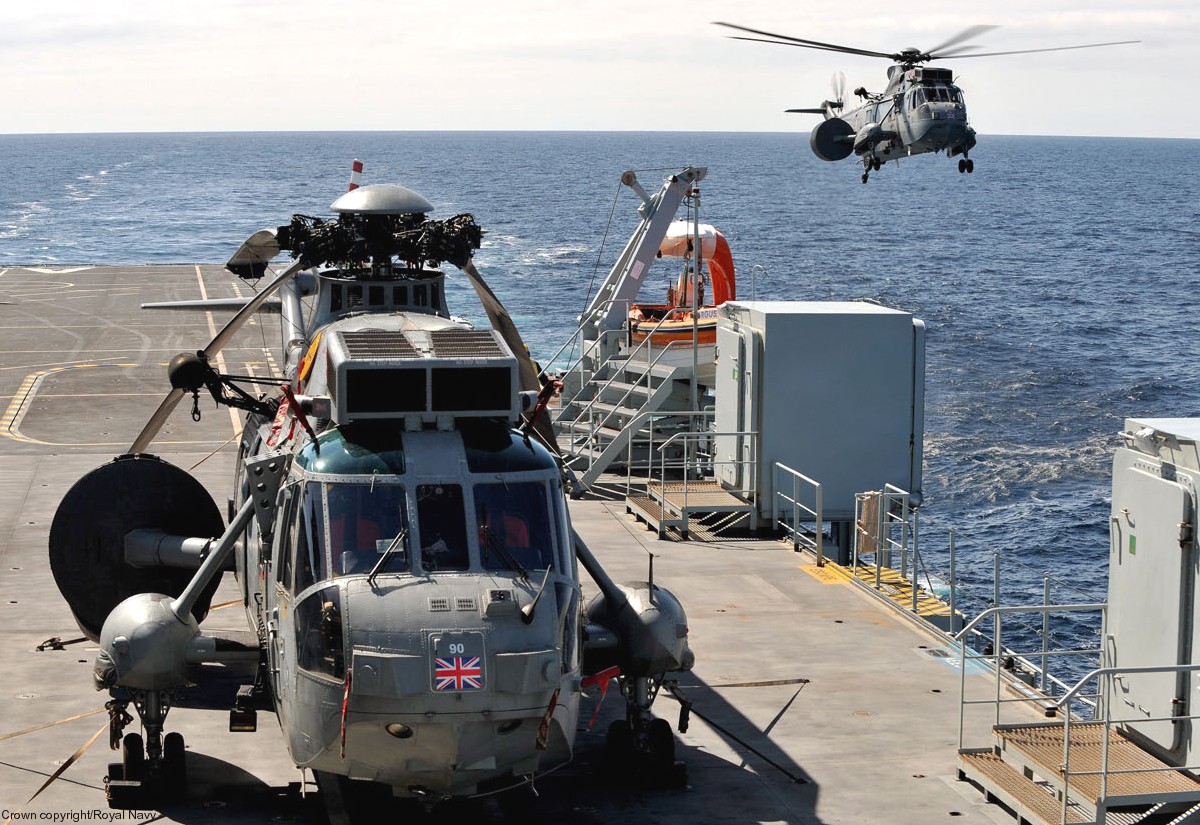 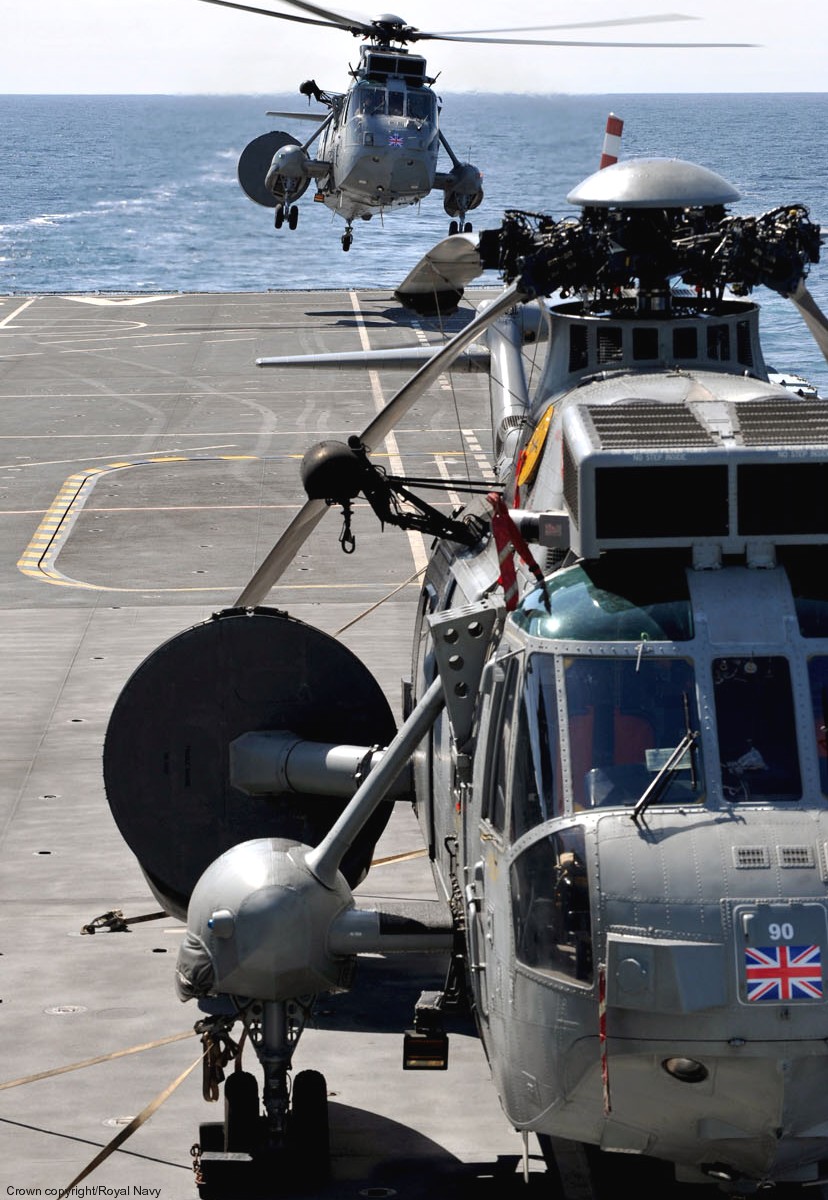 Search & Rescue - Sea King HAR.5 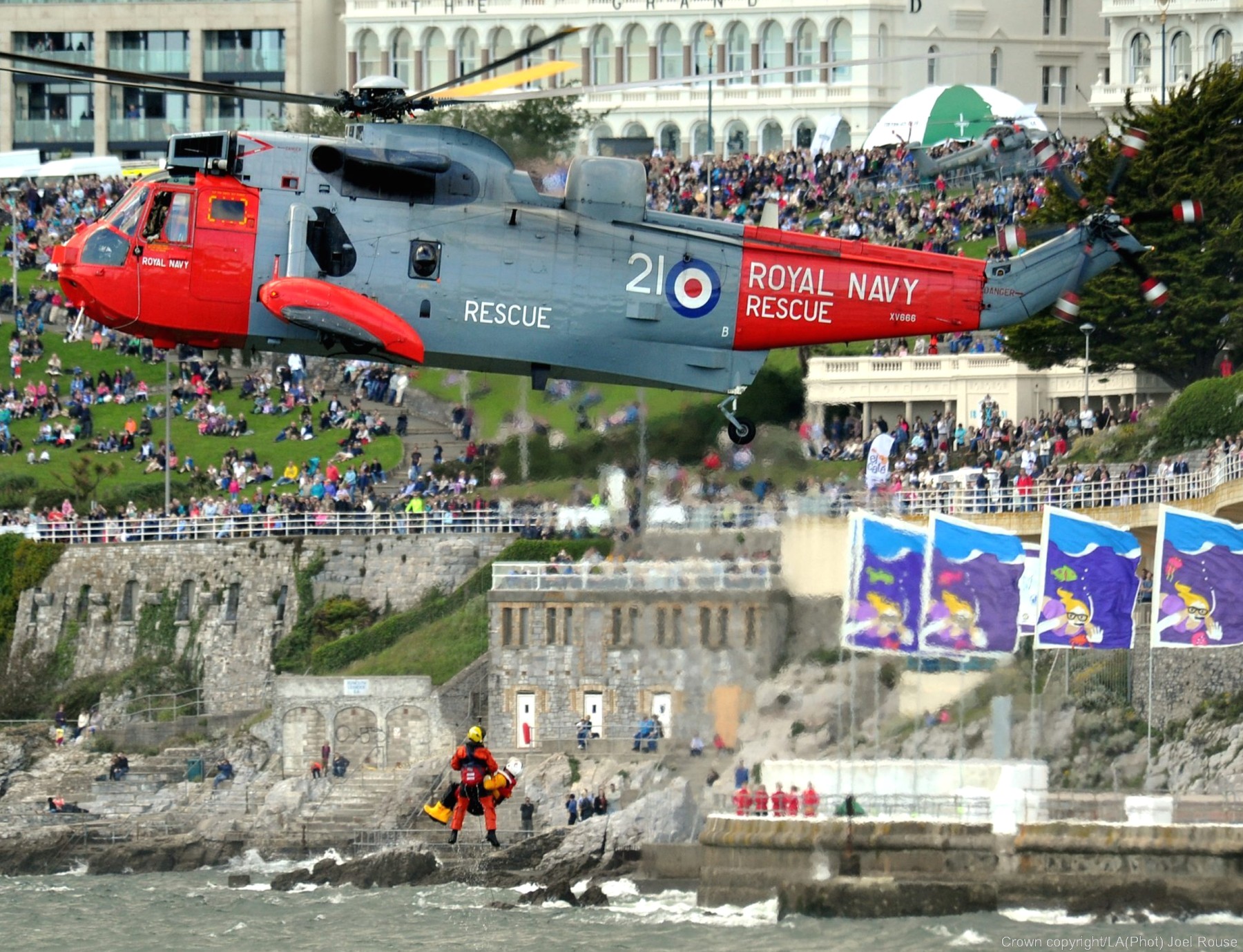 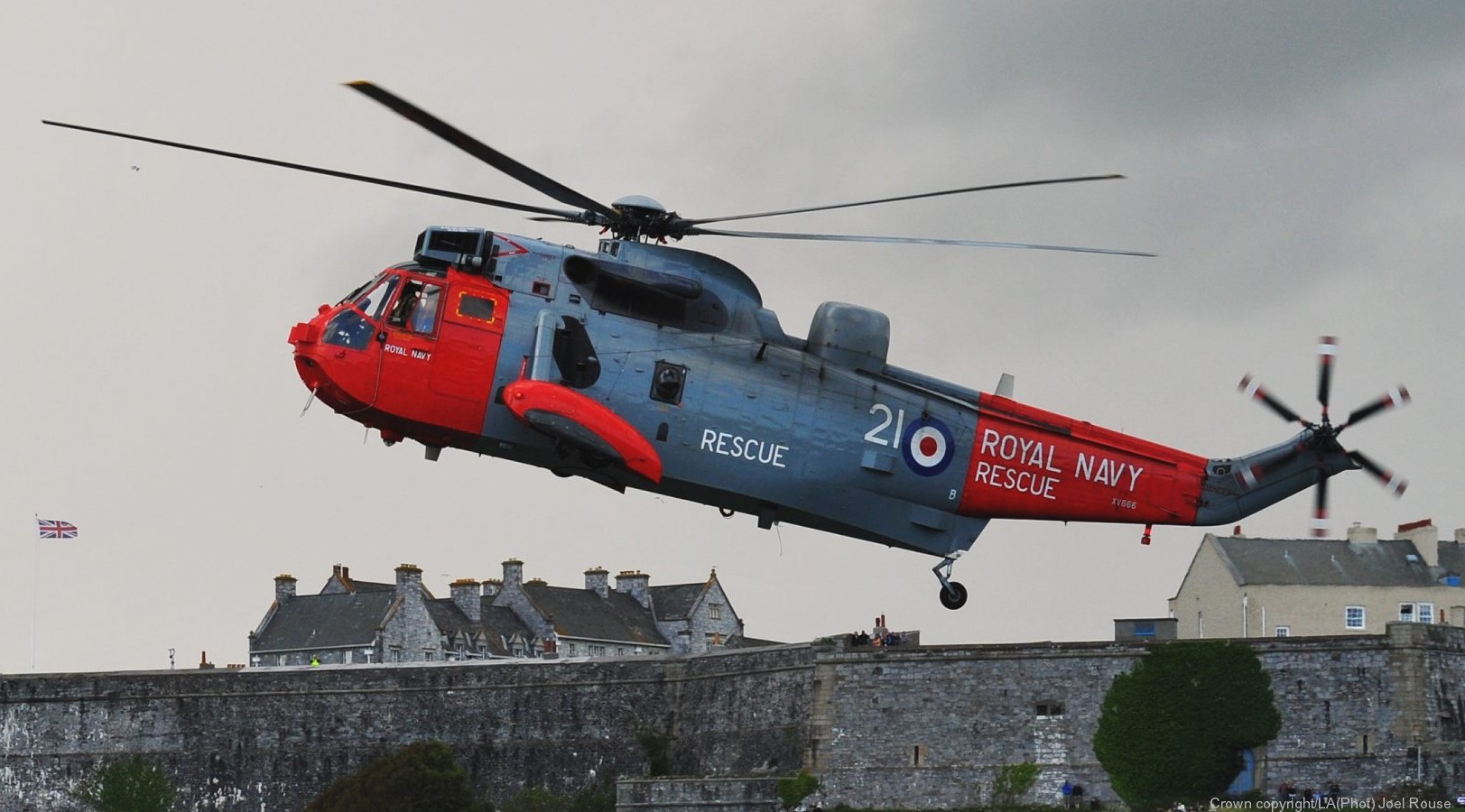 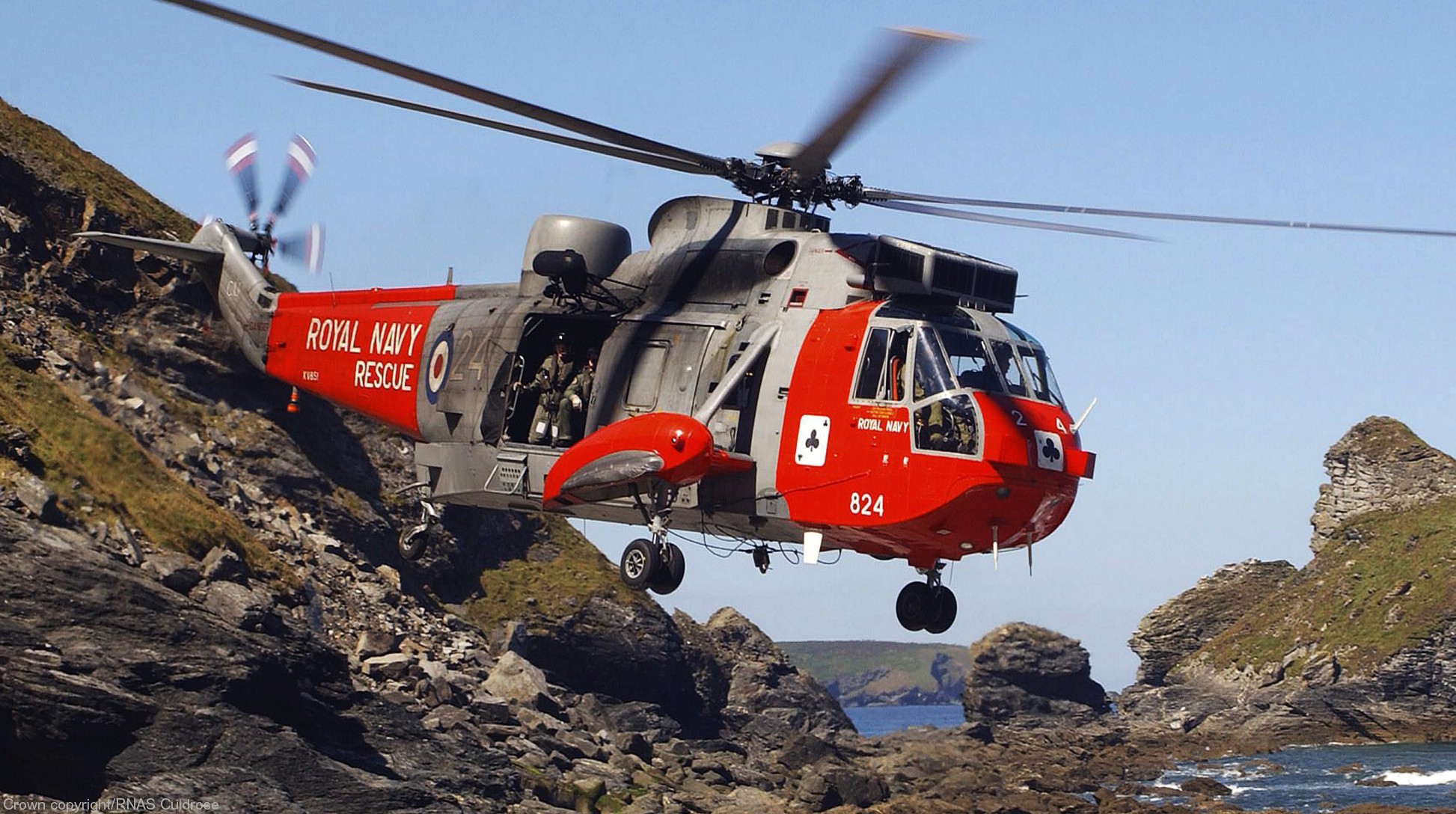 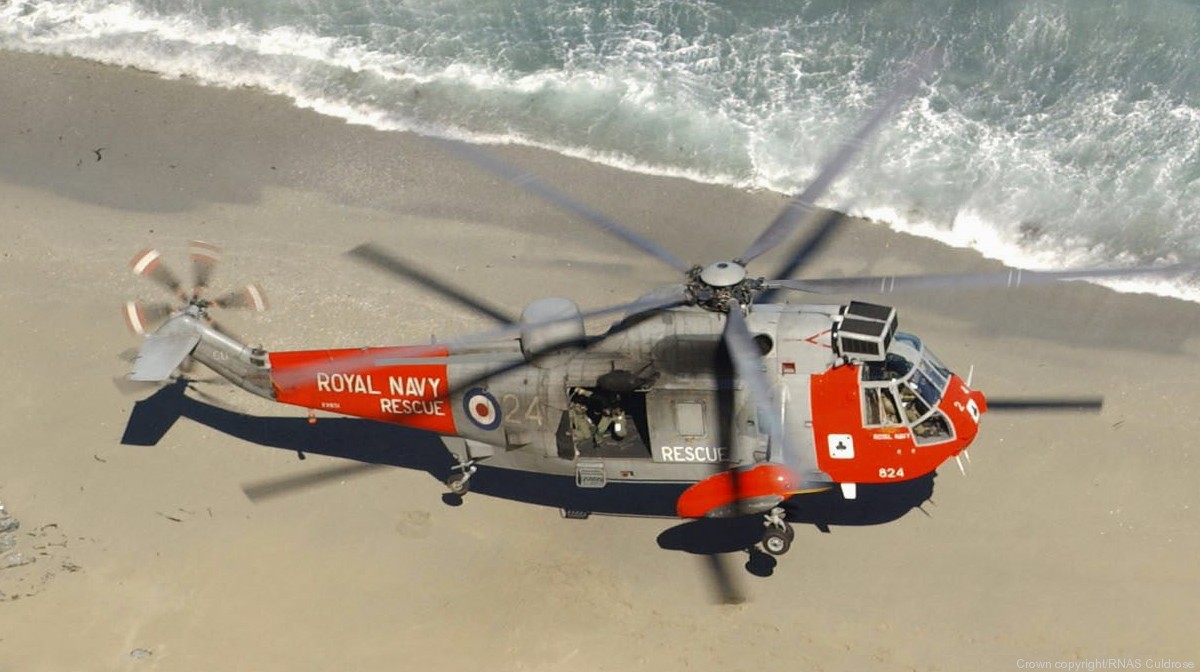 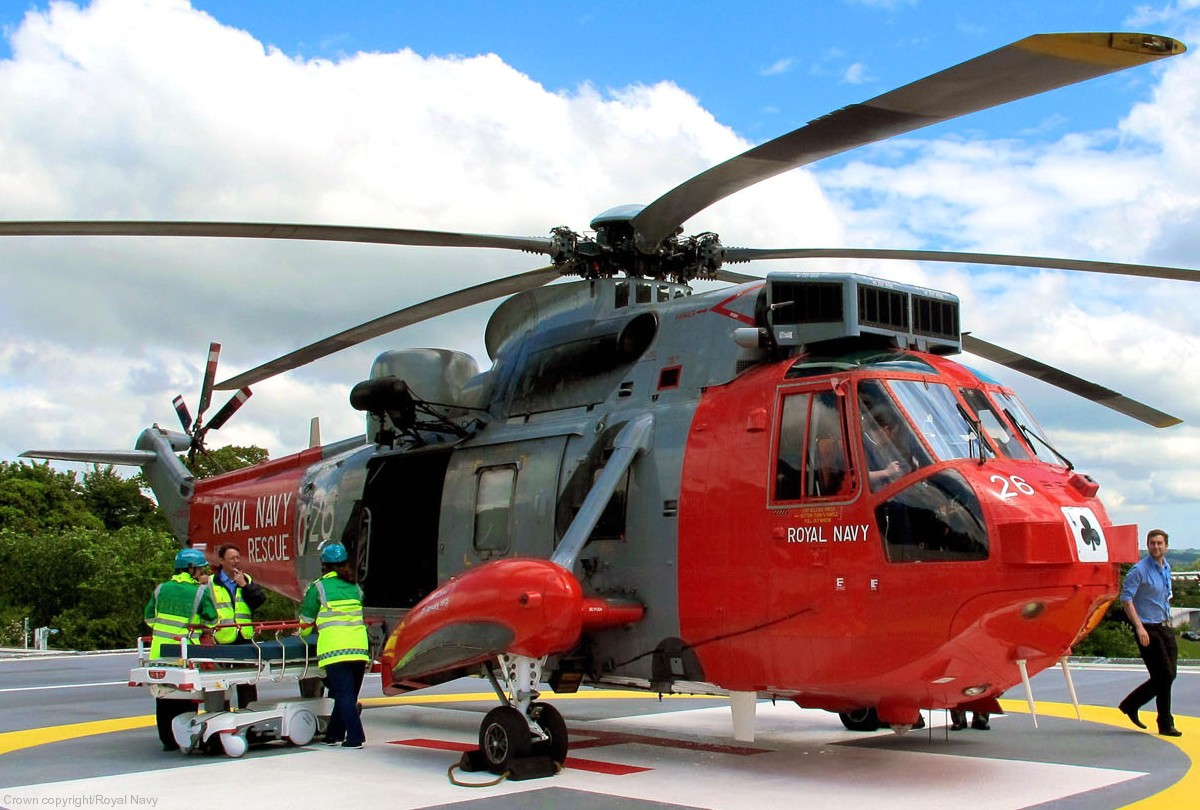 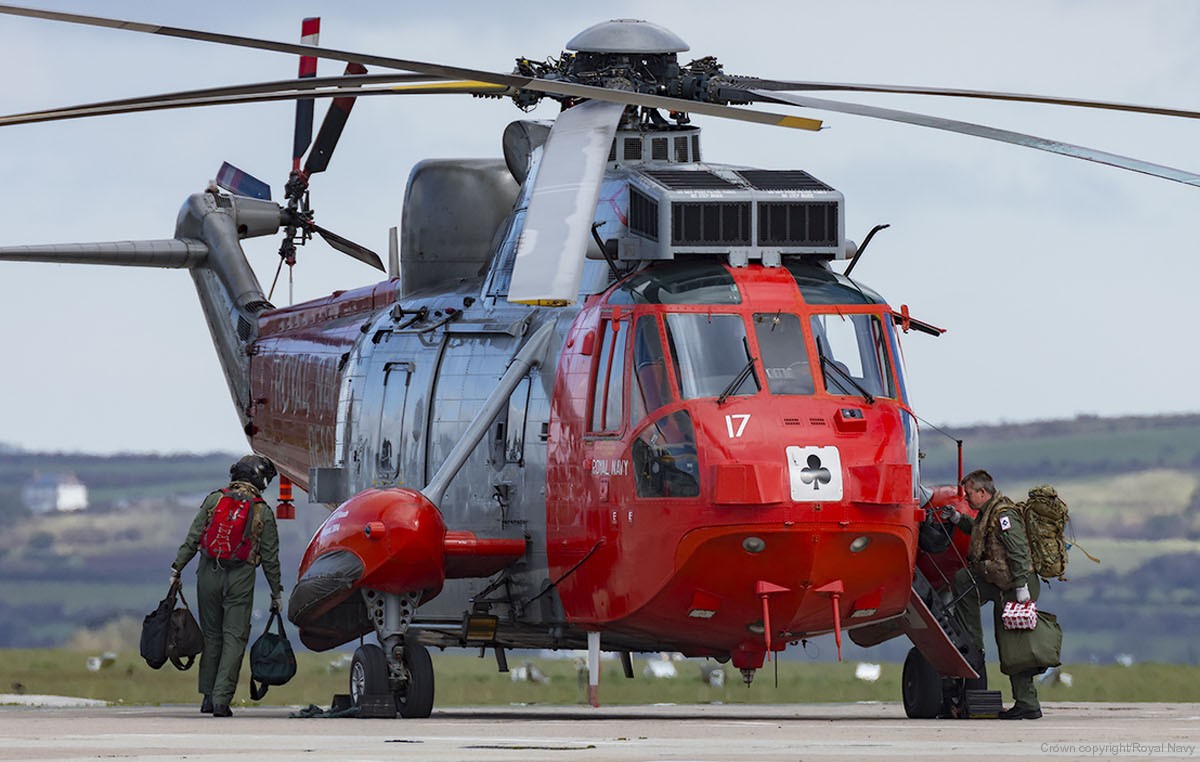 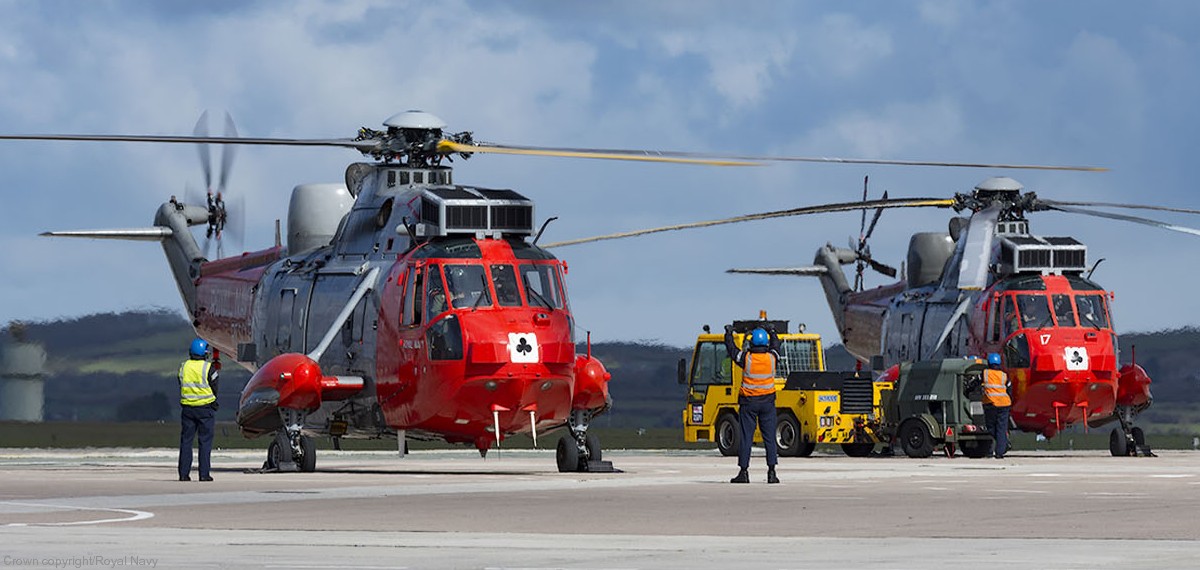 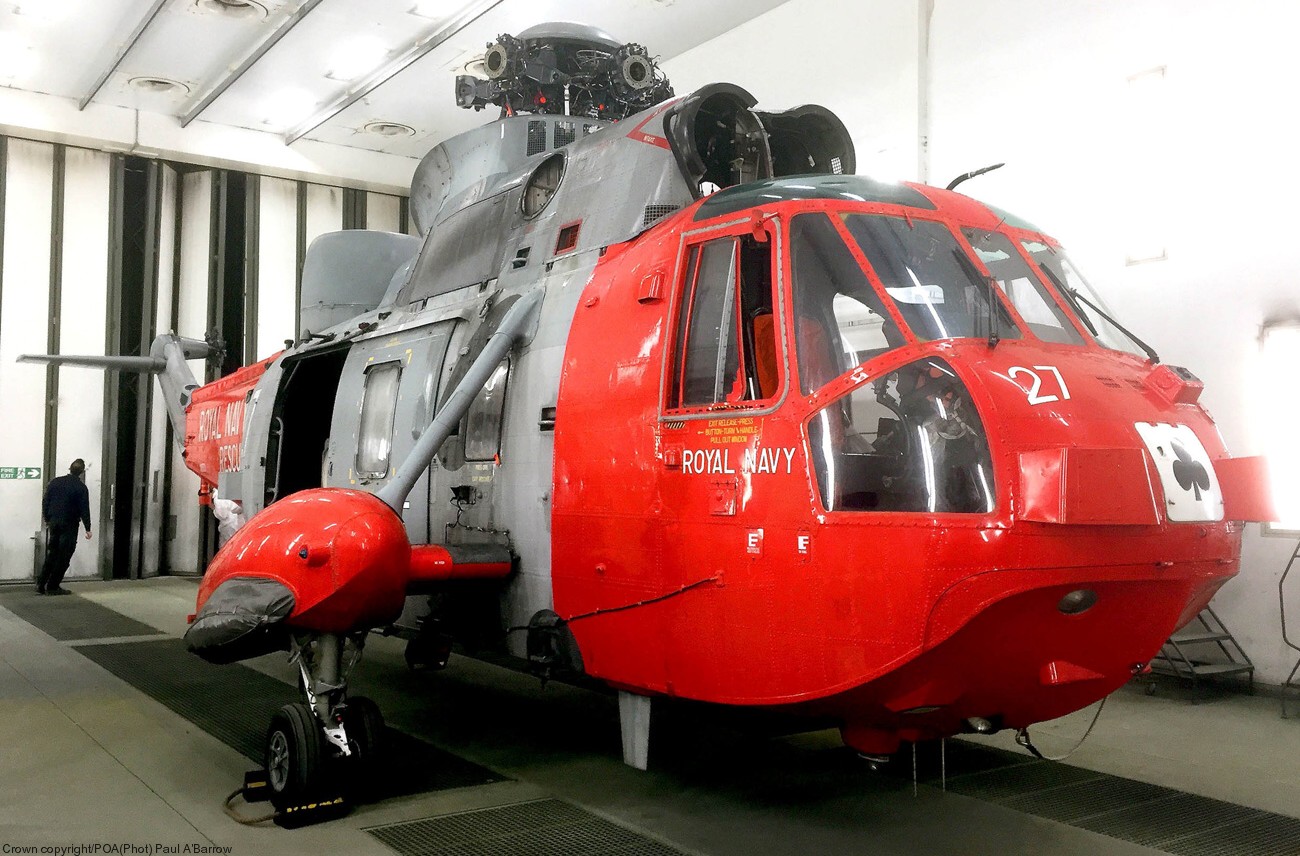 |
|
|
|
|
seaforces.org
|
Royal
Navy start page
| |